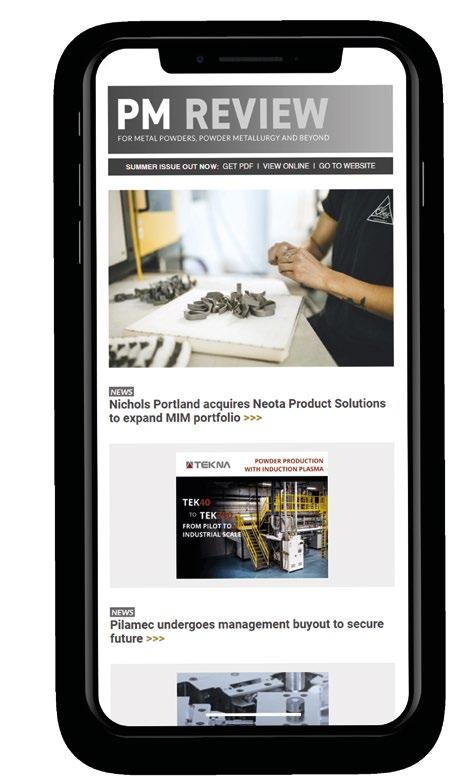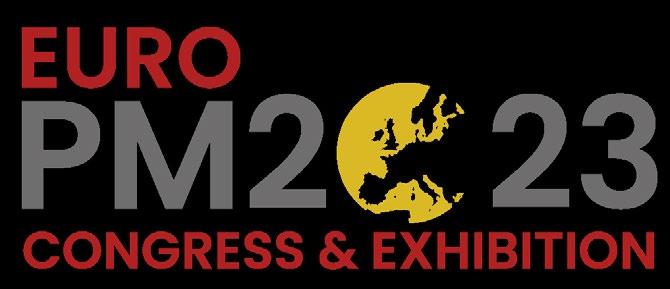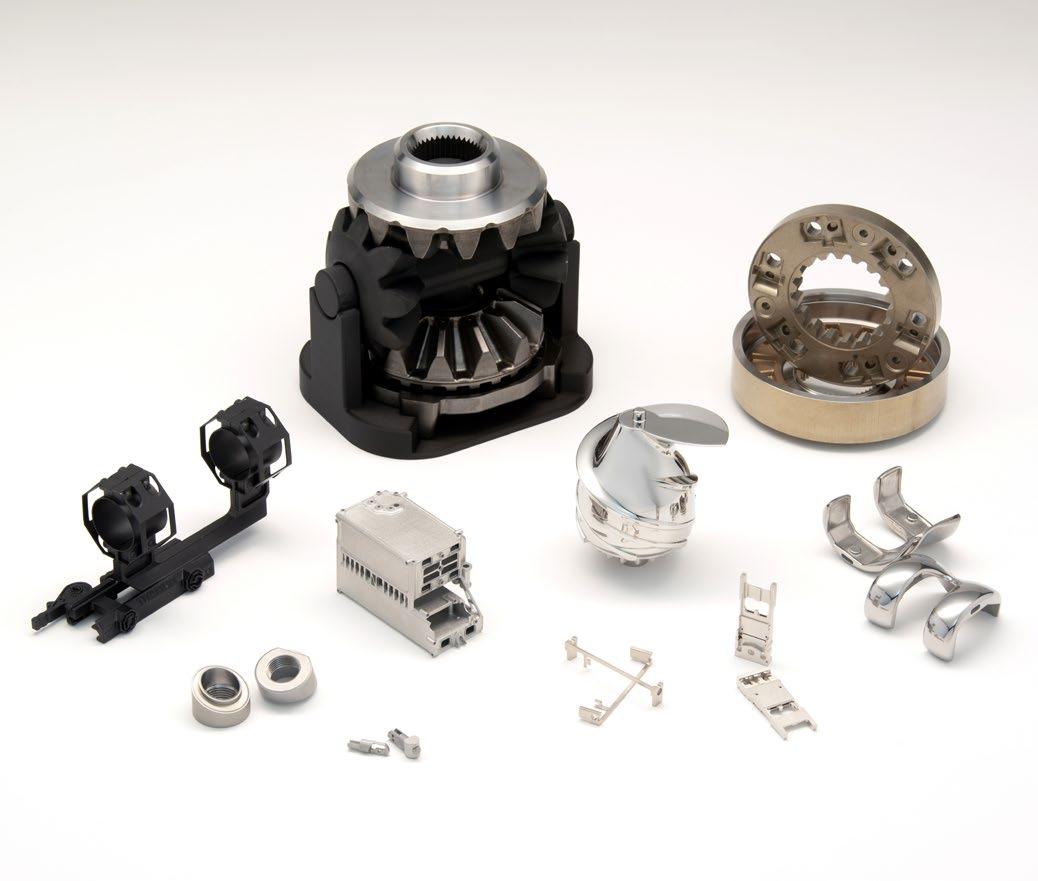

For a sustainable tomorrow
Höganäs AB commits to reduce absolute scope 1 and 2 GHG emissions 51% by 2030 from a 2018 base year.* Höganäs AB also commits to reduce absolute scope 3 GHG emissions from purchased goods and services, upstream transportation and distribution, and business travel 30% within the same timeframe.
*The target boundary includes land-related emissions and removals from bioenergy feedstocks.

Our climate tagret is validated by Science Based Targets initiative.
For more info scan the QR Code
www.hoganas.com
Publisher & Editorial Offices
Inovar Communications Ltd
11 Park Plaza
Battlefield Enterprise Park Shrewsbury SY1 3AF, United Kingdom Tel: +44 1743 469909 www.pm-review.com
Managing Director & Editor
Nick Williams nick@inovar-communications.com
Group News Editor
Paul Whittaker paul@inovar-communications.com
Advertising Sales Director
Jon Craxford Tel: +44 (0) 207 1939 749 jon@inovar-communications.com
Assistant News Editor
Charlie Hopson-VandenBos charlie@inovar-communications.com
Editorial Assistant
Amelia Gregory amelia@inovar-communications.com
Consulting Editor
Dr David Whittaker
Technical Consultant
Dr Martin McMahon
Senior Digital Marketer
Swetha Akshita swetha@inovar-communications.com
Digital Marketer
Mulltisa Moung mulltisa@inovar-communications.com
Production Manager
Hugo Ribeiro hugo@inovar-communications.com
Operations and Partnerships Manager
Merryl Le Roux merryl@inovar-communications.com
Subscriptions
Jo Sheffield jo@inovar-communications.com
Accuracy of contents
Whilst every effort has been made to ensure the accuracy of the information in this publication, the publisher accepts no responsibility for errors or omissions or for any consequences arising there from. Inovar Communications Ltd cannot be held responsible for views or claims expressed by contributors or advertisers, which are not necessarily those of the publisher.
Reproduction, storage and usage
Single photocopies of articles may be made for personal use in accordance with national copyright laws. Permission of the publisher and payment of fees may be required for all other photocopying. All rights reserved. Except as outlined above, no part of this publication may be reproduced, stored in a retrieval system, or transmitted in any form or by any means, electronic, photocopying or otherwise, without prior permission of the publisher and copyright owner.
Submitting news and articles
We welcome contributions from both industry and academia and are always interested to hear about company news, innovative applications for PM, research and more.
Subscriptions
PM Review is published on a quarterly basis. It is available as a free electronic publication or as a paid print subscription. The annual subscription charge is £150.00 including shipping.
Design and production
Inovar Communications Ltd.

ISSN: 2050-9693 (PRINT)
ISSN: 2050-9707 (ONLINE)
© 2023 Inovar Communications Ltd.
This magazine is also available for free download from www.pm-review.com
The transformation of the metal powder industry
As someone who has been involved in the Powder Metallurgy industry for a number of decades, the evolving dynamics of the metal powder production sector are fascinating to observe.
Whilst the declining shipments of iron and steel powders for ‘press and sinter’ PM parts production are an inevitable consequence of the shift towards electric vehicles, established metal powder producers have seized the opportunity to reposition themselves to serve new markets – in particular, Additive Manufacturing (AM).
In the not-so-distant past, of course, many disregarded AM, deeming it unlikely to generate the necessary future volumes to warrant their investment. However, the landscape has undergone a significant transformation since then. In this issue we highlight two interesting examples that serve to illustrate the dynamic state of the metal powder industry.
With PyroGenesis, it is very much a story of a company and powder production technology that was ahead of its time, but now it is back and seeking to capitalise on market growth, particularly for titanium powder used in AM.
Outokumpu is also seeking to capitalise on the market growth created by AM, but enters as a relative newcomer to metal powder production and is focusing on stainless steel and other high alloy powders. This is a notable move, given that it is Europe’s largest producer of stainless steel.
As the metal Additive Manufacturing industry continues to thrive, Powder Metallurgy Review is expanding its unique function as a source of knowledge on advances in metal powder production technologies, providing insight for consumers of metal powder in all end-use industries that, as with all our publications, offers a combination of technical and business perspectives.
Nick Williams Managing Director, Powder Metallurgy ReviewCover image
Prize winning parts from the MPIF’s 2023 Design Excellence Awards (Courtesy MPIF)

Our materials, your life
Rio Tinto Metal Powders (RTMP) is committed to finding better ways to provide the materials the world needs now and in the future.
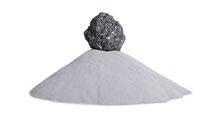
As a producer of iron and steel powders at our plant located in Quebec, Canada, RTMP is a key supplier to the automotive industry, which is undergoing a transition towards electrification. RTMP is contributing to the development of new Soft Magnetic Composite (SMC) materials for electric components, from pump assemblies to small electric motors in e-bikes and EV’s to support the energy transition. Together, we can create a better life for the generations to come.

Find out more at www.riotinto.com
www.qmp-powders.com

51 PyroGenesis Additive: Making waves in plasma atomised metal powder production once again
With the promise of ‘next-generation’ plasma atomisation technology, a large order announced for its titanium powder from the AM industry, and reports of a supply partnership with a major aerospace OEM on the cards, the future looks good for Canada’s PyroGenesis Additive.
In this article, Alan Smith reports on the company’s history in metal powders, its vision for the future, and how a combination of the rise of Additive Manufacturing, a drive towards decarbonisation by heavy industry, and concerns around commodity security have fundamentally changed the landscape for metal powder producers. >>>


59 Outokumpu: Bringing a new dimension to Additive Manufacturing with stainless steel powders

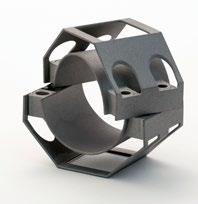
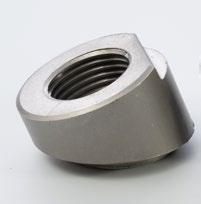
Outokumpu Oyj, headquartered in Helsinki, Finland, is the largest producer of stainless steel in Europe. The development of a new atomisation plant in Krefeld, Germany, marks the company’s entry into the field of metal powders, with the Additive Manufacturing market in its sights.
Here, Outokumpu’s Andoni SanchezValverde Erice, explains how spherical stainless steel powder feedstock can offer high-quality, customisable and sustainable solutions. He also introduces 904L powder, a super austenitic stainless steel, as an alternative to nickel-base alloys in highly demanding applications. >>>
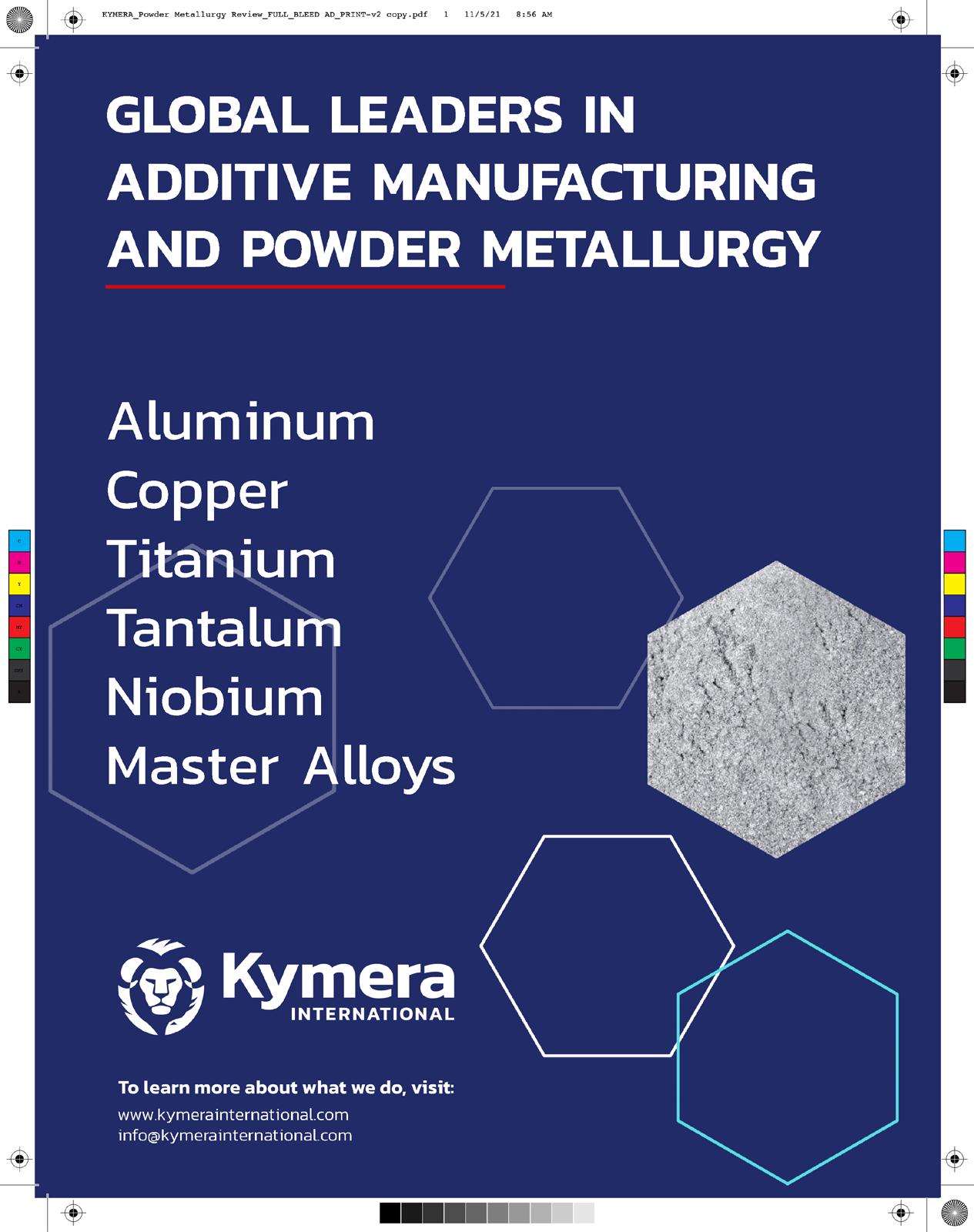
69 Shaping the future: Winners in the 2023 Powder Metallurgy Design Excellence Awards
The annual Powder Metallurgy Design Excellence Awards competition, organised by the Metal Powder Industries Federation (MPIF), is an opportunity for PM part producers to showcase the capabilities of the full range of metal powder-based technologies to a global audience.
This year’s winners were announced at a special ceremony at the International Conference on Powder Metallurgy & Particulate Materials (PowderMet2023), held in Las Vegas from June 18-21. This report reviews the winners in the conventional PM category and the metal Additive Manufacturing category. >>>
77 PowderMet2023 Las Vegas: Post-COVID and on the road to electrification, the PM community takes stock
The Metal Powder Industries Federation’s (MPIF) biggest annual gathering, the International Conference on Powder Metallurgy (PowderMet2023) and the Additive Manufacturing with Powder Metallurgy conference (AMPM2023), took place in Las Vegas from June 18-21. More than ever, the PM industry needed such meeting places to take stock of a rapidly-evolving industrial and political landscape that at once presents huge opportunities for diversification whilst witnessing major uncertainty in core historic markets. Bernard North reports for PM Review magazine. >>>
91 State of the PM Industry in North America: Data and insight from the Metal Powder Industries Federation
A highlight of the Metal Powder Industries Federation’s annual International Conference on Powder Metallurgy & Particulate Materials (PowderMet) is the ‘State of the PM Industry’ presentation, in which key statistical data is presented alongside analysis of the performance of PM technologies in major markets.
This year’s speaker was Rodney Brennen, current president of the MPIF and Chief Operating Officer at Metco Industries Inc. Brennen’s presentation, published here in full, brings the current challenges facing PM into clear focus, as well as highlighting opportunities for growth. >>>
99 Proposing a combined continuous ‘Sinter-Quench’ process for ferrous Powder Metallurgy parts
Press and sinter Powder Metallurgy has never been under more pressure to improve process energy efficiency whilst continuing to enhance the properties and performance of parts. Could the combining of a primary and a secondary process – sintering and oil quenching – open up new opportunities and reduce a component’s carbon footprint?
Ravi P Malhotra, from Malhotra Engineers, Pune, India, shares a new ‘Sinter-Quench’ concept and considers both its technical challenges and commercial opportunities. >>>
Regular features...
09 Industry news >>>
107 Advertisers’ index & buyer’s guide >>>
Our advertisers’ index and buyer’s guide serves as a convenient guide to suppliers across the PM supply chain. In the digital edition of PM Review magazine, available at www. pm-review.com, simply click on a company name to view its advert, or on the company’s weblink to go directly to its website.
110 Industry events >>>


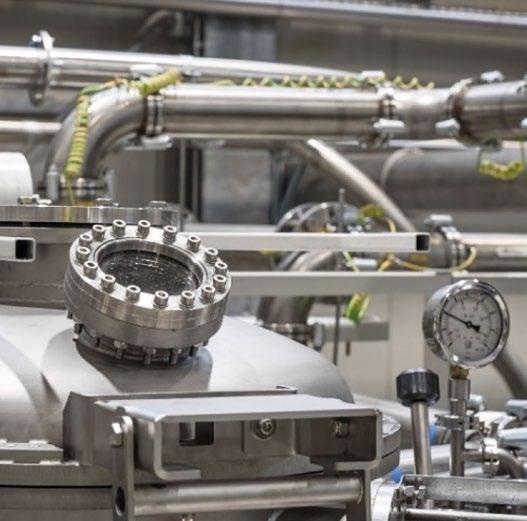






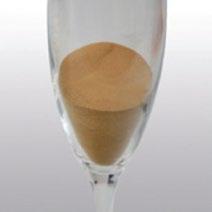
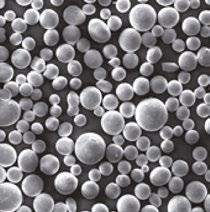

YASA’s electric motor drives MercedesBenz Vision One-Eleven concept

Axial-flux electric motors developed by YASA Ltd, a wholly owned subsidiary of Mercedes-Benz AG, have been showcased as part of the new Mercedes-Benz Vision One-Eleven concept car unveiled at the Mercedes International Design Centre in Carlsbad, California, USA.
Containing a number of pressed stator cores manufactured from soft magnetic composite (SMC) iron powder, the axial-flux motors are said to offer best-in-class power and torque densities and are suitable for both hybrid and pure electric vehicle applications. In contrast to common radial motors, seen in the majority of electric vehicles today, YASA’s axialflux motor requires one-third of the space, is one-third of the weight and delivers double the torque density.
“YASA’s vision has always been to make electric cars as light and sustainable as possible by reducing the electric motor’s mass and use of materials – while simultaneously maximising its efficiency,” stated Tim Woolmer, YASA’s founder and Chief Technology Officer. “In addition to delivering a step-change in EV performance, our axial-flux electric motor is also creating exciting new possibilities for car designers. We’re proud that YASA is a part of this truly visionary concept and are looking forward to resetting the bar for electric driving experiences.”
The typical radial flux motor has limitations on the number of times it can be driven hard. As the copper windings heat up, electromagnetic resistance increases and the available power reduces. Moving from traditional radial designs to YASA’s axial flux design, however, enables
direct cooling of the copper, thus enabling repeatable acceleration and access to peak power for the driver. Further, the axial-flux motors use 60-80% less iron and much less copper than conventional e-motors.
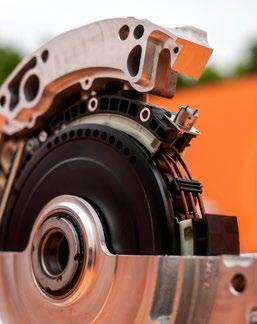
Markus Schäfer, a member of the Board of Management of MercedesBenz Group AG and the company’s Chief Technology Officer, added, “The Mercedes-Benz Vision One-Eleven combines breathtaking design with groundbreaking powertrain technology. Like its historical namesake, it explores new paths for the future of sporting performance. At the heart of the compact and extremely efficient powertrain is the innovative YASA axial-flux electric motor.”
“[The axial-flux motor] offers a motorsport-like power output from a considerably smaller package. This makes the YASA axial-flux motor ideal for electric high-performance vehicles. Combined with the liquidcooled cylindrical-cell battery with Formula-1 inspired cell chemistry,
the Mercedes-Benz Vision OneEleven is yet another proof point for the broad performance spectrum encompassed by our four-pronged development strategy for electric drive,” Schäfer added.
www.yasa.com
www.mercedes-benz.com
Miba’s full year revenue exceeds € 1 billion for first time
Miba AG, Laakirchen, Austria, has reported that, for the first time, its annual revenue passed the €1 billion mark. Figures published for its fiscal year ending January 31, 2023, showed revenue of €1.11 billion, representing an almost 15% year on year growth. Whilst every business area grew, the majority (59%) of this revenue came from the industrial goods market. The remaining 41% of revenue was driven by the automotive sector.
“As our next milestone, we have set ourselves the goal of growing to a revenue of €1.5 billion by 2027,” stated F Peter Mitterbauer, Miba’s CEO. To achieve this, the company wants to use the opportunities arising from the trend for decarbonisation and electrification. “On the basis of our corporate mission ‘Technologies for a cleaner planet,’
we want to develop and produce technologically demanding components for greater efficiency and sustainability along the entire energy value chain – thus for the generation, transmission, storage and use of energy. In the past fiscal year alone, our revenue from technologies for wind power has more than doubled.”
Miba notes a number of uses for its products in wind turbines, including the bearings for the gear and rotor main bearing, friction materials to safely slow down the extremely heavy rotor blades, as well as power resistors and cooling technologies to control and protect the electronics. Miba also produces milling machines for the assembly of the large tube elements needed for offshore wind turbine towers. The company also expects to see
Syntagma Capital completes acquisition of Erasteel
Syntagma Capital, based in Brussels, Belgium, has announced that it has completed its acquisition of Erasteel, Paris, France, from Eramet. The company will continue to operate under the Erasteel brand, providing its wide range of Powder Metallurgy steels and high speed steels.
Erasteel generated approximately €275 million in revenues in 2022, primarily serving the aerospace, automotive and industrial sectors
across its six industrial sites in France, Sweden and China. The business employs around 860 employees worldwide.
“Despite a very challenging M&A market, we continue to find attractive carve-out opportunities to put capital at work and provide divestiture solutions that deliver speed and certainty. We are excited by Erasteel’s potential and look forward to working with management on
growth due to market opportunities in e-mobility. Thus far, Miba has invested €80 million in establishing this new business area and has developed its product portfolio since 2016, before the recent boom in battery electric vehicles. To further accelerate this growth path, the company opened its first battery production plant in Bad Leonfelden, Germany, which is operated by solely owned subsidiary Miba Battery Systems (formerly Voltlabor).
As Miba’s equity ratio has increased to 52.8%, the company was able to invest €100 million in the past fiscal year – €56 million in property, plant and equipment, and €44 million in research and development (a ratio of 4%).
In the past fiscal year, Miba also made a substantial investment of €2.6 million in employee training, with around 240 apprentices. As part of the group’s growth, some 100 vacancies are currently being filled.
www.miba.com
the global growth of the company,” stated Sebastien Kiekert Le Moult, Syntagma Managing Partner.
Syntagma has also shared that Kerstin Konradsson will be joining Erasteel as CEO. Frank Coenen, a Syntagma Partner, commented, “We are pleased to announce that Kerstin Konradsson is joining Erasteel as CEO. She brings very valuable experience in the metallurgy world after having been the president & CEO of Boliden Smelters as well as having held various management positions within Åkers and SSAB. We also welcome Beatrice Charon, former VP of Strategy at Constellium, to the advisory board of Erasteel.”
“We intend to leverage our global experience in metals and Erasteel’s extensive R&D and technical knowhow, global presence and strong customer relationships to further enhance its growth, both organically and through targeted M&A. We also intend to accelerate the development of the recycling division of Erasteel in France,” Coenen concluded.
Erasteel offers a wide range of Powder Metallurgy steels and high speed steels (Courtesy Erasteel)

www.syntagmacapital.com
www.erasteel.com
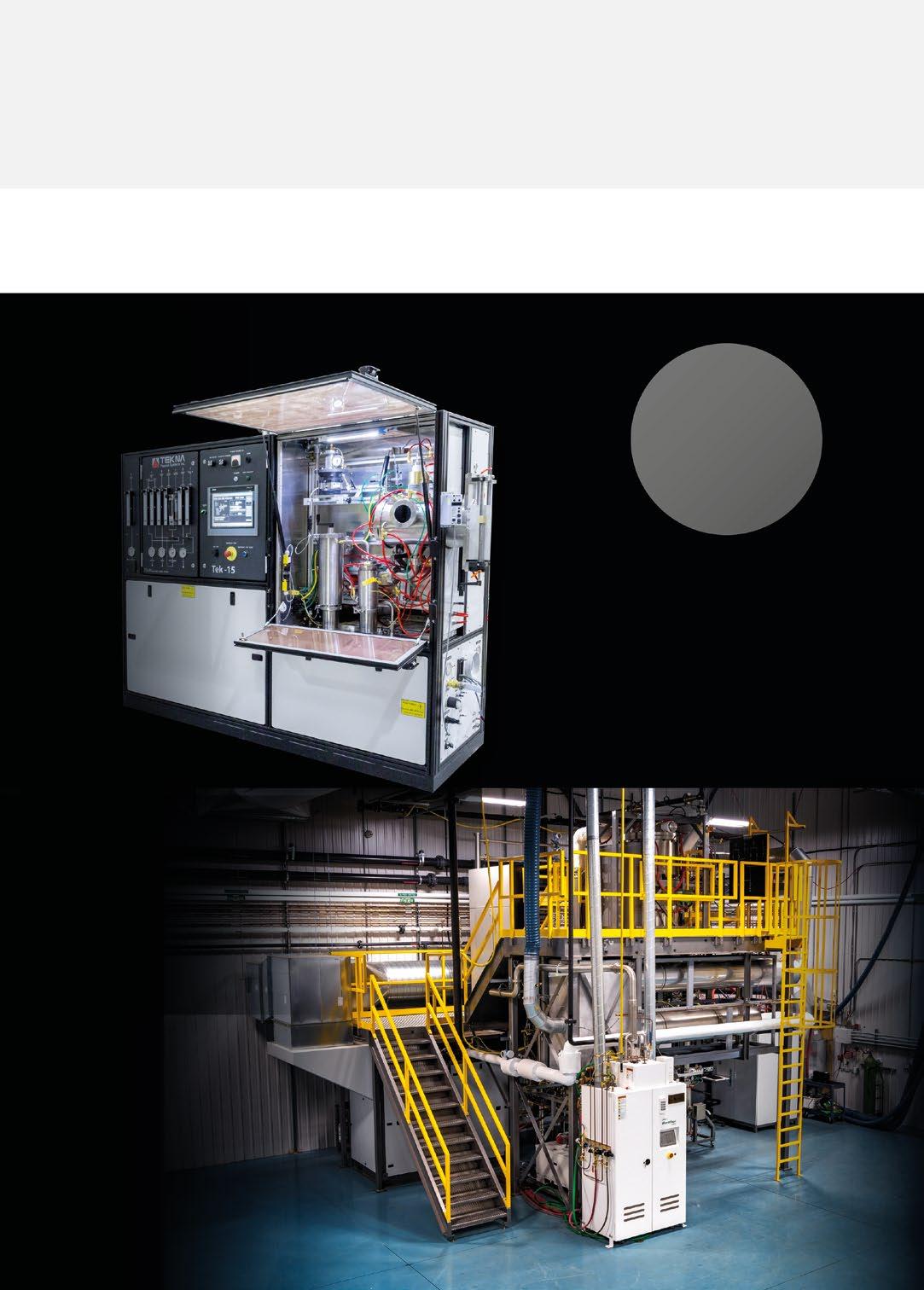
CB-Ceratizit acquires majority of Changzhou CW Toolmaker
CB-Ceratizit, a joint venture company of Ceratizit, part of the Plansee Group, has acquired 70% of all shares of Changzhou CW Toolmaker Inc, headquartered in Changzhou City, China. The privately owned company specialises in the design, production and sales of tungsten carbide cutting tools.
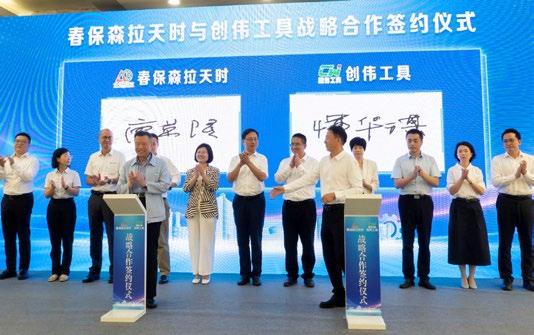
Changzhou CW Toolmaker was founded in 1998 and has invested in more than 160 machines for production and product inspection, mainly from well-established European brands. Customers include those in the aviation, railway and electronics sector, as well as mould and die industries.
The acquisition of Changzhou CW Toolmaker was said to be a critical component of CB-Ceratizit’s growth strategy in Asia. Dr Andreas Lackner, Speaker of Ceratizit’s Executive Board, shared, “We want to strengthen our footprint in the production landscape of solid carbide cutting tools in China and Asia Pacific. The acquisition of Changzhou CW Toolmaker helps us to reach this goal.”
The Chinese company’s experience also provides Ceratizit with the opportunity to enter new markets. Andreas Fritz, Ceratizit President of the Regional Unit Asia Pacific, added, “The expansion of the Ceratizit portfolio to include machining solutions for electronic components in the 3C sector (computers, communications, and consumer electronics) is crucial for our success. By being able to draw on the high-quality production technologies and extensive manufacturing capacities of both CW and Ceratizit, we offer our customers significant added value throughout the full value chain.”
CB-Ceratizit has acquired 70% of all shares of China’s Changzhou CW Toolmaker Inc (Courtesy Ceratizit)
Schunk Group to invest €125M in worldwide facilities
The Schunk Group, headquartered in Heuchelheim, Germany, has announced plans to maintain a high level of investment through 2023, with some €125 million allocated to its facilities worldwide this year. The funds will benefit the company’s Heuchelheim site in particular, with an investment of €54 million planned for that location alone.
Including the 2023 investment, Schunk has invested a quarter of a billion euros at the Heuchelheim site in the last ten years alone. Some of the more significant investments made in recent years include the construction of a highly automated production facility for Powder Metallurgy products, new logistics, and new production processes for
manufacturing metal-containing carbon brushes. Additionally, a clean room has been established for the production of equipment for microelectronics. An innovation centre has also been set up for the development of new materials and technologies, including bipolar plates for the use of hydrogen.
“We have not only weathered the challenges and crises of recent years well, we have also used them to better position ourselves for the future,” stated Dr Arno Roth, CEO of the Schunk Group.
“Schunk has had its headquarters in Heuchelheim for over 100 years. As the largest and oldest location and headquarters of the company, Heuchelheim has a
Both companies agreed not to disclose the financial details of the transaction.
www.ceratizit.com
special significance for us. That is why we will continue to develop our ‘Windhof’ in the future with sustainable and continuous investments and drive forward the retreading of the site,” emphasised Dr Roth.
Despite the heavy investment in the Heuchelheim site, the company is also investing in a variety of other locations in the Central Hesse region of Germany. Since 2016, Schunk has reportedly invested around €75 million in the largest site of its subsidiary Weiss Technik in ReiskirchenLindenstruth, where a new logistics centre will start operations this year. Also, around €40 million has been invested at the Wettenberg site since 2016, including a new production facility for its subsidiary Schunk Sonosystems.
www.schunk-group.com



Amaero to establish titanium powder facility in United States



Amaero International Limited, headquartered in Notting Hill, Victoria, Australia, has announced that it will locate its flagship 827-tonne a year titanium powder manufacturing facility in Cleveland, Tennessee, USA.
Amaero had previously announced it would build the facility in the United Arab Emirates, but changed plans following a campaign by the state’s government to attract the company.
Amaero also intends to relocate its R&D and corporate headquarters to the Tennessee location, which is convenient to the Oak Ridge National Laboratory and the University of Tennessee, Knoxville.
The decision to locate in Tennessee was made with the belief that it has the strategic advantage of a highly efficient and pro-growth business environment,
as well as close proximity to primary customers, R&D partners, highly skilled employees and robust capital markets. Locating in the US is also expected to give Amaero more business development flexibility from an export control and technology transfer perspective.
Amaero reported it has received commitments for economic incentives from the Tennessee Department of Economic and Community Development, the Cleveland-Bradley Chamber of Commerce, the Tennessee Valley Authority and the Oak Ridge National Laboratory. It has also received a long-term commitment from the Tennessee Valley Authority (TVA) for investment credit and a long-term electricity rate subsidy. The TVA’s proposal includes a ten-year commitment for electricity rates that will
be lower than the subsidised rates in the UAE and 85% less than the prevailing rates in Victoria. Further, the TVA is said to have established a strong infrastructure, including a dedicated substation for Spring Branch Industrial Park.
Amaero has also signed a lease to be the sole tenant in a 12,000 m 2 manufacturing facility in the Spring Branch Industrial Park. In conjunction with the lease, a high bay extension is due to be designed and purpose-built for the installation of four electrode inert gas atomisers (EIGAs). The lease has a primary term of fifteen years, including an allowance for tenant improvements and an Option to Purchase. The lease payments are said to be approximately 75% less than the proposed built-to-suit facility in the UAE. It is expected that Amaero will occupy the facility in April 2024 and the high-bay extension in July 2024.
www.amaero.com.au

Sandvik Group reports double-digit growth in 2023 second quarter
Sandvik AB, Stockholm, Sweden, has released its interim report for the second quarter of 2023. Order intake was reported to be SEK 31,660 million, corresponding to a total growth of 10%, and 7% at fixed exchange rates, of which organic growth was 3%. Total revenues reportedly amounted to SEK 32,243 million, a total growth of 19%. At fixed exchange rates, growth was 16%, of which 12% was organic.
“We delivered a solid set of results in the second quarter. Revenues grew by double digits for the 9 th consecutive quarter, leverage was strong and operating margin was within our target range. We made progress in our shift to growth strategic focus areas. For example, we saw strong momentum in mining automation, and we won important business in surface mining. A few acquisitions were made, adding strength to our competence and offering. We also kept a good innovation pace, launched a higher-capacity battery for our BEV loaders and trucks and new steel turning grades, specifically tailored to capture opportunities within the mid-market,” shared back firing of Sandvik.
It was reported that strong demand continued in aerospace driven by higher activity post Covid, and consequently increased investments. Solid backlogs within automotive were said to drive demand in North America and Europe – this was, however, off-set by negative impact from China. General engineering and energy were stable year on year, with lower volumes compensated by pricing. In Europe, energy demand was reported to be positive.
Sandvik Manufacturing and Machining Solutions noted overall stable development in North America and Europe, while Asia continued to show a negative development year on year.
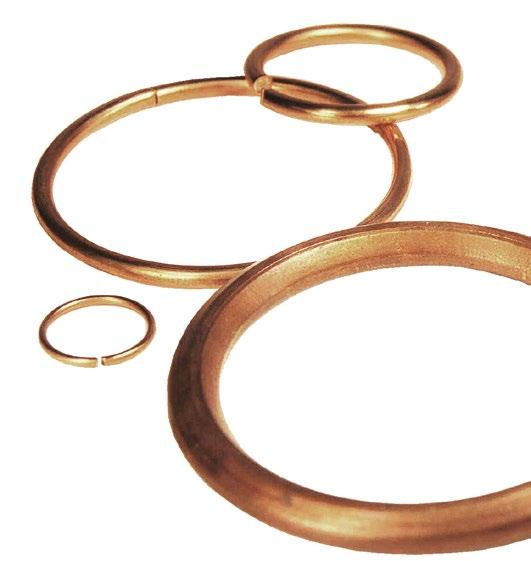
Widing shared, “A positive order intake development was seen in North America and Europe. The recovery in China after the re-opening has been slower than expected, with a weaker sentiment also signalled in the recent

PMIs. The daily order intake in the first two weeks of July was stable compared to the second quarter.”
Adjusted EBITA reportedly grew by 28% and amounted to SEK 6,599 million, corresponding to a margin of 20.5%. Higher volumes, pricing and reduced air freight were said to have contributed positively to the margin.

www.home.sandvik
IperionX to produce titanium plate components for Lockheed Martin
IperionX Limited, based in Charlotte, North Carolina, USA, has received an order from Lockheed Martin, headquartered in Bethesda, Maryland, USA, for the delivery of titanium plate components. The components will be made from IperionX’s US-manufactured angular titanium powder using its patented Hydrogen Sintering and Phase Transformation (HSPT) Powder Metallurgy process.
HSPT enhances the microstructure of titanium parts, delivering strength and fatigue properties comparable to wrought titanium alloys, resulting in higher performance and durability for the components.
Titanium is a critical material for many defence systems, including military fighter aircraft and engines, munition and weapon components, naval platforms and military ground vehicles. Lockheed Martin is reported to utilise titanium alloys for critical structures and other key components across the breadth of its products for air, land, sea, and space.
“Reducing the cost of titanium components will mean broader use of this material to increase the performance of our products,” stated Brian Rosenberger, Lockheed Martin senior fellow for Additive Manufacturing Processes and Materials.
tant milestone towards the rapid commercialisation of IperionX’s breakthrough low-carbon titanium technologies. These patented technologies can either use titanium minerals or titanium scrap metal as feedstock to manufacture high quality titanium products at significantly lower cost and carbon footprint than existing production processes.”
The United States has limited domestic primary titanium metal (titanium sponge) capacity, with over 95% of the US defence sector’s required titanium sponge being imported. IperionX plans to re-shore titanium metal production to the US, reduce the acute reliance on titanium imports from foreign nations and strengthen the domestic titanium supply chain for critical defence systems.
The components will be made from IperionX’s angular titanium powder using its patented Hydrogen Sintering and Phase Transformation (HSPT) Powder Metallurgy process (Courtesy IperionX)

“With this order, Lockheed Martin will perform an initial evaluation of the material quality and mechanical performance of IperionX’s titanium plate material.”
Anastasios (Taso) Arima, IperionX CEO, added, “This collaboration with Lockheed Martin is another impor -
Vietnam plans to extract two million tons of rare earths annually
Tran Hong Ha, the Deputy Prime Minister of Vietnam, has approved a comprehensive development plan that could boost the production of rare earths in the country, with around two million tons extracted annually by 2030, reports The Saigon Times
According to data from a United States Geological Survey, Vietnam possesses 18% of the world’s total rare earth reserves.
As part of the approved plan, the Government will look into licensed rare earth mines in Lai Chau Province, including Bac Nam Xe and Nam
Nam Xe. Further surveys will also be conducted to explore opportunities for licensed and new mines in Lai Chau, Lao Cai, and Yen Bai provinces. The plan is also said to involve enhancing technological advancements, exploring new markets, and increasing the deep processing of rare earths at existing mines, such as Dong Pao in Lai Chau Province and Yen Phu in Yen Bai Province. Furthermore, there are reported plans to complete the construction of a rare earths processing facility in Yen Phu Commune in Yen Bai Province.
Titanium has been mass-produced using the same method since the 1940s, when the existing Kroll Process was developed. However, this process is expensive, energyintensive, and results in high levels of greenhouse gas emissions. In contrast, IperionX’s titanium production technologies use less energy to produce high-strength titanium at a lower cost, while generating zero Scope 1 and 2 emissions.
www.iperionx.com
www.lockheedmartin.com
Three hydrometallurgical, processing and minerals separation projects, will be built in Lai Chau and Lao Cai provinces to process total rare earth oxide (TREO) and rare earth oxide (REO) in order to facilitate processing capabilities.
From 2031 to 2050, Vietnam plans to conduct additional surveys of licensed rare earth mines and explore new mining opportunities in Lai Chau and Lao Cai provinces. The government aims to expand investments in operating mines, focusing on deep processing of rare earth metals aiming for an annual output of 40,000-80,000 tons each of TREO and REO.
www.vietnam.gov.vn
BLUE POWER EQUIPMENT & EXPERTISE FOR YOUR METAL POWDER PRODUCTION
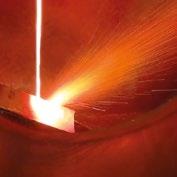

DIFFERENT ATOMIZATION AND SEPARATION TECHNOLOGIES TO MEET YOUR NEEDS:

● GAS OR ULTRASONIC ATOMIZATION FOR SPHERICAL POWDERS WITHOUT ANY SATELLITES

Ideal for LPBF, MIM and other Additive Manufacturing applications with the need for high quality powders with high purity, sphericity and wide range of reproducible particle size distribution.
● WATER ATOMIZATION FOR MORE IRREGULAR POWDERS Ideal for recycling/refining process, press & sinter process and others.
● MAXIMUM PURITY BY OXIDATION-FREE PROCESSING in the closed-chamber machine by means of de-gassing, vacuum and protective gas features
● FOR A WIDE RANGE OF METALS AND FOR SMALL TO MEDIUM AMOUNTS
AUG series HTC+ gas atomizers with temp. max. up to 2100° C Also versions for high-reactive metals as aluminium or magnesium available!
● AIR CLASSIFIER AC SERIES FOR PRECISE SEPARATION OF METAL POWDERS into fine and coarse powder fractions especially in the range < 25 µm, where conventional sieving operations fail.
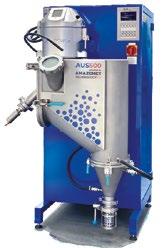
● ALL UNITS DESIGNED FOR EASY HANDLING AND CLEANING, QUICK ALLOY CHANGE WITH MINIMUM CROSS CONTAMINATION
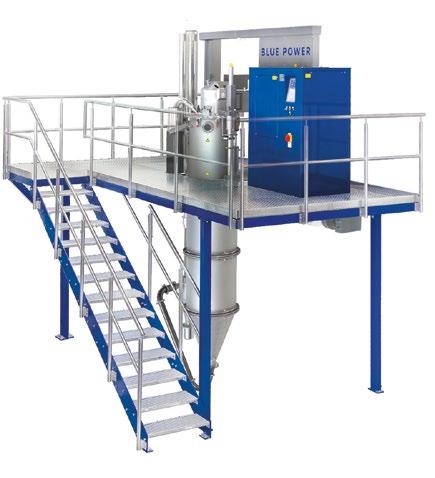
powders that make a difference.
Meeting the highest standards for drying and powder quality.
As world-leading specialists in powder engineering, we have developed exceptional Spray Drying Solutions that define and deliver superior quality powders to your exact specifications in the most energy-and-costefficient way.
Be it a powder, a granulate or an aglomerated product. GEA offers compact, single-line spray drying plants of any desired capacity. Our very own Nozzle or Rotary Atomizer technology allow us to cover a very wide size range.
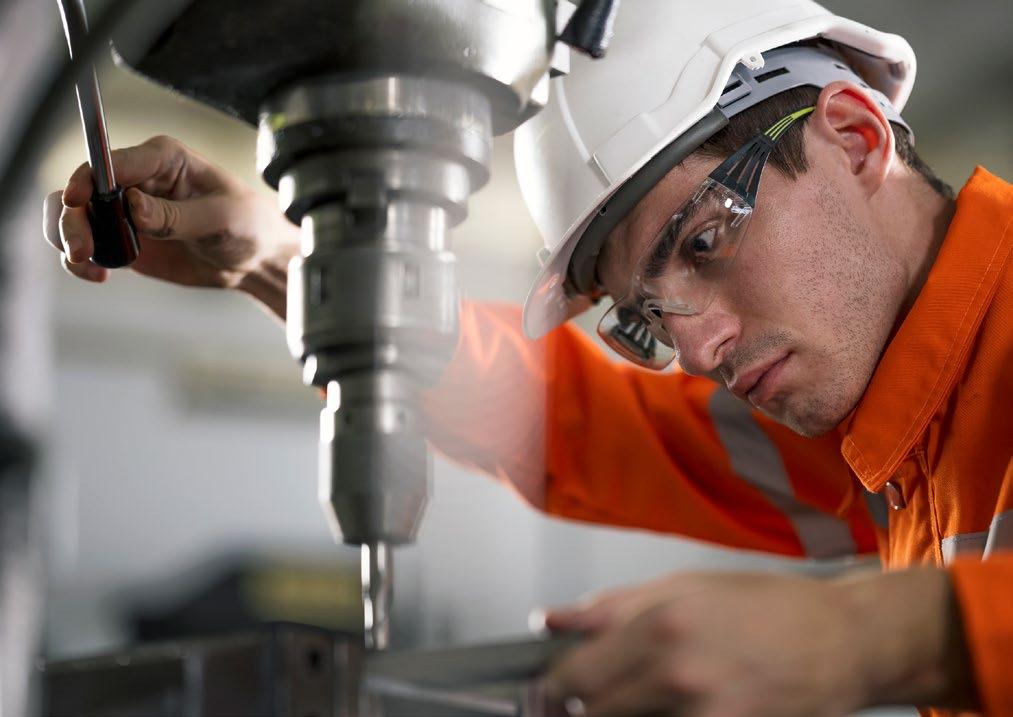
Plansee Group reports record sales up 16% in fiscal year 2022
The Plansee Group, headquartered in Reutte, Austria, has reported record sales for its fiscal year ended February 28, 2023, increasing sales by 16%, up from €2.02 billion to €2.35 billion. The two business areas of Plansee High Performance Materials and Ceratizit are reported to have contributed equally to the increase in sales.
Plansee stated that products with higher value added performed particularly well. While orders from the aerospace and medical technology industries increased noticeably, demand from the construction and electronics industries cooled down. The company also reported that it has strengthened its core competence around two key materials, molybdenum and tungsten, with acquisitions, the divestment of non-core activities and attractive orders in the past fiscal year. The group has stated its intention to further utilise groupwide synergies in the coming years.
Karlheinz Wex, Chairman of the Executive Board of Plansee Group, stated, “With our clear strategy, the great commitment of our employees and our ability to adapt our organisation to challenging framework
conditions, we have successfully mastered the past fiscal year.”
The challenging framework conditions included fluctuating raw material prices at a comparatively high level, as well as sharply rising input prices for energy, consumables and supplies, and other external services.
Investments, acquisitions, divestments and plant closures
Successful investments made in the year included the construction of a new sintering plant in Ruette, Austria, with a total volume of €12 million, and Ceratizit’s further investment of €25 million in the new production building in Kreckelmoos, Austria. Additionally, in Towanda, Pennsylvania, USA, and Jyväskylä, Finland, capacities for the production and recycling of tungsten powders were expanded and the production capacity for tungsten carbide rods in China and Taiwan was expanded. Ceratizit’s Eastern European production sites in Poland and Bulgaria were also modernised and expanded.
Plansee expanded its tungsten activities in North America with the acquisition of MiTech Metals in the
Nichols Portland acquires Neota Product Solutions to expand MIM portfolio
Thomas K Houck, president and CEO of Nichols Portland Inc, headquartered in Portland, Maine, USA, has announced that Nichols has acquired the assets of Neota Product Solutions LLC, Loveland, Colorado, a Metal Injection Moulding solutions provider of early-stage prototyping through to full-scale manufacturing.
“The Neota acquisition is an excellent complement to our existing MIM solutions, and we
welcome Jason Osborne, President of Neota, and his team to the Nichols group,” Houck stated. “Jason’s years of experience in MIM product design for manufacture will help to further accelerate the depth and breadth of our capabilities and service the everevolving needs of our customers.”
Nichols is a portfolio company of Altus Capital Partners, an investment firm focused on middle-market industrial compa -
USA. A new market was also opened up for Ceratizit through the acquisition of the French company Agricarb, a developer and producer of durable carbide tools for agriculture, farming and viticulture.
Alternatively, non-core activities such as the ceramics business in Livange, Luxembourg, tantalum production in Liezen, Austria, and the bonding shop in Sakura, Japan were successfully divested.
Outlook
The Plansee Group has been under new management since July 1; Andreas Lackner, Ulrich Lausecker and Andreas Schwenninger joined the Executive Board, and the previous Spokesman Karlheinz Wex became Chairman.
The group is reportedly anticipating further recovery in the aerospace industry and stable demand from the mechanical engineering and semiconductor industries, combining with increasing orders from the medical technology sector for the current fiscal year. Plansee intends to continue to press ahead with all projects to optimise production and processes and leverage group-wide synergies in order to offset sharp increases in personnel, energy and other procurement costs.
www.plansee.com
nies headquartered in the United States. As well as Neota, Nichols acquired Alpha Precision Group in January 2022.
“The addition of Neota to Nichols’ portfolio of customerfocused services will further strengthen its manufacturing capabilities as a comprehensive MIM solutions provider,” added Heidi Goldstein, Partner of Altus Capital Partners. “We are thrilled about the opportunities this partnership will provide.”
www.neotagroup.com
www.altuscapitalpartners.com
www.nicholsportland.com
Pilamec undergoes management buyout to secure future

Pilamec, based in Lydney, Gloucestershire, UK, has undergone a management buyout led by Stephen Mason and Rob Absalom. Mason and Absalom have worked Pilamec for four and seven years, respectively, and have extensive knowledge of the company’s processing capabilities and customer requirements
Pilamec has been in business for forty-seven years, during which it has been under the ownership of both individuals and groups. Bunting Magnetics, the previous owners, acquired Pilamec Ltd as part of the purchase of Magdev Ltd. However, Pilamec did not form part of its core business and, after one and a half years of ownership, Bunting Magnetics decided to accept the management buyout offer.
Pilamec supplies and processes various-sized granules and powders via specialist crushing, milling, blending and screening operations. The flexibility of the onsite processing plant enables Pilamec to offer batch production of products used in a wide variety of applications, from research and development quantities up to bulk high volumes.
Existing powders, which may only be available in an angular form, can be processed to give them a more spherical shape or to reduce their particle size. Additionally, the company also offers pre-mix blending of non-standard products, which may be difficult and disruptive in some larger company’s in-house blending departments. There is also a packaging service available,

including customised re-packaging of powders.
Pilamec also trades small quantities of metal powders from primary producers including iron and carbonyl iron powder; titanium powder; aluminium powder and numerous other types, all of which complement the processing operation.
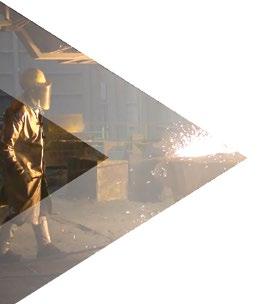
The Megapot milling/blending machine is also manufactured and sold by Pilamec to both university research units and major PM companies. The Megapot is capable of replicating bulk production processing, whether milling or blending, and can also be used in laboratories as a test rig for R&D.
Recent investments include additional ball milling capacity, installation of a batch blender, and ultra-sonic sieving equipment for finer powder production. Further investments are already planned.
www.pilamec.com
Retech’s Plasma Gas Atomizer (PGA) Takes Gas Atomization to the Next Level. Our plasma atomization technology not only atomizes titanium at an unprecedented 30 kgs per minute, but is packed with features that will change the way you produce titanium and other refractory metal powders:
• Simplified Feed Stock Preparation – Accepts bar stock, as well as sponge and recycled material compacts
• Retech’s Proprietary Hearth Melting Technology – Production of ultra-high purity product
• Versatile Atomization of Multiple Alloys – Suitable for any alloy that can be plasma melted
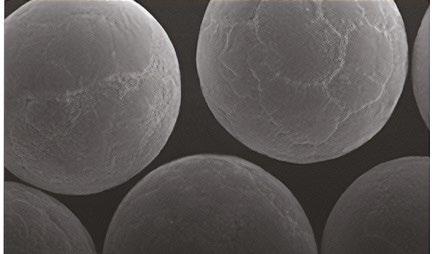
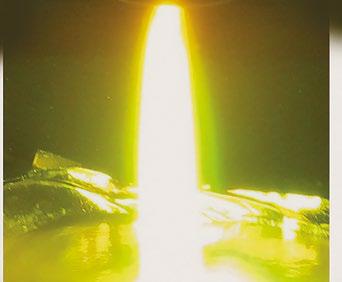
• Selectable Powder Size Distribution – Allows you to dial in and refine the powder particle size you want
• 98.5% Helium recovery and reuse with our Helium Recovery Unit – Makes Helium a more economical shielding gas
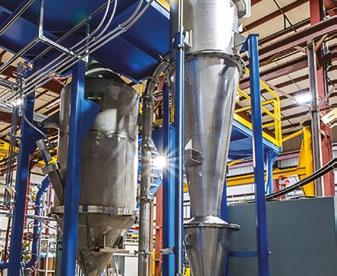
• Titanium Atomization Rates up to 30 kgs per minute.
“You mean per hour, right?”
“No, we mean 30 kgs per minute!”
Tooling for Powder Compacting Technology
PMG Indiana celebrates thirty five years in Columbus
PMG, headquartered in Fussen, Germany, is celebrating the 35th anniversary of PMG Indiana, its Columbus, USA, production site specialising in powertrain components.
Established in 1987, PMG Indiana produces automatic transmissions, engines and EV/e-axle applications for customers such as Hitachi and Stellantis. The 17,300 m 2 site features its own R&D centre for technology development. The plant has achieved ISO 14001:2015 & ISO 45001:2018 certification for the development and manufacture of powdered metal parts for automotive market customers and IATF 16949:2016 certification for the design and manufacture of powder metal parts subassemblies.
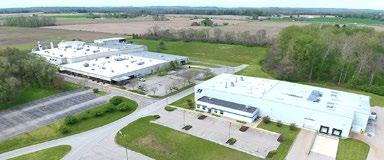
The company currently employs around 147 people, two-thirds of whom have been with the company for at least five years, many a lot longer. “With this experience comes wisdom, competence and commitment to our business and teaching the next generation of employees,” it was stated.
The news follows on from the 20 th anniversary of PMG Pennsylvania celebrated earlier this year.
www.pmgsinter.com
VBN Components adds new URQ-HIP machine

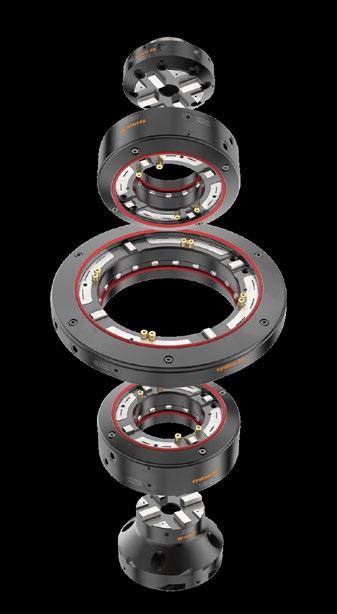
VBN Components AB, a manufacturer of wear-resistant materials and components, has installed a new Uniform Rapid Quenching Hot Isostatic Pressing (URQ-HIP) machine at its facility in Uppsala, Sweden. Offering Hot Isostatic Pressing, heat treatment and rapid quenching, the URQ-HIP enables pore-free materials and is expected to allow VBN to further develop its range of high performance alloys.
“We have long planned for a URQ-HIP at the company, so it means a great deal that it is now in place! Above all, we are happy to have integrated another part of the production chain, so that we can significantly shorten our delivery times,” stated Magnus Bergman, CEO of VBN Components.
www.vbncomponents.com
High-performance products for powder metallurgy
– Aerospace-Approved – Metal Powders

Elevate your powder metallurgy product innovations with our ISO 9100 certified, highly spherical & tailor-made metal powders and alloys. Backed by over a century of expertise, we are your trusted partner for pushing boundaries in powder metallurgy.
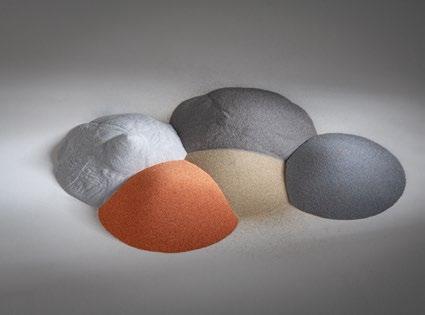
Visit us at EURO PM, booth 122, Oct. 1 – 4, 2023, Lisbon / Portugal
For further information please contact: ECKART Gmb H · Guentersthal 4 · 91235 Hartenstein · Germany
E-Mail: info.eckart@altana.com www.eckart.net
Ceratizit announces Product Carbon Footprint for cemented carbides
Ceratizit, part of the Plansee Group and headquartered in Mamer, Luxembourg, has announced that it intends to introduce a standard for calculating and classifying the CO 2 footprint of cemented carbide products. In combination with a scoring and classification system, Ceratizit reportedly promises an increase in carbon footprint transparency at a product level, and is encouraging other players in the cemented carbide industry to take part.
“Our goal is to establish a common standard on the market for calculating and classifying the carbon footprint of cutting tools, hard material solutions and tungsten carbide powders,” stated Dr Andreas Lackner, executive board spokesman. “In this way, we will be able to provide customers the carbon footprint transparency they require.”
Similar to the scoring systems for electrical devices, motor vehicles and food, Ceratizit has stated that customers should be able to know and assess a product’s footprint at a glance. The alphabetic PCF classification (Product Carbon Footprint) can be added to any product sheet or sales document.
Over the coming months, the company will roll out the PCF classification across its product portfolio, introduce related products and services and encourage customers, partners and other industrial players to adopt the newly developed standard.
emissions, which can be allocated to specific products (purchased goods and services, upstream transportation and distribution, as well as waste generated from operations).
To add extra emphasis on customer needs, Ceratizit uses the cradle-to-gate approach and excludes downstream emissions. Via a fully integrated supply chain for raw materials, Ceratizit is able to determine precise data for the PCF.
“Our ambition is to lead the carbide industry into a sustainable future. However, it is up to customers to decide whether to opt for a standard product with detailed PCF transparency or a solution with a particularly low CO 2 footprint. With our standard, we offer the basis for making informed decisions with ease,” explained Dr Lackner.
For customers seeking to actively reduce the PCF in their own product range, the carbide grades of the upGRADE range from Ceratizit are said to provide effective and innovative solutions available for immediate use.
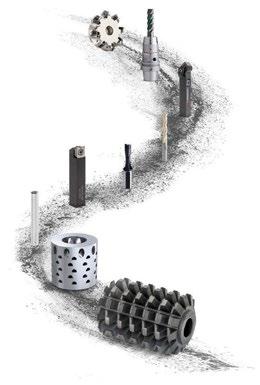
Ceratizit has introduced the first standard for calculating and classifying the CO 2 footprint of carbide products
Serving as the basis for the PCF calculation is the respective Corporate Carbon Footprint (CCF), i.e., the CO 2 footprint of the entire company. In accordance with the ISO 14067:2018 standard, the PCF includes not only the emissions attributable to Scopes 1 and 2, but also the upstream part of Scope 3
Tekna secures multiple orders for its plasma systems
Tekna Holding ASA, Sherbrooke, Quebec, Canada, reports it has secured three orders for its plasma systems, amounting to around €1.36 million (CA $2 million) in total. The orders came from three different customers located in the US, Germany and Asia, who will reportedly use the systems for the development of materials in a variety
of applications including energy, rechargeable batteries and microelectronics.
Tekna’s plasma systems are available in multiple configurations and are designed to provide customers with advanced materials research capabilities. The company also offers a range of metal powders suitable for metal Additive Manufacturing, Metal Injection
The CT-GS20Y grade for rods for cutting tools and the KLC20+ grade for wood working are both produced from more than 99% strictly selected secondary raw materials and combine premium performance with a particularly low PCF, which is on average around 60% below the PCF of corresponding standard Ceratizit grades.
www.ceratizit.com
Moulding (MIM), thermal spray and Hot Isostatic Pressing (HIP).
“These orders confirm our leading position as provider of advanced plasma systems to industry. Our Systems product line provides a strong foundation for our company, while we continue to improve and expand capacity of our own advanced material production systems,” shared Luc Dionne, CEO of Tekna.
Two of the orders are scheduled for delivery in Q4 2023 and the other in Q2 2024.
www.tekna.com
Navigation and Support
In a complex industry, we’ll guide you the entire way.
We’ve got one mission, to support as many metal part makers in the MIM and Metal AM industry as possible. Our team of processing experts utilize 20+ years of experience to share all our knowledge and help you overcome challenges, develop better processes and become successful part makers. We help develop real world, practical solutions based on many lessons learned along our journey. Being the ONLY debind and sinter service provider with full sized production equipment, we are honored that we have been able to support every industry currently utilizing MIM and Metal AM. DSH is the only source for the best process support, toll processing and educational resource for your MIM and Metal AM applications.
We offer:
Remote Process Engineering, Small/Large Toll Processing, R+D projects, Educational Support on Total Process Management.


Miba
invests €15 million to meet e-mobility growth
Miba AG, headquartered in Laakirchen, Austria, has announced an investment of €15 million to expand its manufacturing site in Kirchbach, southern Styria. On completion, the production facility will increase from around 3,000 m 2 to 6,300 m 2, with Miba adding a further forty employees to the 300 strong workforce.
The plant produces power and high-voltage resistors under the brand name EBG Resistors and has seen sales double in the past two years, increasing from €18 million to almost €37 million.
In 2021, Miba invested over €2 million in establishing its first production line for e-mobility products at its Kirchbach site. With the current expansion of the plant, a large-scale production infrastructure is being created
that is equipped to meet the rapidly increasing volume requirements of customers.

“We are expanding the factory site that has existed since 1977 with an additional two-storey building,” said Louis Klein, EBG Managing Director and Plant Manager. “Around 3,000 m 2 on the ground floor are reserved for e-mobility – for production, but also for research and development as well as for sales and administration.”
The new building will create production and office capacities for growth in other customer markets, creating approximately forty new jobs. Additionally, the existing production processes can be optimised with the new building.
Klein explained, “Due to the significantly increased space available, we can integrate our previous external production in St Stefan im Rosental
into the Kirchbach plant. This not only saves time and organisational effort, it also reduces transport and thus helps the environment.”
The Miba technology group has had production sites in Styria since 2010. At that time, the Upper Austrian family company acquired the power electronics specialist EBG, along with its location in Kirchbach.
“The plant has developed tremendously since then. Sales have tripled, from €13 million in 2010 to almost €37 million in the previous year. In addition, we have created more than 130 new jobs – the number of employees has grown from forty-eight to 180,” shared F Peter Mitterbauer, CEO of Miba AG.
According to reports, the second Styrian power electronics specialist DAU, which was acquired by Miba in 2010, has also experienced successful development. The cooling technology manufacturer, which employs approximately 100 people at its Ligist plant in the Voitsberg
Confirm
Ensure
Static and Dynamic
Check the sphericity or irregularity of your powders and detect anomalies
district, has a turnover of around €25 million. Miba CEO Mitterbauer stated, “One can rightly say that the history of Miba in Styria is a success story in green and white. The great knowhow, the commitment, the many new ideas and the pioneering spirit of our almost 300 Styrian employees are an essential basis for this success.”
The investment in the factory site is also an important stimulus for the market town of Kirchbach-Zerlach, as Mayor Anton Prödl stated, “High tech for the energy transition and for the mobility of tomorrow creates growth and secure, future-oriented jobs. This also applies to rural regions, the Miba location in Kirchbach is the best example of this.”
“We are therefore pleased that Miba made a conscious decision to locate in our community, and we look forward to continuing our good cooperation in the interests of the region and the people who live here,” Prödl concluded.
www.miba.com
Modulus launches community platform for materials industry
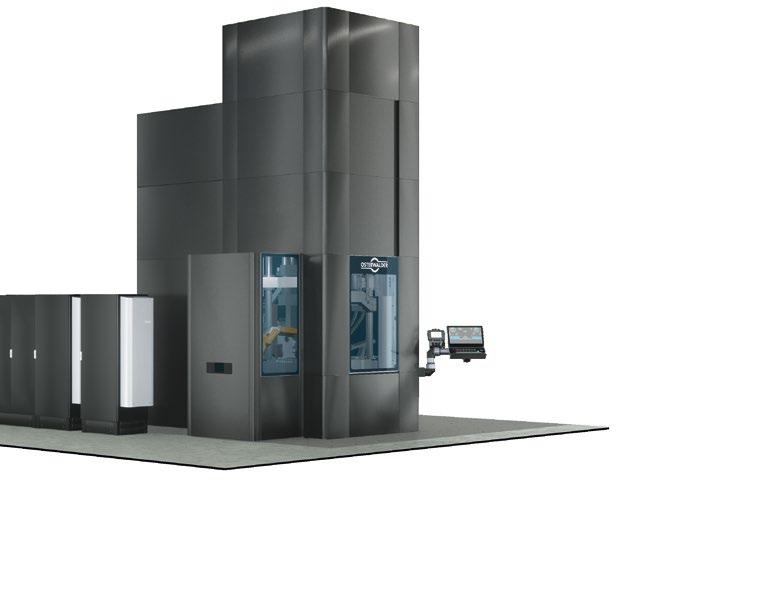
Modulus, a professional community platform for the materials industry, has now launched. The social platform aims to provide members with a centralised hub of industry content and a more focused networking experience in an effort to optimise how professionals connect and engage with their industries.
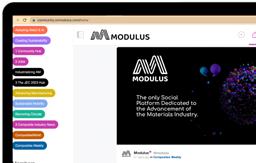
“Our vision is to create a platform where professionals can connect, engage, and advance their industries in a more meaningful way,” said Adam Harms, Community Architect of Modulus. “By building a focused industry community, we enable members to have a more targeted and valuable networking experience while putting them in control of the content they engage with.”
Modulus is a platform for the materials industry (Courtesy Modulus)
Unlike traditional social networks, Modulus is centred around a focused industry, ensuring that the content, connections, events, and groups are all relevant and tailored to the specific professional interests of those in the materials community.
“We believe that industry advancement and change is powered through community,” added Harms. “Modulus is focused on bringing the materials industry together and providing a space where professionals can connect, learn, and grow together.”
www.onmodulus.com
GKN Automotive releases its first sustainability report
GKN Automotive has released its first sustainability report, entitled ‘Innovating for Change,’ following the launch of its sustainability strategy in 2021. The strategy introduced a new framework for coordinating the company’s existing sustainability activities under four strategic pillars: Our People, Climate Action, Responsible Sourcing, and Our Impact.
As part of its strategy, GKN Automotive established key targets for each pillar aligned with the UN Sustainable Development Goals (SDGs). These include ensuring that 33% of the executive team is female by 2030, 75% of electricity consumed comes from certified renewables by 2030, and that by 2025, 50% of annual expenditure contributes to the decarbonisation of the automotive sector.
GKN Automotive’s report details the company’s progress towards all targets achieved to date. These include:
• Spending 86% of the Research & Development budget on decarbonisation efforts
• Diverting 99% of all waste from landfill
• Achieving up to a 30 GWh reduction in energy consumption through various initiatives, such as implementing energy monitoring systems, heat recovery systems, and photovoltaic cells
• A 0.1% accident frequency rate
• Zero conflict minerals knowingly sourced
• Donating over £770,000 to charitable causes globally
• Introducing a new supplier assessment tool to ensure greater transparency throughout the supply chain
The report also announces GKN Automotive’s net zero target of 2045, which has been submitted to the Science Based Targets initiative (SBTi) for validation this year. To achieve this, the company will focus on four key areas:
• Improving energy efficiency across its global plants
• Increasing its sourcing of on-site and off-site renewable electricity
• Increasing its engagement with suppliers on sustainability
• Continuing to invest in technologies that contribute to the decarbonisation of the industry
Dr Clare Wyatt, Chief Communications and Sustainability Officer at GKN Automotive, commented, “The automotive industry plays an essential role in decarbonising the road transport sector and enabling the global transition to net zero through replacing vehicles that run on fossil fuels with battery powered electric vehicles. Our role in GKN Automo -
Tekna receives $1.7 million titanium powder order from MIM producer
Tekna Plasma Systems Inc., Sherbrooke, Quebec, Canada, has announced it has received an order valued at CAD $1.7 million for its titanium powder from a Metal Injection Moulding manufacturer in Asia. The first shipment of the material has been completed, with subsequent deliveries planned to continue until the end of 2023.

The undisclosed customer will reportedly be using the powder for the Metal Injection Moulding of subcomponents destined for personal electronic devices.
“We are excited that we have achieved this significant milestone in one of our most promising market segments – consumer electronics. This is a rapidly growing sector with
tive is to manage that transition and in doing so, to drive a cleaner, more sustainable world.”
“I’m immensely proud of the determination and focus shown by our employees to ensure our work in sustainability is carried out comprehensively, and I feel honoured to share the results of our efforts in this report,” she continued. “We are in a great position to be at the forefront of change in our industry, and we will continue to integrate sustainability throughout the business, turning our strategy into action.”
Markus Bannert, CEO of GKN Automotive, added, “I’m proud of the work underway, and I’m absolutely clear we have more to learn and much more to do. We will continue to work in partnership with all of our stakeholders, our employees, our communities, our customers, our suppliers and our new shareholder Dowlais Group plc to ensure GKN Automotive continues to be a worldleading, sustainable business that responsibly and ethically drives a cleaner, more sustainable world.”
www.gknautomotive.com
great potential for Tekna. We believe that this order is proof of the quality of our products and the strength of our brand,” stated Luc Dionne, CEO of Tekna.
Tekna’s titanium alloy powder is said to offer a high level of sphericity, low oxygen content, high density (bulk and tapped) as well as controlled grain size. In addition to Ti64 titanium alloy powder, Tekna produces tungsten and tantalum powders for MIM applications.
www.tekna.com
COMPACTING SOLUTIONS FOR EVERY NEED
As a result of many years in the Powder Metal field and over a century of experience in designing machinery for many industries, SACMI presses are technologically advanced yet simple, safe, and highly reliable.
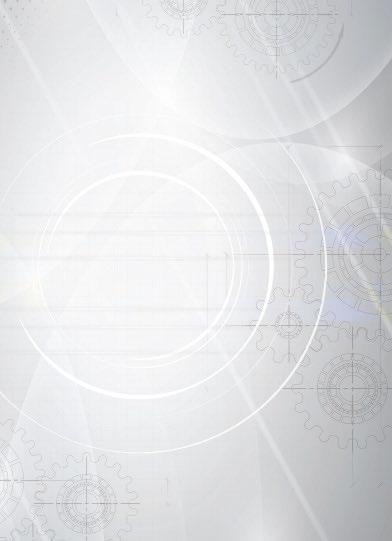
MPH fully CNC hydraulic presses, suitable for high-speed cycles and continuous work shifts, grant extreme flexibility during the tooling and set-up stages; they offer outstanding energy efficiency and are the right choice for the compaction of multi-level parts of whatever powder.
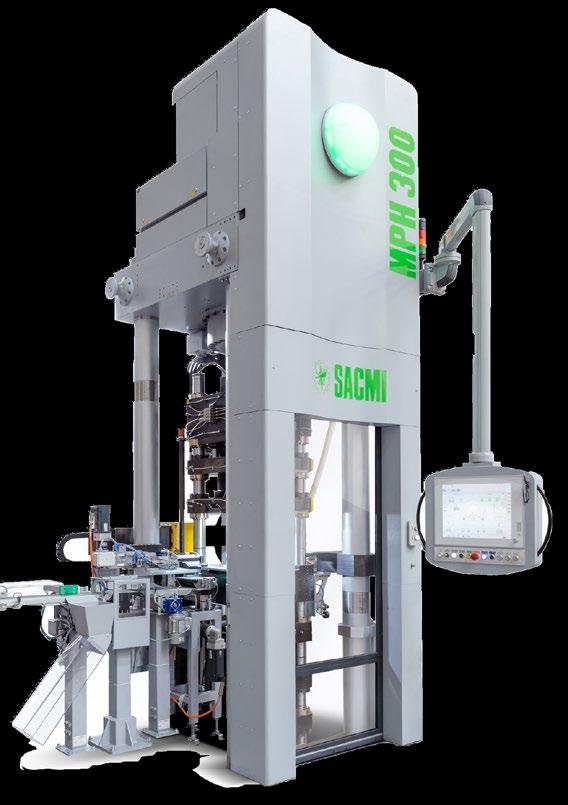
The last-born e-MP full electric presses, besides their outstanding precision and productivity, find their perfect application in the hard metal market for the production of cutting tools and inserts, but also in the field of Technical Ceramics, thanks to their appreciated flexibility of operation. They can also be equipped with an integrated automation for part extraction and palletization, allowing a very easy and efficient control of the whole productive cell.
Thanks to the competences available within the Group, SACMI also supplies state-of-art furnaces for the Powder Metal Industry and versatile solutions for automation aiming at increasing output rates while ensuring maximum simplicity of operation.
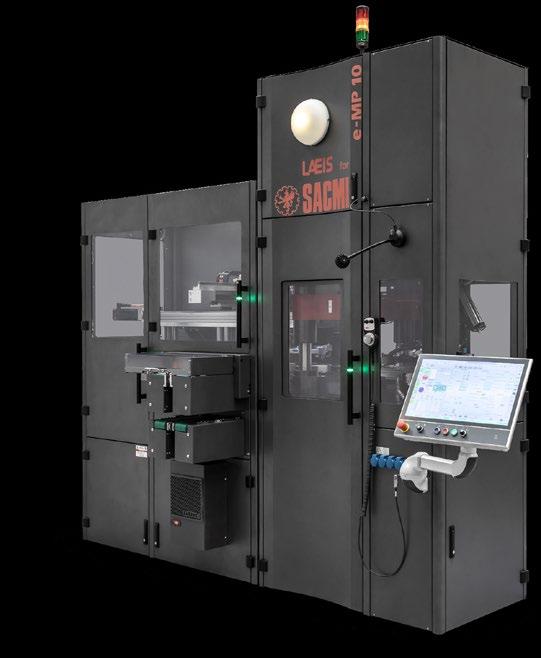
Retech to bring GeniCore’s Spark Plasma Sintering to North American market
Retech, an American subsidiary of the Seco/Warwick Group located in Buffalo, New York, USA, is collaborating with GeniCore, based in Warsaw, Poland, to bring Spark Plasma Sintering (SPS) Powder Metallurgy to its customers. Under the agreement, Retech will market and distribute GeniCore’s range of U-FAST machines, expanding the range of metallurgical processing technology the company offers.
“As the global leader in vacuum metallurgical equipment, bringing SPS into our repertoire and representing its capabilities is a win for Retech, GeniCore, and our customers,” stated Earl Good, Retech Systems Managing Director and president.
The SPS process bonds metal powders, as well as ceramic and metal composites, by applying a combination of pressure and thermal energy (created by a powerful pulse of electric current) in a mould. It is similar to Hot Isostatic Pressing, but consumes significantly less energy and can bond a wider range of materials.
GeniCore offers multiple SPS systems using its U-FAST (Upgraded Field Assisted Sintering Technology)
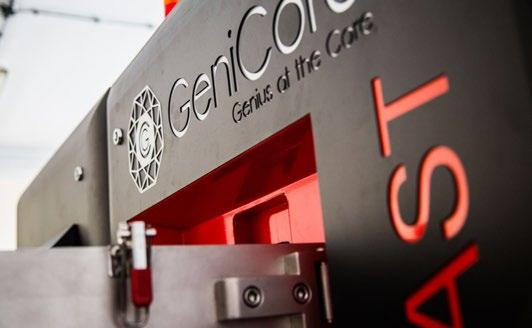
process, with each one optimised for specific applications. The Direct Current (DC) electric pulse switching technology allows for precise control of DC waveforms, including the control of each pulse’s current, duration, and spacing. With the ability to generate square pulses under one millisecond, and even programmable square-pulse packets, tremendous energy can be delivered directly into the materials being consolidated. This precision pulse control results in uniform consolidation with minimal grain growth.
GeniCore SPS processes are being used by manufacturers and research institutions alike, including a national laboratory, NASA, and a large European industrial engineering company.
“The GeniCore mission is to deliver superior value to our customers through innovative SPS technology. Cooperation with Retech gives us the honour to serve discerning and distinguished customers in the North American market,” added Marcin Rosiński, GeniCore CEO.
www.retechsystemsllc.com
www.genicore.pl
EPMA announces Keynote Paper Awards for Euro PM2023
The European Powder Metallurgy Association (EPMA) has announced the recipients of its 2023 Keynote Paper Awards, which will be presented during the Euro PM2023 Congress & Exhibition, scheduled to take place October 1–4, 2023, in Lisbon, Portugal.
For this year’s event, the Euro PM2023 Technical Programme Committee has selected six keynote papers. Each keynote paper will receive an extended 30-minute slot for their presentation at the beginning of the relevant session.
The 2023 Keynote Paper Award winners are:
• Insights On The Microstructural Characteristics Of WC-Co-Ru Cemented Carbides, Dr Raquel de Oro Calderon (TU Wien, Austria)
• Effect Of Process Parameters And Heat Treatments On Non-equiatomic CoCrFeNiMoxAly HEAs Manufactured By PBF-LB|M Via In-situ Alloying, S Venkatesh Kumaran (IMDEA Materials, Spain)
• The Reporting Of Research On Gas Atomisation, Dipl-Ing Dirk Aderhold (Atomising Systems Ltd, United Kingdom)
• Flash Spark Plasma Sintering Of Nd-Fe-B Magnets With Tailored Anisotropic Magnetic Properties, Prof Dr Martin Bram (Forschungszentrum Jülich, Germany)
• Nitrogen Alloyed Austenitic Ni-free Stainless Steel For Additive Manufacturing, Atte Antikainen (VTT, Finland)
• Cracking Susceptibility
Assessment Of L-PBF CM247LC Alloy Based On Composition And Process Parameter Modifications, Dr Ane Miren Mancisidor (LORTEK, Spain)
www.europm2023.com
Global Tungsten & Powders
Security of supply
High quality and purity
Responsible sourcing
Tolling services
Recycling services
Think Tungsten. Think GTP.
Whatever you create out of tungsten, be sure to start with the best powders on the market.
Whether for additive manufacturing, hard metals industry, oil/gas, tungsten metal, or tungsten heavy alloy applications, Global Tungsten & Powders offers the perfect powder blends. Our laboratories are equipped with the latest technologies allowing material measurements down to the atomic level.

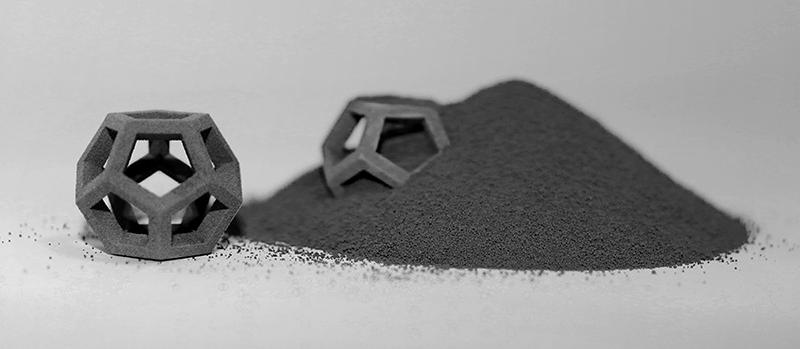
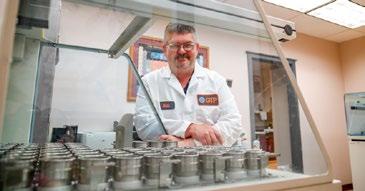
Additionally, GTP recycles any tungsten containing scrap you may have on hand. Benefit from our long standing expertise, especially in utilizing the zinc process for the recycling of tungsten carbide in industrial scale.
Talk to our experts to see how we can help.
www.globaltungsten.com

Wallwork Group invests £10M in new UK-based Hot Isostatic Pressing facility
Wallwork Group, headquartered in Bury, Greater Manchester, UK, is establishing a £10 million, state-ofthe-art Hot Isostatic Pressing (HIP) centre at its Bury site. Housed in a newly prepared 2500 m 2 facility, the first of the new HIP machines is expected to be fully operational in September 2023.

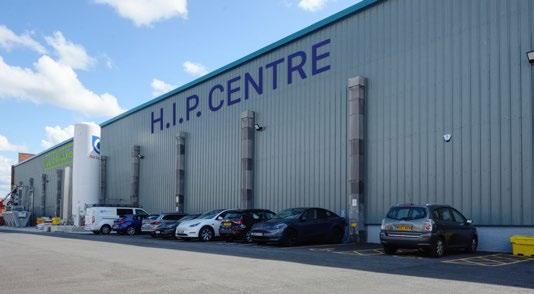
“As the UK’s premier independent heat treatment, vacuum brazing and advanced ultra-hard coatings company, this is a significant expansion of Wallwork’s thermal processing services and is part of a commitment to invest £20 million over the next five years,” stated director, Simeon Collins. “It cements our position as the UK one-stop shop for component manufacturers. All secondary processes are easily accessible on this site or another Wallwork site and backed by our national pickup/delivery transport fleet.”
James Bailey and David Loughlin are reportedly heading the new Wallwork HIP Centre, along with Andy Day in sales. Loughlin will be joining the company in the new role of HIP Business Manager, having extensive experience in managing a HIP facility in Europe.
“The demand for HIP is growing quickly, in part driven by the leaps forward in Additive Manufacturing
technology,” Loughlin explained. “HIP is extremely efficient at removing the porosity from AM parts made from metal powders – this densification process is often the only way for AM builds to fulfil their safety critical potential. With the Quintus URC system to reduce cycle times and high-pressure capability, we are set to meet customer demand and expectations in these developing areas. Compared to the US and Europe, the UK has been lagging behind in HIP capacity. This investment, and those planned by Wallwork, will go a long way to rectify that. In addition to Wallwork’s focus on quality, service and value added, I’m looking forward to developing some new relationships for the company.”
Quintus Technologies are currently completing the installation of the first of Wallwork’s HIP machines. Quintus has over 2,000 systems working worldwide in industries including aerospace, energy, medical implants, space, automotive, Additive Manufacturing, Powder Metallurgy, castings and food processing.
Bailey added, “The Quintus Technologies’ HIP operates at pressures from 40 to 207 MPa (5,800 to 30,000 psi) and temperatures up to 1250°C. The new unit being installed has the latest technology capable of
rapid cooling and also the ability to increase cycle pressures to aid with new engineering advances particular in Additive Manufacturing. This requires some major engineering and civil works, hence the high investment we need to make to enter this growing market. The ability to improve material fatigue properties, ductility, structural integrity and fracture toughness applies to AM, castings, forgings and subtractive engineered components. Components with complex geometries can also be processed to near-net shape, saving customers additional machining steps and therefore cost.”
The design phase for the new HIP centre began during the pandemic and presented many unforeseen challenges for Wallwork and the team at Quintus Technologies. “This has forged a solid working relationship and gives us great confidence in their support for the technology going forward as we continue to invest,” Collins added. “As the Bury site is already the largest singlesite UK heat treating facility with an aerospace scope covering nine Nadcap check sheets, we expect to be adding new certifications and approvals for HIP as quickly as possible. We also have a dedicated online customer portal in development that will aid load scheduling.”
As well as its Bury facility, the company has sites in Cambridge, Birmingham and Newcastle. www.wallworkht.co.uk
quintustechnologies.com
Sinterpure introduces lab-sized retort furnace to reduce excessive gas consumption
Startup company Sinterpure, based in Heidelberg, Germany, has launched the Sinterpure Box, a lab retort furnace, additively manufactured from silicon carbide (SiC), which reportedly enables a stable operation at 1250°C and significantly reduces the protective gas usage for compact lab furnaces.
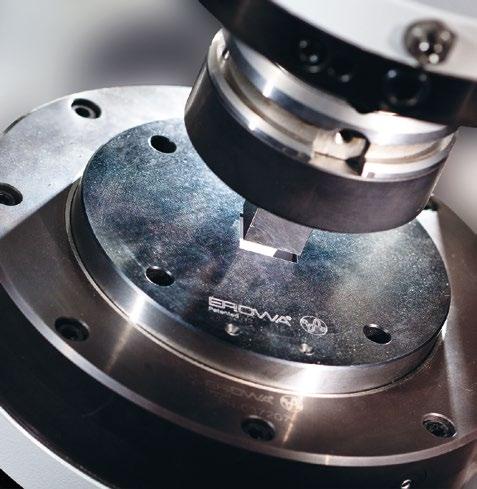
Until now, explains Sinterpure, efficient heat treatment and sintering of metal parts has only been possible with large industrial furnaces.
For compact furnaces, the maximum limit for operating temperature was previously 1150°C, with retorts made out of A105 NiCr. This temperature is often insufficient for achieving optimum sintering densification of many metals.
The Sinterpure Box uses a vacuum to connect the lid to the box without affecting the inner chamber. The resulting hermetic connection allows for complete control of the inner atmosphere and is said to eliminate the need for continuous flushing with protective gas to counteract gas impurity in the retort.

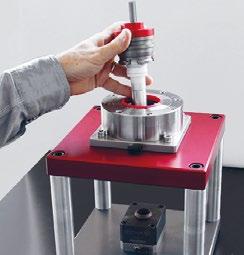
The company reported several validation experiments conducted using Sinterpure Box retort, in which the sintering of cobalt chrome (CoCr) parts was carried out. The successful sintering was reportedly demonstrated with the visual appearance of bright-silver shine on the parts. The absence of dark greenish appearance from undesired oxidation confirms the atmosphere purity of the Sinterpure Box lab retort furnace.
www.sinterpure.com
PM Tooling System
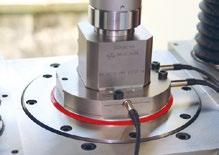
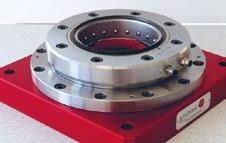

www.erowa.com
The EROWA PM Tooling System is the standard interface of the press tools between the toolshop and the powder press machine. Its unrivalled resetting time also enables you to produce small series profitably.
Carbosint adds new Dorst powder compaction press
Carbosint, a Powder Metallurgy part producer headquartered in Ghisalba, Italy, has added a new TPA300/4HP hydraulic powder press from Dorst Technologies GmbH, Kochel am See, Germany. The company currently lists over forty compaction presses ranging from 4-160 tons and six sintering furnaces offering high production capacity.
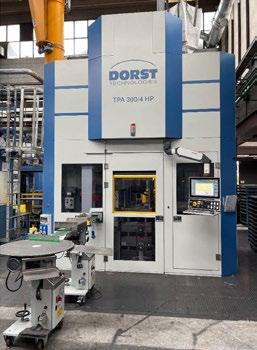
The TPA300/4HP is a hydraulic CNC multi-platen powder press designed for high productivity and reproducibility that can maintain tight tolerances. It features a modular design, equipped with an interchangeable die set system for an efficient setup, intended to enable a fast product changeover.
“With its latest generation software, automatic measurement control and anthropomorphic robot for handling components, it is a contribution to technological development that today allows us to better face the most demanding demands in the sector,” the company stated.
www.dorst-technologies.com
www.carbosint.com
Battery electric vehicles overtake diesel for first time in EU reports ACEA
The European Automobile Manufacturers’ Association (ACEA) has reported that in June 2023 the EU car market grew by 17.8%, with just over 1 million vehicles registered. In the first half of 2023, new EU car registrations were said to have increased significantly, up 17.9% and reaching a total of 5.4 million units.
The organisation attributed June’s growth to the region’s rebound from a comparatively low base in 2022, driven primarily by component shortages. All EU markets grew in the month, apart from Hungary (-1.4%), including the four largest ones of Germany (+24.8%), Spain (+13.3%), France (+11.5%), and Italy (+9.1%).
Electric cars
In June, the ACEA announced that new registrations of battery-electric cars in the EU reached 158,252 units, with the market share rising from 10.7% to 15.1% and overtaking the diesel car registrations for the first time. Hybrid-electric cars remained the second-most popular choice among new car buyers, representing 24.3% of the market. However, petrol cars retained the largest share at 36.3%.
Most EU markets recorded double- and triple-digit percentage gains, the ACEA reported, with the largest gains in the Netherlands (+90.1%), Germany (+64.4%), and then France (+52.0%). This contributed to a year-to-date growth of 53.8%, with 703,586 units sold between January and June.
June, reaching nearly 1.4 million units and capturing 25% of the market.
In June, the EU market for new plug-in hybrid cars rebounded, with registrations increasing by 13.4%. Although there was a significant 39.2% sales decline in Germany, the largest market for this fuel type, the substantial increase in France (+49.9%) and Spain (+51.7%) largely offset this decline. The overall market share of plug-in hybrid cars decreased to 7.9% from 8.2% in June last year, despite June’s increase in registrations.
Petrol and diesel cars
In June, the EU petrol car market grew 11%, totalling 379,067 units. However, the market share decreased to 36.3% from 38.5% in June 2022. The growth was primarily driven by solid gains in the four largest EU markets, particularly Germany (+19.8%) and Spain (+11.9%). Over 2 million petrol cars were sold in the EU in the first half of the year, a 15.9% increase compared to 2022.
In contrast, the EU market for diesel cars continued to decline (-9.4%) last month, despite growth in Germany (+10.3%) and Central European markets, particularly Romania (+22.4%). Diesel cars now represent a market share of 13.4%, down from 17.4% in June last year.
First half 2023
Carbosint has added a new TPA300/4HP hydraulic powder press from Dorst Technologies (Courtesy Carbosint)
New hybrid-electric car registrations also rose by 32.4% in June, reaching 254,100 units. This growth was primarily driven by gains in the bloc’s largest markets: Germany (+59.1%), Italy (+29.9%), France (+27.9%), and Spain (+22.7%). Cumulatively, hybrid-electric car sales recorded a 27.9% increase from January to
The ACEA stated that the recent improvements indicate that the European automotive industry is recovering from supply disruptions caused by the pandemic. However, it added that cumulative volumes are 21% lower compared to 2019. Most of the region’s markets grew significantly in the first six months of 2023, including the four largest ones: Spain (+24.0%), Italy (+22.8%), France (+15.3%), and Germany (+12.8%).
www.acea.auto
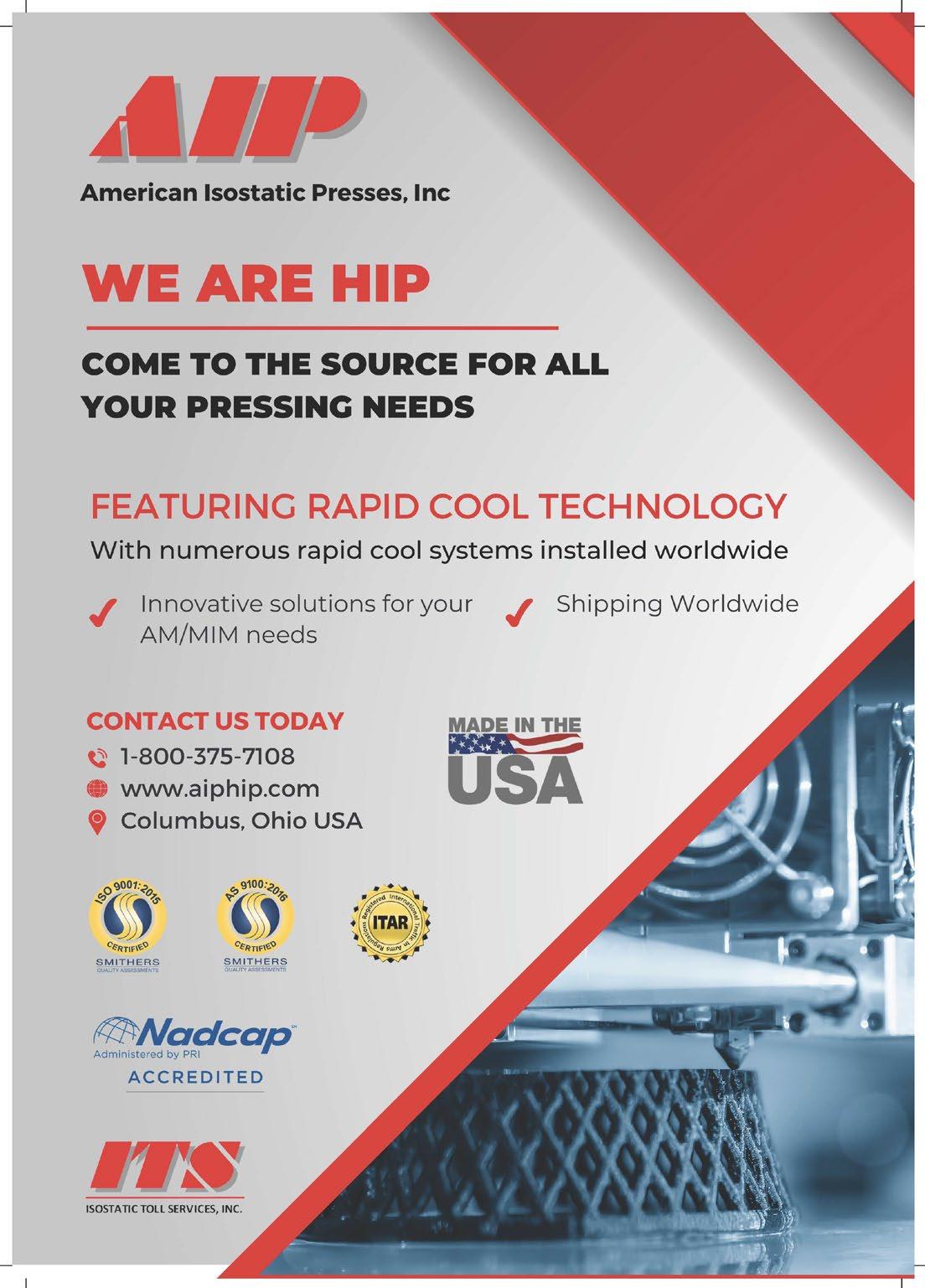
HC Starck Tungsten Powders to establish lithium-Ion battery recycling centre

HC Starck Tungsten Powders GmbH, Goslar, Germany, a subsidiary of Masan High-Tech Materials Group, headquartered in Ho Chi Minh City, Vietnam, together with a number of partners, has announced plans to establish a recycling centre for lithium-ion batteries in the Harz region of Northern Germany.
In addition to HC Starck, the consortium includes LB.systems GmbH, Battery Damage Service GmbH, Electrocycling GmbH, Albemarle Germany GmbH and IVH Industriepark und Verwertungszentrum Harz GmbH. In addition, scientific support is reportedly provided by Braunschweig University of Applied Sciences, Clausthal University of Applied Sciences, and the Fraunhofer Institute for Surface Engineering and Thin Films (Fraunhofer IST) based in Braunschweig.
Dr Hady Seyeda, CEO of HC Starck Tungsten, shared, “We have decades of experience in the recovery of valuable raw materials and are intensively involved in the battery sector. Bringing these competencies to the consortium will further strengthen our region as a future-oriented business location.”
The consortium, including the research institutes, has been envisioned as a competence network covering the entire value chain; from collecting and dismantling used batteries and production waste through mechanical, thermal, and hydrometallurgical processing to the synthesis of new battery raw materials. Involved partners reportedly aim to build the necessary industrial-scale facilities between 2024 and 2030.
The impetus for knowledge and technology transfer was provided by the Recycling Cluster for Economically Strategic Metals (REWIMET eV) and the Lower Saxony Automotive Agency, which is supporting the project on behalf of the Lower Saxony Ministry of Economics, Transport, Building and Digitalization.

Olaf Lies stated, “The signing of the memorandum of understanding for establishing a recycling centre for Li-ion batteries is a great success – not only for Lower Saxony as a business location, which the project naturally supports, but also for the Harz region as a hub for value creation in the field of environmental protection. Resources must be used sustainably and with a longterm perspective. Establishing a functioning circular economy in Lower Saxony is a relevant building block in achieving this objective.”
www.hcstarck.com
Tailor made solutions with superior consistency with respect to: purity, crystallinity, particle size distribution and oversize control Imerys grades are ideally suited to powder metallurgy applications for electrical and hybrid vehicles

Contact us at imerys.com

World PM2024 Yokohama: Call for Papers published
The 2024 Powder Metallurgy World Congress & Exhibition, organised by Japan Powder Metallurgy Association (JPMA) and Japan Society of Powder and Powder Metallurgy (JSPM) will be held in Yokohama, Japan, from October 13-17, 2024. World PM2024 will include presentations on the latest PM technologies as well as an international exhibition. In addition, various social events and special interest programmes will be prepared.
A Call for Papers has now been published for both oral and poster presentations. Topics covered include:
PM technology
• Powder production
Powder modification, atomisation fundamentals, atomisation process development, innovative processes, powder characterisation, etc.
• Processing
Compaction and sintering, modelling and sintering, Hot Isostatic Pressing, Field Assisted Sintering Technologies, AM beam-based technologies, AM sinter-based technologies, machining for AM, MIM process and other forms of processing
• Industrial applications
Biomedical, aerospace, automotive, energy and other PM applications
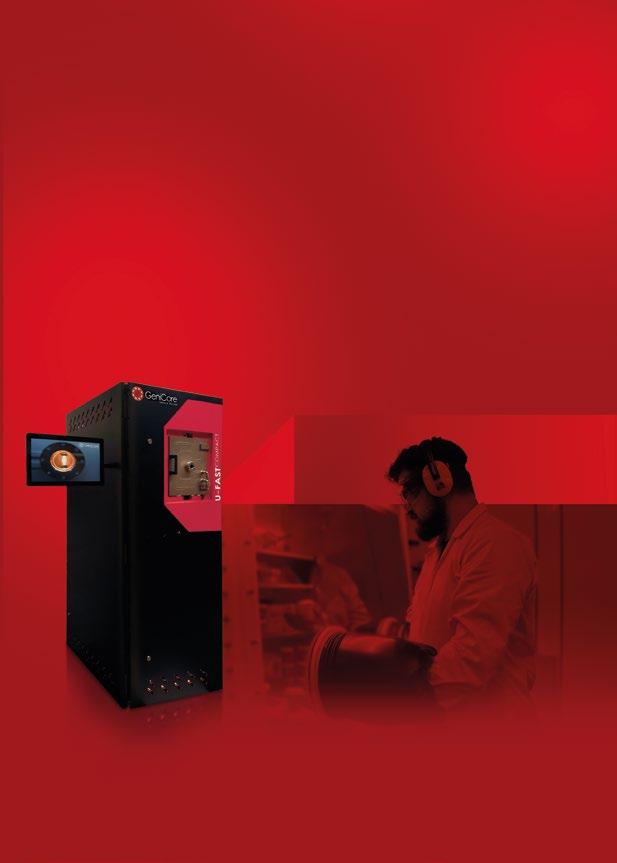
PM materials
• Sintered materials
Ferrous materials, non-ferrous materials, light materials and high-temperature materials
• Hard materials
Cemented carbides, cermets and ceramics, hard coating, diamond and CBN
• Functional materials
Magnetic materials, photofunctional materials, dielectric materials, composite/hybrid
materials, functionally graded materials, and other functional materials
• Other PM Materials High Entropy Alloys, metallic glass, material characterisation, and others
‘Hot topics for a better world’
• Carbon neutral in PM (eco processes and materials)
• Circular economy (reuse, recycle, remanufacturing)
• DX in PM (material informatics and integration)
Abstract submissions open on October 16, 2023, and close on January 15, 2024. Abstracts are to be submitted online and in English. Submitted papers will be reviewed and allocated to oral or poster sessions by the Technical Committee by the end of February 2024, when acceptance notifications will then be emailed to the authors.
www.worldpm2024.com

US Government invests $32 million in domestic rare earth elements supply
The US Department of Energy (DOE) has announced $32 million for projects that will build facilities which produce rare earth elements and other critical minerals and materials from US coal-based resources. The funding, provided by the Bipartisan Infrastructure Law, is expected to strengthen US domestic supply chains, helping the country meet growing demand for critical minerals and reduce reliance on overseas sources.
Rare earth elements and other critical minerals are key to manufacturing clean energy technologies in America – such as solar panels, wind turbines, electric vehicles, and hydrogen fuel cells. Coal and coal production waste is said to contain a wide variety of valuable rare earth elements that can be converted into clean energy technology components.
“President Biden’s Investing in America agenda is providing a historic opportunity to convert coal products into the critical materials needed to build an array of clean energy products,” said Jennifer M Granholm, US Secretary of Energy. “The President’s transformative investments will strengthen our national security by lessening our dependence on international supply chains while delivering high-quality jobs and healthier communities for all Americans.”
Front-End Engineering and Design (FEED) studies for production of critical minerals and materials from coal-based resources
The United States currently imports more than 80% of its rare earth elements from non-domestic suppliers. The funding opportunity announcement seeks to tap the resources available to help build a domestic supply chain critical to the US economy, clean energy, and national security. The programme funds research, development, and demonstration projects that support the development of intermediateand/or demonstration-scale facilities for domestic production and refining of rare earth elements and other critical minerals across the country. The FEED studies will establish and define technical requirements focused on project scope, schedule, and costs, and reduce risk during the construction and operation of the future facilities. These facilities will also help to create healthier environments for local communities by using the US’ national sources of coal and coal by-products to extract, separate, and produce rare earth elements and other critical minerals and materials. These include more than 250 billion tons of coal reserves, over 4 billion tons of waste coal, and about 2 billion tons of coal ash at various sites across the country.
PMTi2024 titanium conference dates announced
PMTi2024, the 7 th International Conference on Powder Metallurgy and Additive Manufacturing of Titanium, will take place for the first time in Spain, from September 4-6, 2024. The conference will take place in Madrid, after a successful series of previous events held in Australia, New Zealand, Germany, China, the United States and Canada.
Taking place at the Universidad Carlos III de Madrid’s Puerta de Toledo campus, PMTi2024 will bring together researchers and professionals on the processing, design and application of titanium and its alloys fabricated by Powder Metallurgy and Additive Manufacturing technologies.
Funding applicants must carefully address the societal considerations and impacts of their proposed projects, emphasising early and active engagement with communities. Applicants must explain how projects are expected to deliver economic and environmental benefits and mitigate impacts; conduct community and stakeholder engagement; incorporate diversity, equity, inclusion, and accessibility; and promote workforce development and quality jobs. Projects selected under this opportunity will be required to develop and implement strategies to ensure strong community and worker benefits, and report on such activities and outcomes.
Critical Minerals and Materials
Since January 2021, DOE’s Office of Fossil Energy and Carbon Management has invested more than $41 million in projects that support resource identification and production of rare earth elements and other critical minerals and materials in traditional fossil fuel-producing communities across the country. This total includes $16 million in Bipartisan Infrastructure Law funding for detailed engineering and cost studies toward a first-of-a-kind domestic facility that will extract and separate rare earth elements and critical minerals from unconventional sources like mining waste. This funding is expected to create new opportunities to remediate land and water while generating the REE’s necessary for a clean energy economy.
www.energy.gov
Topics covered will include powder production, Metal Injection Moulding (MIM), consolidation of PM alloys, sinter-based AM, powder bed and powder deposition AM, alloy design in PM and AM, titanium aluminides and Ti metal matrix composites, properties and characterisation, part and process qualification, applications, recycling and sustainability.
The deadline for submitting an abstract is February 28, 2024.
www.pmti2024.com
ADDING VALUE TO ADDITIVE MANUFACTURING

Bodycote provides a complete service solution for metal parts built by the additive manufacturing process, including stress relief to minimise distortion and residual stress, EDM to prepare the component for hot isostatic pressing (HIP), heat treatment or HIP to remove microporosity, and associated quality assurance testing.
Reduction in rejection rates and inspection costs
Fatigue properties on par with wrought material
Significant improvement in fatigue strength, fracture toughness, and tensile ductility
100% reduction in porosity possible
Improved machined surfaces and consistency in properties
Improved microstructure
the partner of choice for additive manufacturing
heat treatment | metal joining | hot isostatic pressing | surface technology
www.bodycote.com
SMS Group announces new CEO and CFO appointments



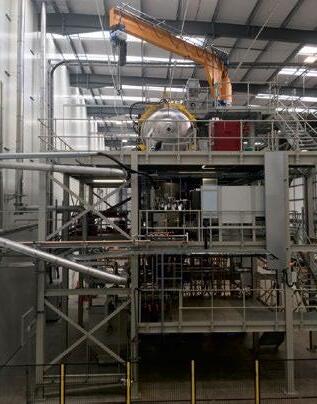





SMS Group, headquartered in Düsseldorf, Germany, has reported that it is implementing a generational change at the top level of management. From October 1, 2023, Jochen Burg, who has been with SMS since 2008 and currently acts as Executive Vice President Technical Service, will become CEO and Chair of the SMS Managing Board. He will be taking over from Burkhard Dahmen who has been chair for the past eleven years and with the company for a total of thirty-three years.
Jochen Burg shared, “I am very much looking forward to continuing the success story of SMS group together with my colleagues on the managing board. We have set a clear course for the years ahead. We have the best preconditions and, above all, great team members all over the world, so that together we can achieve our ambitious goals.”
Additionally, Fabíola Fernandez will join the company on October 10, 2023, and assume the role of CFO on the Managing Board on January 1, 2024. She will be taking over from Torsten Heising who was appointed CFO in 2017 after holding various management positions at SMS since 2006. Fabíola will be joining from Gegenbauer SE & Co. KG, a facility management service company, where she currently serves as Chief Financial Officer and co-CEO.

Fernandez added, “SMS group has very exciting and promising years ahead. There are not many companies that are able to significantly shape the transformation of an entire industry and I am, therefore, all the more excited to be part of this important challenge and to use my experience to ensure a successful and profitable future for the company.”

Edwin Eichler, Chair of the Supervisory Board of SMS group, commented, “Burkhard Dahmen and Torsten Heising have made a major contribution to gearing SMS group towards the future. In view of the good market situation, now is the ideal time to actively shape this generational change and also to usher in a new era. Jochen Burg and Fabíola Fernandez are the ideal fit for this. Together, we intend to focus on the systematic expansion of our service business, the further technological development of our plants and equipment, and the optimisation of our performance.”
“My sincere thanks go to Burkhard Dahmen and Torsten Heising who have devoted their professional lives to SMS group and, in doing so, have played a tremendous role in successfully shaping and growing the company, which is celebrating its 150 th anniversary this year. I wish Burkhard Dahmen and Torsten Heising all the very best for the future,” Eichler concluded.
www.sms-group.com









KBM Advanced Materials offers NASA standard GRCop-42 ‘RocketPowder’












KBM Advanced Materials, LLC, Fairfield, Ohio, USA, has launched a NASA standard GRCop-42 copper alloy powder. Referred to as ‘RocketPowder’ by the company, the alloy is made from copper, niobium and chromium and is ideally suited for space and hypersonic applications due to its high heat transfer and increased strength when compared to pure copper.
KBM is a distributor of metal powders across the Additive Manufacturing and advanced manufacturing industries, but reports it noted a significant challenge when sourcing GRCop-42 for its customers. As a result, KBM formed a unique technical and production partnership through which a new, stable, repeatable process was developed for this speciality alloy.
The process reportedly took over nine months to perfect, but is intended to ensure that customers will have reliable access to GRCop-42 for their own production needs. KBM said it expects to deliver multiple tons of RocketPowder per month, which will be processed, tested and packaged in Ohio. By taking this final processing in-house, KBM said it is creating a traceable, domestic supply chain of GRCop-42.
“Our customers were continually asking for GRCop-42, to the point that we said if we can’t source it, we’ll find a partner and invest in developing a production process ourselves,” stated Kevin Kemper, KBM CEO. “This wasn’t an easy task as meeting specifications was a challenge, but we are confident we have a repeat-

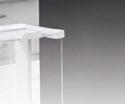


able and reliable process, and the right production partner, to provide quality powder for the highly critical needs of our space and hypersonic customers.”


The GRCop-42 alloy has reportedly been shipped to a major advanced manufacturing OEM who is currently qualifying the powder.
www.kbmadvanced.com




ELEMENTAL ANALYSIS OF METAL POWDERS & FEEDSTOCK









ELTRA’s new and innovative ELEMENTRAC series is a mile stone for C/S and O/N/H analysis in Powder Metallurgy and Additive Manufacturing: easy to use, fast analysis times and reliable results for metal powders and processed samples.



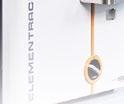











Zak Fang wins Humboldt Award for titanium powder development
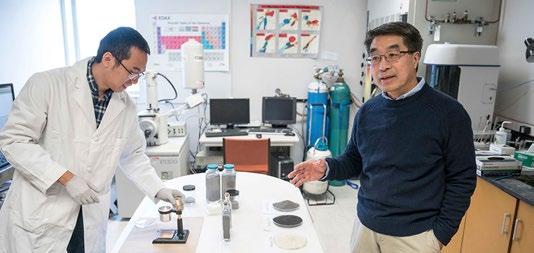

Zhigang Zak Fang, Materials Sciences and Metallurgical Engineering Professor, University of Utah, USA, has been awarded the Humboldt Research Award for his work developing the Hydrogen Assisted Metallothermic Reduction (HAMR) process. This technology is said to produce high-quality, lowcarbon emitting titanium powder at a reduced cost.
The HAMR process is based on the discovery of new science about the effects of hydrogen on the stability of Ti solid solutions with high oxygen content (up to 14 wt.%). Fang discovered that the bond between titanium and oxygen can be destabilised by inserting hydrogen atoms into the Titanium(II) oxide (Ti-O) solid solution lattices, leading to the completely new approach for sustainably producing low oxygen titanium with minimum energy and cost.
“Titanium metal is difficult to produce because of its strong affinity to oxygen,” stated Fang. “By dramatically reducing the cost and carbon dioxide emissions of producing titanium powder, the HAMR process has the potential to fundamentally disrupt and transform the global titanium metal industry.”
Today, the US imports almost 100% of the titanium sponge it consumes each year. These imports are both produced inefficiently and
often sourced from areas that face some levels of geopolitical instability, thus threatening supply chains. The current market-standard process for creating titanium metal involves heating titanium ore to around 1000°C and reacting it with chlorine gas and petroleum coke to produce titanium tetrachloride. This is then purified, reduced by molten magnesium in an argon atmosphere for up to four days, and vacuumdistilled into the porous, brittle form of titanium known as sponge. Finally, it is crushed and melted to make ingots and other titanium mill deliverables that are sent to the manufacturers of titanium products. Fang’s research is expected to improve energy efficiency drastically. The HAMR process can produce primary titanium metal from either minerals or from titanium scrap. Recycling titanium scrap is an endeavour that IperionX is also currently undertaking. Producing low-oxygen spherical titanium powder from scrap is accomplished by utilising HAMR in combination with a patented Granulation, Sintering, and Deoxygenation (GSD) process. The result is that highoxygen titanium scrap is transformed into low-oxygen titanium powders that meet or exceed stringent aerospace and biomedical industry standards.
Titanium powder can be used for Additive Manufacturing or in Powder Metallurgy to manufacture products in a broad range of demanding applications, including aerospace, defence, biomedical, and other civilian applications with increased sustainability.
The Humboldt Prize
Every year, the Alexander von Humboldt Foundation grants up to 100 Humboldt Research Awards to internationally leading researchers of all disciplines in recognition of their academic record to date. Named after the late Prussian naturalist and explorer Alexander von Humboldt, the Humboldt Prize offers a cash prize of €60,000 annually to internationally renowned scientists and scholars.
Fang is a globally recognised innovator in the areas of cemented tungsten carbide, refractory metals, titanium, Powder Metallurgy, and metal hydride for hydrogen and thermal energy storage. Prior to joining the University of Utah, Fang had a decade-long career in industrial R&D. He has authored or co-authored over 180 peer reviewed publications. He is the named sole or co-inventor in over sixty issued US patents. He founded/co-founded two start-up companies and successfully commercialised several tungsten carbide and titanium technologies.
As well as the Humboldt, Fang is a Fellow of the National Academy of Inventors, ASM, and APMI.
www.humboldt-foundation.de www.utah.edu
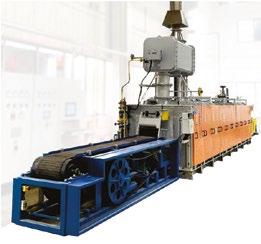
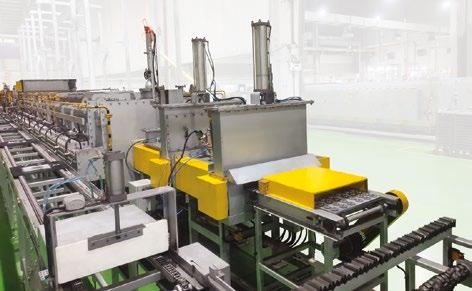


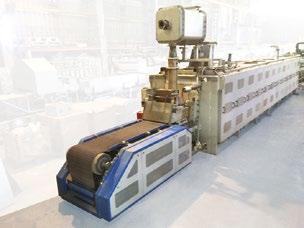
TWI invests in Hot Isostatic Pressing facilities and equipment
TWI, located in Cambridge, Cambridgeshire, UK, reports it is investing in the development of new facilities for Powder Metallurgy Hot Isostatic Pressing (PM HIP) and recently procured state-of-the-art equipment for powder outgassing operations.
Powder outgassing is a critical step in the PM HIP manufacturing process, explains TWI. It reduces various gaseous species and moisture content in the powder-filled canisters prior to HIP consolidation.
TWI acquired a modernised outgassing system equipped with a residual gas analyser (RGA). This unique combination enables the outgassing of powder-filled canisters to achieve very low vacuum levels while monitoring both the vacuum levels and the reduction of gaseous species and trapped moisture inside the powder filled canisters.
The addition of this system will allow TWI to produce safety-critical industrial parts, replacing the conventional manufacturing routes of casting, forging, welding, and machining.

www.twi-global.com
PowderMet2024 and AMPM2024 call for papers and posters
The Metal Powder Industries Federation (MPIF) has issued a call for papers and posters for next year’s International Conference on Powder Metallurgy & Particulate Materials (PowderMet2024) and Additive Manufacturing with Powder Metallurgy (AMPM2024) events.
Scheduled to take place from June 16-19, 2024, at the David L Lawrence Convention Center in Pittsburgh, Pennsylvania, USA, the co-located events will attract visitors from all aspects of the industry, including buyers and specifiers of metal powders, as well as suppliers of tooling and compacting presses, AM machines, sintering furnaces and accessories, particle-size and powder-characterisation equipment, powder handling and blending equipment, qualitycontrol and automation equipment, consulting and research services, and more.
The deadline for both oral and poster abstract submissions is November 5, 2023, with final manuscripts required by May 17, 2024.
www.mpif.org
Our electric and diesel pumps have defined reliability for 50 years, at pressures as high as 2,760 bar (40,000 psi). You don’t need a whole new system — it’s easy to integrate an NLB pump into your existing control center.
Customer support is just as reliable, with eight U.S. branches offering parts and service. Call today to learn more.
AT NLB, WE KNOW PUMP PERFORMANCE IS CRITICAL TO PRODUCTIVE ATOMIZATION.
UPGRADE TO A MORE RELIABLE PUMP WITHOUT REPLACING YOUR CURRENT SYSTEM.
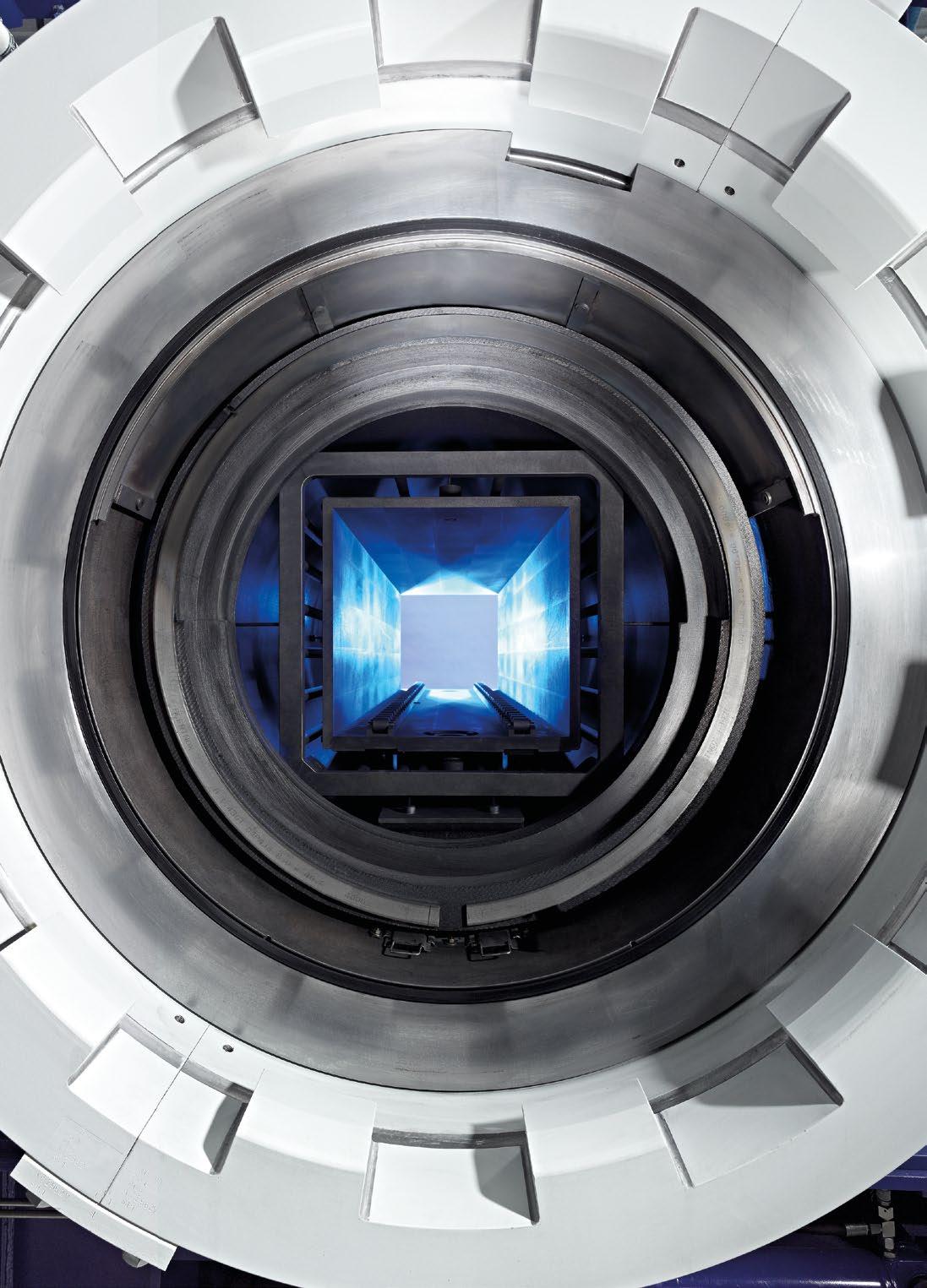


Kanthal expands production capacity to meet demand for electric furnaces

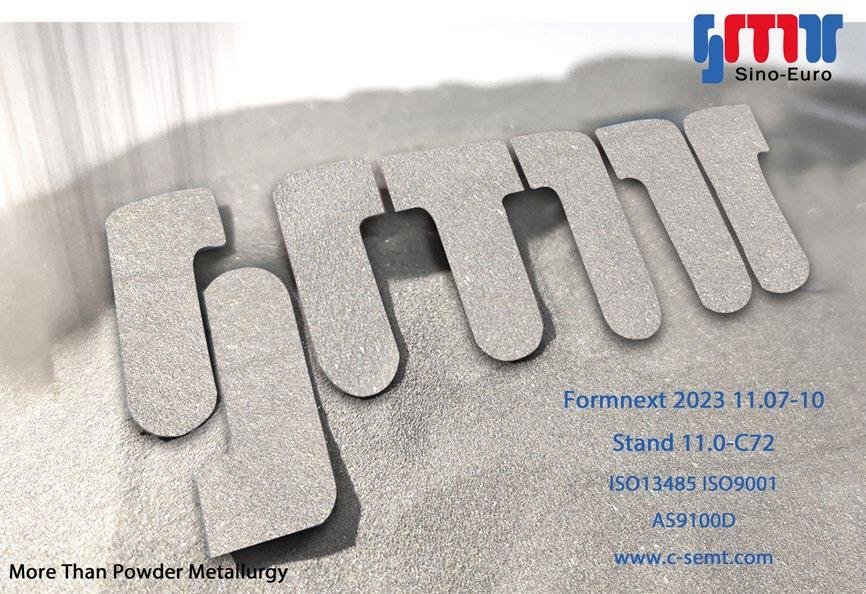
Kanthal, headquartered in Hallstahammar, Sweden, has expanded its production site in Walldorf, Germany, in an effort to capture the growth within electric industrial heating and drive operational improvements through increased automation. From the Walldorf site, Kanthal manufactures products such as Fibrothal heating modules, flow heaters, metallic heating elements, and diffusion cassettes.
“The investment ensures that we can capture the growth in electrification of industrial heating, which will require a ramp-up of our operations globally. We expect a rapidly growing demand for our traditional heating solutions, but also for our newly
Heating modules being produced in Walldorf (Courtesy Kanthal) developed high-temperature process gas heaters that are currently being tested in a number of pilot projects,” said Aaron Roy, President of Business Unit Heating Systems at Kanthal.
“This will benefit customers with better availability and faster delivery of products that will be key in achieving their sustainability goals. In addition, the expansion shows the local community that we are investing in Walldorf and offering new and attractive jobs,” Roy continued.
The investment includes expanding the current premises with approximately 2500 m² manufacturing area through a lease agreement of a nearby facility, along with new equipment and automation improvements. The number of employees is also expected to increase by approximately ten people.
The initiative, begun in May, is expected to be fully implemented in Q1 2024.
www.kanthal.com
Velta develops low-energy process for production of titanium aluminide high-performance alloy
Velta LLC, headquartered in Dnipro, Ukraine, has announced that it has developed titanium aluminide (TiAl) using a proprietary closedcycle manufacturing process. The technique will reportedly allow for new and more robust applications of intermetallic compounds across commercial and defence sectors at a fraction of the carbon footprint of traditional methods.
The conventional production of titanium metal and its alloys, such as titanium aluminide, is both energyand time-intensive, explains the company. The new Velta Ti Process, which creates titanium alloy powders from ilmenite concentrate, reportedly results in a superior product with a carbon footprint between five and ten times smaller than those made through the traditional Kroll process.
“The titanium metallurgy sector is uncommonly ripe for disruption: they’ve relied on the same outdated process, generating the same carbon footprint, for decades. That’s why we opened a research and development centre in 2017 to begin exploring new production processes,” shared Andriy Brodsky, Velta chief executive. “After years of R&D, we’re excited to bring our innovations – from pure titanium to high-performance alloys – to the market.”
Intermetallic materials have become increasingly prized in the aerospace and automotive sectors as well as civil infrastructure. Velta believes that Titanium aluminides manufactured through the Velta Ti Process have the potential to compete with superalloys. The
Velta has developed a titanium aluminide using a proprietary closed-cycle process (Courtesy Velta)
heat resistance available through superalloys, such as those based on nickel, iron-chromium-nickel, cobalt, or mixed bases, come at the cost of weight, the company adds. Titanium aluminide offers both extreme heat resistance and low weight, making it ideal for aerospace engines. Other applications include orthopaedic and dental implants and gas turbine blades for power generation.
www.velta.us
PARTICLE CHARACTERIZATION OF METAL POWDERS

Determine BET surface areas of metal powders quickly, accurately, and economically with MICROTRAC’s BELSORP MINI X Sorption Analyzer:
I Mass-related surface area as specific surface area (m²/g) is an important parameter in the evaluation of metal powders with regard to their processability.
I Simultaneous measurement of up to 4 samples with high precision.
I Rapid determination of BET surface areas with up to 12 analyses per hour - perfect for quality control of fine powders with high sample throughput.
www.microtrac.com

REE shortage may impact future of electric cars, EU study finds
The increase in electric car usage in Europe has also caused a growth in the use of the critical metals that are required for their production. A major survey led by Chalmers University of Technology, Sweden, on behalf of the European Commission, has revealed that with the current raw material production levels, there will not be enough of these metals in the future, even if recycling increases.
The need for critical metals in the EU’s vehicle fleet is steadily increasing due to electrification and digitalisation – in addition to this increasing demand, only a small proportion of metals are currently being recycled from end-of-life vehicles. Dysprosium, neodymium, manganese, and niobium are highly sought-after metals with great economic importance to the EU. However, their supply is limited, and it takes time to scale up raw material production.
“The EU is heavily dependent on imports of these metals because extraction is concentrated in a few countries such as China, South Africa and Brazil. The lack of availability is both an economic and an environmental problem for the EU, and risks delaying the transition to electric cars
and environmentally sustainable technologies. In addition, since many of these metals are scarce, we also risk making access to them difficult for future generations if we are unable to use what is already in circulation,” said Maria Ljunggren, Associate Professor in Sustainable Materials Management at Chalmers University.
Ljunggren points out that this situation is underlined in the Critical Raw Materials Act recently put forward by the European Commission. The Act emphasises the need to enhance cooperation with reliable external trading partners and for member states to improve the recycling of both critical and strategic raw materials. It also stresses the importance of European countries exploring their own geological resources.
One example of this is the previously announced discovery of significant rare earth metal deposits in Kiruna, Sweden, by state-owned mining company LKAB. Successful exploration enabled the company to identify mineral resources of more than a million tonnes of oxides – which they now describe as the largest known deposit of its kind in Europe. “This is extremely interesting, especially the discovery of neodymium which, among other things, is used in magnets in electric motors. The hope is that it will help make us less dependent on imports in the long run,” Ljunggen adds.
In collaboration with the Swiss Federal Laboratories for Materials Science and Technology, EMPA, Ljunggren has surveyed the metals currently used in Europe’s vehicle fleet. The European Commission’s Joint Research Centre (JRC) commissioned the assignment, which reportedly resulted in an extensive database that displays the presence of metals in new vehicles, vehicles in use, and vehicles that are recycled over time.
“Neodymium and dysprosium usage has increased by around 400 and 1,700% respectively in new cars over the period, and this is even before electrification had taken off. Gold and silver, which are not listed as critical metals but have great economic value, have increased by around 80%,” Ljunggren commented.
The idea behind the survey and database is to provide decision-makers, companies and organisations with an evidence base to support a more sustainable use of the EU’s critical metals. A major challenge is, however, that these materials, which are found in very small concentrations in each car, are economically difficult to recycle.
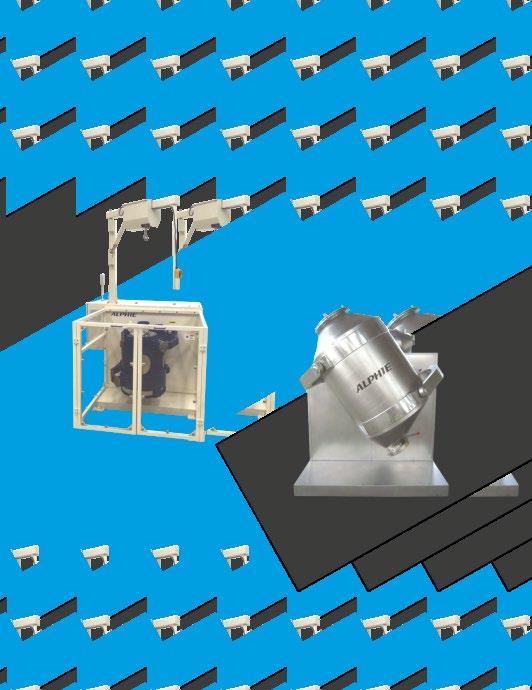
“If recycling is to increase, cars need to be designed to enable these metals to be recovered, while incentives and flexible processes for more recycling need to be put in place. But that’s not the current reality. It is important to increase recycling. At the same time, it is clear that an increase in recycling alone cannot meet requirements in the foreseeable future, just because the need for critical metals in new cars is increasing so much. Therefore, there needs to be a greater focus on how we can substitute other materials for these metals. But in the short term it will be necessary to increase extraction in mines if electrification is not to be held back,” Ljunggren concludes.
www.chalmers.se
Howard
I Sanderow Outstanding Technical Paper Award announced

The Metal Powder Industries Federation (MPIF) has announced that the paper titled ‘Sustainable Alloy for Powder Metallurgy (PM) Structural Components’ by Roland T Warzel III, Amber Tims, Bo Hu (North American Höganäs) and Per-Olof Larsson (Höganäs AB, Sweden) has been selected for the 2023 Howard I Sanderow Outstanding Technical Paper Award.

The paper describes a new PM alloy that has been developed to provide the mechanical performance of copper steels without using copper as an alloying element. The paper details the properties of the new alloy in comparison to common copper steels. The importance of this exploration is emphasised by the rise of


Photomicrographs comparing the new alloy to copper steels. Top: new alloy steels, bottom: copper steels (Courtesy MPIF/Höganäs AB)
battery electric vehicles and electrification, which are highly dependent on copper due to its electrical and thermal conductivity properties.
The Outstanding Technical Paper Award, renamed in honour of Howard I Sanderow in 2009, was established in 1993 to recognise authors of manuscripts for excellence in scientific and technical written communication. The manuscripts are selected from papers presented and
submitted for publication at MPIF’s annual PowderMet conference.
The award aims to enhance the quality of technology transfer in the PM literature by increasing the professional level of papers submitted for the annual technical conference. Additionally, it promotes the science and technology that is fundamental to Powder Metallurgy products, processes, and materials.
www.mpif.org
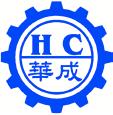
Honorary sponsor
Reconfigure manufacturing!
Demand for increasingly complex and customized parts is rising, product cycles are becoming shorter, established supply chains are being called into question and sustainability is playing an ever greater role.

In short: Industrial production is becoming more demanding. Additive Manufacturing offers solutions to meet these challenges and inspire your customers.
Be ahead of your competition: Visit Formnext, the international expo and convention for Additive Manufacturing in Frankfurt am Main, Germany.
Where ideas take shape
Early bird discount until 10 October 2023
Secure tickets! formnext.com/tickets
7 – 10.11.2023 FRANKFURT / GERMANY Messe Frankfurt GroupPyroGenesis Additive: Making waves in plasma atomised metal powder production once again
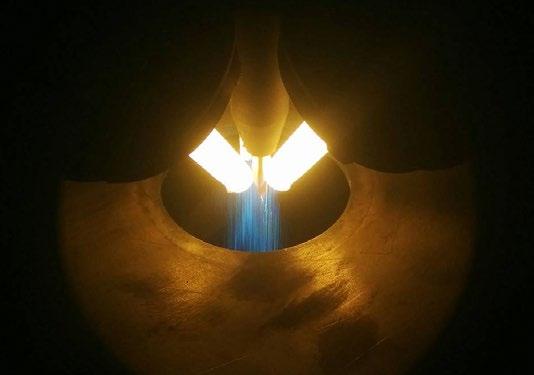
With the promise of ‘next-generation’ plasma atomisation technology, a large order announced for its titanium powder from the AM industry, and reports of a supply partnership with a major aerospace OEM on the cards, the future looks good for Canada’s PyroGenesis Additive. In this article, Alan Smith reports on the company’s history in metal powders, its vision for the future, and how a combination of the rise of Additive Manufacturing, a drive towards decarbonisation by heavy industry, and concerns around commodity security have fundamentally changed the landscape for metal powder producers.
Time is somewhat of a relative concept for Massimo Dattilo, Vice President, Sales, and his company, PyroGenesis Additive, a subsidiary of industrial plasma technology corporation PyroGenesis. Outwardly, the company has appeared to be remarkably unhurried, working by its own clock since quietly announcing back in 2015 that it was ramping up for an eventual re-entry to metal powder production for the Additive Manufacturing industry. Behind the scenes, however, lies a different story.
The company’s long-promised NexGenTM plasma atomisation metal powder production system has been steadily reaching one milestone after another. Designing and building its new technology, refining, testing, and eventually sending out samples in larger and larger batches, to Dattilo and his colleagues the progress has been far from slow. But this year, everything has moved into a higher gear based on his company’s willingness to start accepting initial orders for its powders. “The interest has been big,” stated Dattilo, commenting on PyroGenesis Additive’s experi -
ence since participating in the first of 2023’s major AM tradeshows, Rapid + TCT, held in Chicago in May.
In truth, the interest has been there for a while. Potential clients from around the world have been calling the company for the past few years, asking about its production
timelines, seeking to place an order or at least get test samples of the company’s metal powders – powders that the company has repeatedly stated to be among the highest quality in the marketplace. Yet the company, which was initially active in powder production in the late
The anonymous client, who
reveals to
1990s and early 2000s, has largely kept these requests at bay. The decision to work with only a select few clients, who even then were only provided with test samples, contributed to the perception that the company’s progression has been slow.
“Methodical,” Peter Pascali, President and CEO of the firm’s parent company, PyroGenesis Canada, responded. “We have a plan and we’ve stuck to it despite tremendous pressure. And now we are here.” Here refers to commercialisation, meaning orders, something that the company had seemingly once displayed a reluctance to accept.
It, therefore, came as a surprise when PyroGenesis announced in late May 2023 that it had signed a contract to deliver 5 tonnes of titanium metal powder. The anonymous client, who Dattilo only reveals to be “an American advanced materials firm,” also signed an option for an additional 6 tonnes of Ti.
All of this has stirred renewed attention to this publicly traded Montreal-based firm that, as some in the industry may be unaware, can lay claim to being the original developers of the plasma atomisation approach to powder production, before selling off its early technology.
Opportunities in a new manufacturing landscape
To help provide context to PyroGenesis Additive’s recent surge of news and its return to the metal powder scene, PM Review asked the company to share insight into its history, technology, business approach, future expectations, and its reasons for getting back into metal powder production.
According to Pascali, it all starts with some major changes in the industrial landscape that have been beneficial to PyroGenesis’ business. “In the last five years some new motivations for big industry have appeared. Several key commodities have reached critical status and supply chains have been shown to be vulnerable; some traditional raw material supply countries can no longer be counted on as an infinite source. Commodity security has become a real issue. Metal costs are all over the place. And through it all, Additive Manufacturing is accelerating in step with the rising demand for lightweight and strong metals, for electronics, aerospace, and electric vehicles. And then there’s decarbonisation.”
What Pascali is referring to is the growing industrial effort to lower emissions as well as reduce reliance on fossil fuels and dangerous chemi -
cals. This is not only an attempt to avoid the rapidly increasing carbon pollution taxes set by governments on big emitters, but also to meet the promises made by heavy industry related to the Paris environmental agreement that seeks to cut emissions by up to 50% by 2030 and reach net zero by 2050. As a company that specialises in plasma – electrically charged particles within superheated greenhousegas-free gases such as argon, nitrogen, oxygen, or even steam –PyroGenesis sees its heavy industry customers suddenly awakening to a variety of potential new uses for plasma.
This could all be seen as ‘Right tech, right time’ – a result of a company diligently improving its primary technology over decades and eventually intersecting with major industries whose hands are being forced by a combination of rising demand, risk reduction measures, and external pressure for change.
As Pascali describes it, for many years plasma was often considered a solution looking for a problem or a process looking for an application. While plasma has been in use in various forms since the 1960s, plasma at the elevated power level needed for ultra-high temperature industrial applications was, for many years, often deemed too expensive. The electricity cost simply outweighed the benefit, especially in the absence of meaningful constraints on the burning of diesel fuel and coal. Now, that’s all changing.
Seeing a clear need for heavy industry to increase its production speed, reduce its environmental impact, use fewer steps, decrease waste, and utilise alternative power sources, PyroGenesis stepped up its game, gradually increasing its staff count, adding a second factory, and making metal powder production a primary business focus.
“When you combine commodity security with decarbonisation –which in effect is fuel switching, from fossil fuels to electricity and
“It, therefore, came as a surprise when PyroGenesis announced in late May 2023 that it had signed a contract to deliver 5 tonnes of titanium metal powder.
Dattilo only
be “an American advanced materials firm,” also signed an option for an additional 6 tonnes of Ti.”
green fuels – both plasma and our company suddenly becomes more relevant for a host of new applications, not the least of which is metal powders,” Pascali adds.
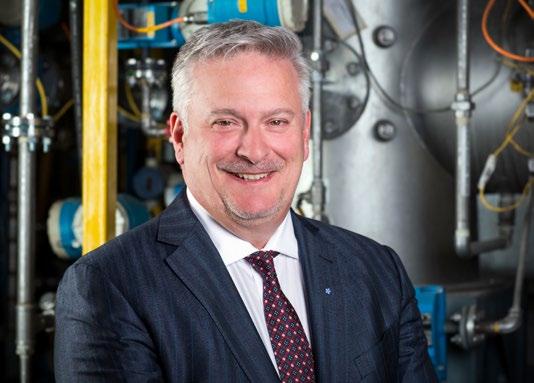
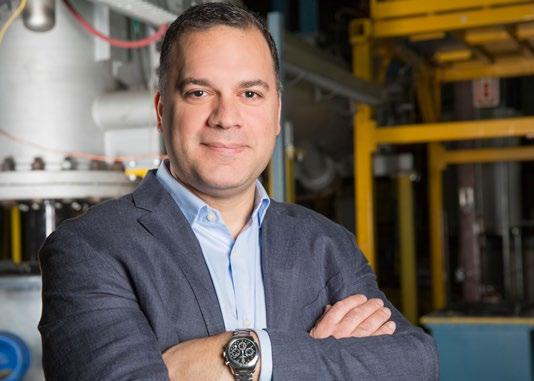
“In a way, we didn’t change our mandate as much as heavy industry started catching up to our approach. Plasma-based solutions can simultaneously help companies produce at the same or better quality while being better corporate citizens. A return to metal powder production was a natural part of that equation, as using metal powders produced through plasma atomisation is another way for companies to show they are reducing their carbon footprint. Obviously, plasma is produced using electricity, but there’s also fewer steps involved as the final product is produced directly from wire feedstock, plus there is the potential for higher yields. There are a lot of advantages.”
Those advantages were what initially attracted PyroGenesis to metal powder production after many years supplying custom plasma-based engineering solutions, including hazardous waste destruction, for the likes of the US Navy and various government and research institutes. Having assembled some of the top plasma engineers in the world, over time the company’s R&D efforts would result in a variety of unique applications, one of which was for metal powder production. Using plasma that can be as hot as the surface of the sun to melt and atomise metal feedstock into fine powders was centre stage in the company’s wheelhouse.
The company developed and patented the process and conducted pilot scale testing in the mid to late 1990s, eventually building full scale powder production towers. Today, plasma atomisation is a standard approach for AM powder production, with its ability to produce highpurity spherical powders in a variety of size ranges direct from wire feedstock, and without using any of the chemicals used in some other metal powder production methods.
“This could all be seen as ‘Right tech, right time’; a result of a company diligently improving its primary technology over decades and eventually intersecting with major industries whose hands are being forced by a combination of rising demand, risk reduction measures, and external pressure for change..”Fig. 3 Massimo Dattilo, Vice President, Sales, at PyroGenesis Additive (Courtesy PyroGenesis) Fig. 2 Peter Pascali, President and CEO of PyroGenesis Canada, (Courtesy PyroGenesis)
The winding road to success in powder supply for Additive Manufacturing

But PyroGenesis’ future in AM would follow a winding road. According to Pascali, PyroGenesis’ development of its initial plasma atomisation technology was in support of the biomedical industry, and as part of a larger effort to help produce a lightweight armour for NATO. With Additive Manufacturing yet to mature, the option to become a powder distributor wasn’t appealing, and the company sold off its existing technology.
While not regretting the decision, the subsequent widespread improvements in hardware that helped to drive AM growth, on top of feedback
from the company’s chief scientists and engineers that they had high hopes for some new technology discoveries, convinced Pascali to make another run in 2015, but only if a ground-up rethink focused on optimising for AM was conducted. “Whole new technology, all new patents,” says Dattilo. “We think we’ve taken plasma atomisation to the next level. This is plasma atomisation for the future and it’s ready to go now.” But getting to this point was no small effort, as, in addition to building a new technology from scratch, the company undertook a measured but lengthy series of steps, including with external organisations to ensure its focus and decision-making was sound and up to date. Transforming its production location into a state-of-
the-art facility, the company obtained ISO9001 and AS9100D certifications.
The company also formed an exclusive partnership agreement with Aubert & Duval, the France-based materials and parts supplier recently purchased by a consortium of Airbus, Safran, and Tikehau Capital. The agreement is for eventual distribution of PyroGenesis Additive’s titanium powder in certain parts of Europe.
The aerospace OEM
Perhaps the news that has attracted the most attention has concerned the company’s pursuit of official supplier status with a global aerospace OEM. The client, who Dattilo says is “one of the largest and most notable companies in the world”, has put PyroGenesis Additive through a rigorous multi-year process, assessing all aspects of the company, including its processes and, of course, its powders.
“We wanted this, and it’s been awesome,” assures Dattilo. “The supplier qualification process has been formidable, but it has only served to make us better. If our objective is to be a supplier of powders across all levels, including the highest quality levels, it was important for us to be assessed by the highest quality client. This has been an incredible process to go through, truly transformative.” If achieved, the upstart producer will be listed as an official supplier to the OEM, which would also qualify the company’s powder for use by the OEM’s part suppliers and service centres.
So far, the company has met all of the requirements demanded by the OEM. This alone is a significant achievement for a new firm with new technology, especially considering that the aerospace sector was previously unfamiliar for the company. With no prior experience working with aerospace clientele, adapting to the intricate web of industry standards, especially AS9100D, was a steep learning curve indeed.
“The client, who Dattilo says is “one of the largest and most notable companies in the world”, has put PyroGenesis Additive through a rigorous multi-year process, assessing all aspects of the company, including its processes and, of course, its powders.”Fig. 4 Plasma atomised titanium powder produced by PyroGenesis Additive (Courtesy PyroGenesis)
The AS9100D quality management standard, known for its stringent quality assurance levels, required a meticulous scrutiny of PyroGenesis Additive’s processes. The benchmark led the company to re-evaluate and refine its quality assurance procedures as well as its work instructions to ensure that they were aligned with the gold standard demanded by the aerospace sector, particularly in regard to precision and consistency expectations.
The client qualification process brought the OEM’s audit team to PyroGenesis’ production facility for an on-site evaluation. Dattilo says, “Its keen observation and constructive feedback resulted in several findings. Each of these illuminated areas of improvement for us, assuring our commitment to excellence and our ability to meet challenges head-on with swift resolutions. Aerospace-compliance is no joke. We feel an immense gratitude for being invited on this journey with the client.”
The company is now in the final qualification phase and anticipates one of the most critical assessments yet as powder samples undergo evaluation. Reflecting on the process, Dattilo believes that the rewards have far outweighed the challenges. It is clearly rare for what is essentially a start-up to be introducing its new technology and new product to a major global aerospace firm. However, as Dattilo reminds us, the parent company’s thirty-year history provides advantages that other new firms do not have.
“Aside from having some of the world’s best plasma experts under our roof, including many who worked on the original plasma atomisation systems developed back in the late 1990s, our parent company, PyroGenesis, has an unwavering dedication to growth, learning, and quality”, he says. “They had already been through and passed the rigours of the US military’s assessment process and have been working with the US Navy for over a decade. That type of history and attention to detail was a great help during this process.”
So, while the company waits on the results of the OEM qualification, movement has continued in other areas, bringing fresh challenges and excitement daily.
The shift to high volume orders
It’s one thing to deliver test batches of a few grams or even a few hundred grams. It’s quite another to produce and ship by the tonne. The transition represented in the company’s above noted 5-tonne order for Ti powder marks a pivotal moment, and brings numerous considerations, many of which were anticipated and subsequently planned for by the company’s engineering and business teams.
On the technical front, the variability of a process that functions seamlessly in a controlled, lowvolume setting might manifest differently when amplified, due to unforeseen variables or equipment differences. For instance, machinery optimised for smaller volumes might not mirror the performance characteristics of industrial-scale efforts. Moreover, as production scales, ensuring consistent quality becomes an intricate dance.
Economically, the scale-up journey to commercialisation – encompassing equipment, infrastructure, and workforce – can be arduous. Early commercial produc -
tion might not hit the sweet spot of efficiency, while stakeholders, with an eye on the bottom line, press for a swifter return on investment. As a division of the publicly traded parent company in Canada (TSX: PYR.TO) and the US (NASDAQ: PYR), the scrutiny is magnified.
AM’s reality check
The AM industry has certainly felt the economic pressure. Stocks related to AM were hit particularly hard over the past two years, as the pandemic crushed demand for new systems to support aerospace and automotive – industries that were heavily sidelined during the period – resulting in heavy losses and investor disenchantment for many in the sector. While offering a broader array of solutions beyond AM powders, the parent company, PyroGenesis, has not been immune to the market volatility. The company’s stock surged significantly in late 2020 along with many of its small cap growth peers, partly as a result of being added to the portfolio of a high-profile US ETF specific to the Additive Manufacturing industry. But, like so many others, the stock price fell back considerably as the market turned against technology stocks starting in February 2021.
The pandemic also revealed the fragility of global supply chains,
“It’s one thing to deliver test batches of a few grams or even a few hundred grams. It’s quite another to produce and ship by the tonne. The transition represented in the company’s above noted 5-tonne order for Ti powder marks a pivotal moment...”
which many new companies might be forgiven for finding particularly intimidating. In procuring raw materials during a period of almost unprecedented global uncertainty, especially niche materials like titanium wire, the parent company’s lengthy operational history and familiarity with overseas suppliers proved beneficial. “The last few years were a real test for the whole sector. As a startup, having an experienced parent company was invaluable,” says Dattilo. For any company moving along the growth chain from R&D to pilot and commercialisation, the considerations, as Dattilo detailed, are numerous:
• Logistics, handling, storage, and transportation all become more complex as scale increases, with metal powders assigned strict regulations and safety protocols due to flammability and volatility concerns that multiply with order size.
• Operationally, the leap to commercialisation can require different employee skill sets, prompting fresh hires or extensive training of existing staff. The intricacies of managing a subsequently larger operation demand more robust systems and airtight protocols.
• Intellectual property, the lifeblood of innovation, needs vigilant protection, espe -
cially when entering globally competitive waters. This might also necessitate intricate negotiations around licensing and partnerships.
• Culturally, bridging the gap between the innovative spirit of R&D and the efficiency-driven world of commercial production can be a tightrope walk. Aligning the expectations of a diverse set of stakeholders, both within and outside the organisation, requires finesse.
As PyroGenesis Additive begins to accept orders, management is confident that it has gauged the market dynamics accurately. While AM demand over the last few years has dramatically slowed, key sectors that were heavily impacted by the pandemic, such as aerospace, have rebounded, and the overall manufacturing turnaround continues. The Biden administration’s launch of the Additive Manufacturing Forward initiative in 2022 introduced an aid package to promote innovation and adoption of AM, offering further industry stimulus, especially for those manufacturers who are yet to fully embrace the technology.
Pascali feels that these two factors bode well for both AM in general and, particularly, PyroGenesis Additive. “Certainly, our timing is good, as we are beginning
commercialisation right when the fog is lifting on the challenges of the past few years. In our view AM was always going to grow, and not just recover. The goal for us now is to closely manage our production and yields and keep refining our technology. If we do those two things, our output and our margins will continue to improve. We already believe plasma atomisation offers the best solution. After all, the goal of NexGen was to improve on what was already the best.”
While some may quibble with what technology should be declared the best for metal powder production, there is no doubt that plasma atomisation has made a significant claim to the title. Dattilo confides that its new NexGen technology only builds on the advantages that earlier versions of plasma atomisation offered, namely a higher degree of sphericity than what’s possible through gas atomisation and, to the benefit of more precise manufacturing applications, finer powders and narrower particle size distribution. And of course, the dominant industry leader, GE Additive’s AP&C, has built its leadership position using plasma atomisation.
Whether or not PyroGenesis
Additive’s new NexGen technology and its metal powder turns out to be as good as the company says it will be, its success as a supplier depends on more than just great product. The Additive Manufacturing landscape is nothing if not dynamic, and cost competitiveness, financing flexibility, production and delivery timelines, willingness to accept custom, undersized, or outsized orders, and the ability to introduce additional alloys, can all play a role. So too can relationship building skills, and navigating the various commercial options and aspects of the powder supplier to hardware network will require both a steady hand and a flexibility in approach – traits that Dattilo says PyroGenesis has demonstrated with other technologies throughout its history.
“The Additive Manufacturing landscape is nothing if not dynamic, and cost competitiveness, financing flexibility, production and delivery timelines, willingness to accept custom, undersized, or outsized orders, and the ability to introduce additional alloys, can all play a role.”
Finding one’s place in the market
Does the company target long-term contracts and supply agreements with a smaller group of clients, which offer the dual advantage of price stability and uninterrupted supply? Or does it instead become an all-comers supplier? And will it white label for others?
“There is a certain allure to offering bespoke services, with customised compositions and alloy blends available for anyone who calls. However, there is just as much appeal to being a major supplier for a small number of large customers,” says Dattilo. “Pros and cons with each, especially with respect to the after-sales support pressure.”
“Right now, though, we have been focused on gaining what we feel is an elite level acceptance with highly regarded partners, hence our long commitment to the aerospace OEM certification process and our existing partnership with Aubert & Duval. To us, those are the two most important relationships, as they have been the biggest supporters of our company, technology, and product. We have also publicly stated our intention to open a production plant in Europe, so

our vision certainly extends beyond North America. We don’t want to reveal too much further about our business strategy, other than we are open for business.”
With its journey of technology development and pilot testing reaching its end, and another of commercialisation just beginning, PyroGenesis Additive looks ahead. For this new entrant to an ever-burgeoning field, and for the industry overall, continued global economic uncertainty means that many questions remain unanswered. Whether the manufacturing sector continues to be hampered by ongoing supply chain reliability and geopolitical tensions is still unknown, as are the near-term effects of AM incentive programs, deglobalisation and geo-economic fragmentation stemming from the North American reshoring movement, and the levelling off of inflationary pressure on raw material and labour costs. But PyroGenesis Additive is upbeat.
Conclusion
As Pascali summarises, “Our broader business is centred around technologies that give heavy industry an opportunity to maximise
its commodity security and lower its dependence on fossil fuels, forever. It’s beyond a corporate good – it’s a common good. That may sound cliché, but if heavy industry emission reduction commitments play out as they seem to be, it will truly be world changing, and we will be a part of it.”
He concludes, “Ultimately, we want to play just as big a role in the manufacturing industry’s continued switch to Additive Manufacturing. Re-entering this market has been an enormous undertaking for us, but it’s a controlled risk, as we only see demand for AM, and titanium powder in particular, increasing. We want to drive the industry forward. Producing what we believe will be the best product from the most advanced, most responsible method will be our contribution.”
Contact Massimo Dattilo, B.Eng, MBA Vice President PyroGenesis Additive 1744 Rue William, Bureau 200 Montréal (Québec) H3J 1R4 Canada




Outokumpu: Bringing a new dimension to Additive Manufacturing with stainless steel powder s
Outokumpu Oyj, headquartered in Helsinki, Finland, is the largest producer of stainless steel in Europe. The development of a new atomisation plant in Krefeld, Germany, marks the company’s entry into the field of metal powders, with the Additive Manufacturing market in its sights. Here, Outokumpu’s Andoni SanchezValverde Erice, explains how spherical stainless steel powder feedstock can offer high-quality, customisable and sustainable solutions. He also introduces 904L powder, a super austenitic stainless steel, as an alternative to nickel-base alloys in highly demanding applications.
Additive Manufacturing is becoming increasingly important for designers who want to create lightweight, complex and custom-made components in small quantities within compressed lead times. The mechanical performance and corrosion resistance of stainless steel makes it an attractive material for this manufacturing route. However, an important challenge has been the widespread availability of suitable powder grades.
To bridge this gap, Outokumpu has launched a new metal powder business for Additive Manufacturing and other PM processes that includes the commissioning of a new atomisation plant at its steel mill in Krefeld, Germany (Fig. 1).
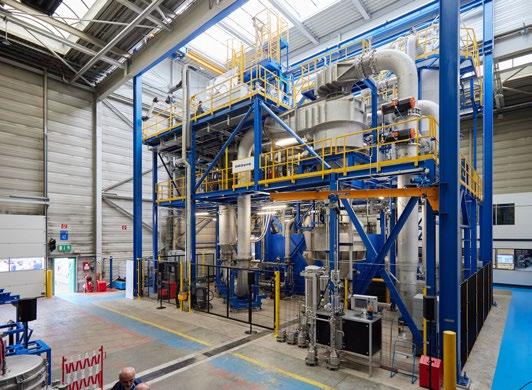
The business will draw on Outokumpu’s knowledge as a global leader in stainless steel and offer a wide portfolio of metal powders in different grades, including stainless steel and nickel alloys, for a diverse range of applications.
From an environmental perspective, the new powder plant acts as a
large recycling unit that uses scrap resulting from existing production processes. Further, Outokumpu is planning for its service to go beyond the production of metal powder to create a wider AM ecosystem.
Serving a range of AM processes
The essential raw material for all Powder Metallurgy processes is high-quality metal powder. The most
well-established process is ‘press & sinter’ PM, which has been used for more than a century. The industry has evolved to include Hot Isostatic Pressing (HIP) and Metal Injection Moulding (MIM) and, more recently, Additive Manufacturing (Fig. 2).
The growing importance of AM is based on its ability to increase the complexity of produced parts, decrease lead times, avoid supply chain disruptions, and reduce the weight of the parts to be produced. Metal powder and AM technologies are, therefore, a perfect match for highly-demanding applications in industries such as aerospace, healthcare, oil & gas, and automotive. For this reason, the expected Compound Annual Growth (CAGR) for AM technologies is expected to be just over 26% until 2027 [1]. The individual technologies within AM include:
Binder Jetting (BJT)
In Binder Jetting, an adhesive binding agent is deposited on thin layers of powder. A print head moves over the platform where it deposits droplets in the same way that a 2D printer puts ink on the paper. As each layer is completed, the powder bed moves downwards. The BJT machine then spreads a new layer of powder onto the platform. This continues layer by layer until the component is complete. Following the build, the component is in the ‘green’ state and requires sintering before it can be used.
Powder Bed Fusion (PBF)
In Powder Bed Fusion, a laser (PBFLB) or electron beam (PBF-EB) is used to melt and fuse the metal powder together. As the process continues, the powder is spread over
previous fused layers by a blade or roller, gradually building up the component.
Powder-based Directed Energy Deposition (DED)
In Directed Energy Deposition, an object is formed by melting material as it is being deposited, using focused thermal energy such as a laser, electron beam or plasma arc. A gantry system or robotic arm is used to manipulate both the material feed nozzle and the energy source.
Stainless steel for enhanced performance
The reason for selecting stainless steel for AM lies in its superior corrosion and mechanical properties when compared with other steel types. This makes it possible to design longer lasting, sustainable components. Stainless steel is currently the third-most preferred feedstock for AM industries by weight, behind titanium and nickel alloys. However, this situation is changing rapidly and, by 2027, it is expected that stainless steel will be the most used feedstock with a market share of 33% [1].
To produce stainless steel powder, Outokumpu invested in vacuum induction/inert gas atomisation (VIGA) process equipment. Fig. 3 shows a schematic of the process. The VIGA process produces highly spherical metal powders that are ideally-suited for AM, MIM and HIP in a range of diameters between 0-300 µm. Details of the process equipment are shown in Fig. 4.
Generally, the starting material is scrap from flat product processing at Krefeld. This provided a very strong sustainability argument for the launch of Outokumpu’s metal powders business. The material is cut into small pieces suitable for the process – typically 25 x 25 x 1~4 mm. These small pieces are then placed in the furnace crucible.
Vacuum conditions for melting avoid possible oxygen contamination and burning important elements
“Stainless steel is currently the third mostpreferred feedstock for AM industries by weight, behind titanium and nickel alloys. However, this situation is changing quickly and by 2027 it is expected that stainless steel will be the most used feedstock with a market share of 33%.”
of the melt. Flushing with argon/ nitrogen occurs directly after vacuum conditions are reached and before starting the melt process. All the important process parameters such as temperature, pressure, oxygen and vacuum are measured and closely controlled. Chemical analysis of the melt can be carried out to check if further alloying is required to achieve the correct composition.
In the atomisation stage, the melt flows through the tundish and is then atomised into very small droplets by nitrogen or argon gas at high pressure and temperatures (up to 32 bar and 450°C). Here the small droplets solidify rapidly in a spherical form and fly through the pipes to the cyclone. Next, the solidified powder is separated from the gas and collected in the collection bins.
Mechanical sieving and an air classifier are used to separate the powder into the various sizes required by different processing
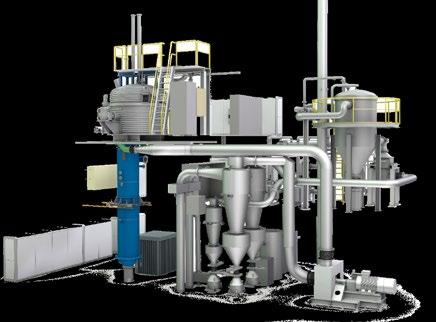
technologies. For example, in a case where a customer requires no more than 5% of their powder smaller than 20 µm, the air classifier can be used to separate the smaller powders from the batch.
Outokumpu’s powder service offers a high degree of flexibility for customers. Different sizes of crucible can be used to support the development of new alloys in small batches, and nitrogen or argon can be used as the atomisation gas according to the required powder size and morphology. A special nozzle design can also be used for close-coupled atomisation to increase the content of fine powders in the range up to 63 µm.
All necessary powder characterisation techniques are included in fully-equipped laboratories to ensure the highest powder quality. Techniques available include both physical analysis (density measurement and flowability) and chemical analysis.
Why offer a choice of nitrogen or argon gas for atomisation?

Outokumpu offers customers the choice between nitrogen (N) and argon (Ar) as the atomisation gas for their powders for four main reasons. Firstly, in terms of cost, argon costs more than nitrogen and this has an impact on the price of the finished powder.
Secondly, with regards to morphology, nitrogen has a higher heat capacity than argon. This means that a powder atomised with argon will have more time to achieve the desired spherical morphology before it solidifies. Using nitrogen will cause the powder to solidify faster, and in a more irregular shape, although still being highly spherical.
Thirdly, it should also be noted that when using nitrogen rather than argon to atomise a batch of powder under the same temperature and pressure conditions, the proportion of fine powders is higher. This can be
of interest for some AM technologies. The full explanation for this effect is quite technical and outside the scope of this article. However, in simple terms, nitrogen atoms are smaller than argon atoms. This means that, at the same temperature and pressure, less energy is needed to divide the metal into a higher number of small droplets.
Lastly, the atomising gas can also influence the mechanical and corrosion properties of powders. As an example, using nitrogen can increase both the machinability and corrosion properties of additively manufactured parts.

The crucial difference provided by anti-satellite technology
Anti-satellite technology is a crucial feature of an advanced powder production process. As shown in Fig. 5, satellites are small droplets that can adhere to the larger spherical particles. This can be avoided by recirculating argon or nitrogen into the atomisation tower. The effect of this gas is to push the very small droplets to the bottom, and this reduces the possibility of satellites forming on the solidifying particles.
When satellites occur, the quality of the built parts might be impacted as a result of poor or inconsistent spreadability during recoating, and a reduction in the apparent density and packing of the powder.
Delivering a range of sizes
Different powder sizes are required for each Powder Metallurgy process. Therefore, Outokumpu’s products are differentiated by a number of factors including the stainless steel or nickel-base alloy grade, the gas used for atomisation, and also the size. We produce powders up to 300 µm to suit these AM and PM technologies:
• Binder Jetting: <20 µm
• Laser Beam Powder Bed Fusion: 15 to 45 µm and 20 to 63 µm
• Electron Beam Powder Bed Fusion: 20 to 150 µm
• Direct Energy Deposition: 20~45 to 150 µm
• Metal Injection Moulding: <20 µm
• Hot Isostatic Pressing (HIP): 0-300 µm
An extended portfolio of stainless steel grades
At present, the most widely-used stainless steel grades in AM and
“Anti-satellite technology is a crucial feature of an advanced powder production process. As shown in Fig. 5, satellites are small droplets that can adhere to the larger spherical particles. This can be avoided by recirculating argon or nitrogen into the atomisation tower.”
other powder technologies are 316L and 17-4PH. Outokumpu is introducing new stainless steel grades that will offer a closer match for the demanding requirements of highperformance applications. What are currently regarded as ‘commodity’ stainless steels grades for Powder Metallurgy technologies are:
316L (1.4404)
A low-carbon alternative to 316. This minimises carbide precipitation as a result of heat input, for example during welding, giving improved resistance against intergranular corrosion. 316L is suitable for a wide variety of applications in the automotive, chemical, petrochemical and medical industries. Typical products include flanges, valves, and medical devices.
17-4PH (1.4548)
A well-known martensitic precipitation hardening (PH) steel with alloying elements such as chromium or nickel. It has good corrosion prop -
erties and excellent mechanical properties up to 300°C. It is used in the aerospace, pulp and paper and nuclear industries for products such as mechanical seals, pumps or turbine blades.
Added-value special stainless steel grades developed for Powder Metallurgy technologies include:
904L (1.4539)
A special grade for high-corrosion environments. It is a high-nickel and molybdenum austenitic stainless steel with very high corrosion resistance. It was originally developed for handling sulphuric acid at ambient temperatures and is now used in a broad range of applications in the oil & gas, and chemical industries. Typical parts produced from 904L are pumps, valves and flanges.
253MA (1.4835)
A special grade for high-temperature applications. This is an austenitic stainless steel with excellent oxida -
tion and creep resistance in cyclic conditions that is best employed in temperatures up to 1,150°C. It is used in the oil & gas, aerospace and motorsport industries for parts such as fittings and heat exchangers.
1.4116
A special grade that is a high-hardness martensitic stainless steel with improved corrosion and wear resistance compared to other martensitic stainless steels. It is used in the healthcare and consumer goods industries for products such as medical devices and knives.
Nickel-free austenitic stainless steel powder (modified 1.4678)
This specially-developed Ni-free stainless steel powder is an ideal substitute for 316L or Co-Cr alloys. It is also a perfect grade to avoid Ni-allergic reactions in health applications or consumer good applications for products such as watches and other items worn close to the body.
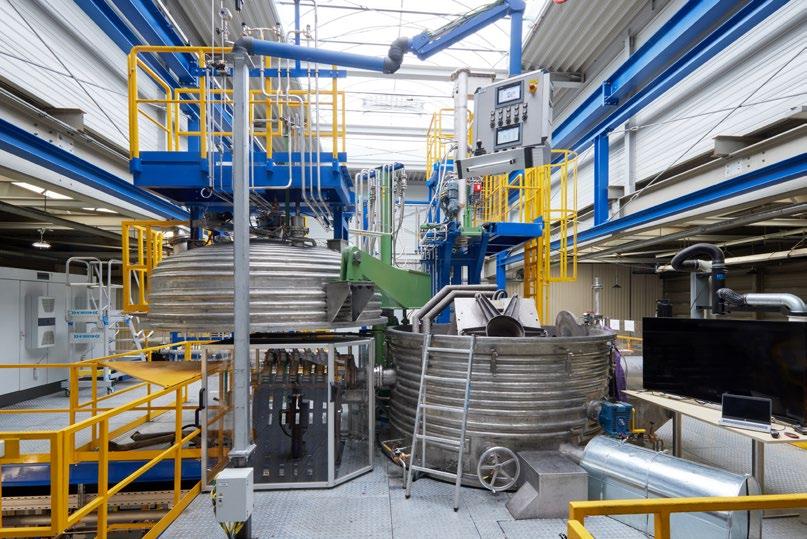
Ni-base alloys
Outokumpu’s portfolio of metal powders also features Ni-based alloys:
Alloy 625
For use in very harsh, corrosive environments at high temperatures. Alloy 625 combines nickel, chromium, molybdenum and niobium, giving it excellent corrosion and mechanical properties. When compared with Alloy 718, Alloy 625 has a greater overall resistance to oxidation. It is
used in the oil & gas, aerospace and defence industries for components such as fittings, rocket parts, heat exchangers and vessels.
Alloy 718
This Ni-based alloy is also used for high corrosion environments and at high temperatures. It has additions of molybdenum, tantalum, aluminium and titanium that provide higher strength and better weldability, as well as improved stress corrosion cracking (SCC) resistance than alloy 625. It is used in the oil & gas, aero -
space and defence industries for components such as fittings, rocket parts, heat exchangers and vessels.
Case study: A super austenitic stainless-steel material as an alternative to Ni-base alloys
As already mentioned, a number of demanding application areas, such as oil & gas, are adopting AM technologies to produce critical components. However, until now, the possibilities for material selection have been limited. This is because investigations have, in large part, focused on proving the feasibility of AM technologies using only highly-alloyed Ni-based materials or Fe-based alloy 316L material.
To address this issue, Outokumpu has been working with the IEHK Steel Institute, RWTH Aachen University, Germany, on a project to introduce 904L (1.4539) grade –a super austenitic stainless steel – as an alternative for Ni-based alloys in highly demanding applications. This project involved:
• Powder production using Outokumpu 904L high-purity scrap as raw material
• Powder fine tuning and characterisation to assure the highest quality for the build process
Buildability study to find best parameter window, using Laser Powder Bed Fusion (PBF-LB) technology
• Mechanical testing and microstructure characterisation
Powder production
30 kg of 904L material was atomised at Material Tech Campus (Osnabrück) using an in-house vacuum induction inert gas atomiser (Indutherm AU3000). 10 kg of 904L powders were sieved out in a fraction from 10-63 µm. Fig. 7 shows a high magnification SEM image of the sieved powders.
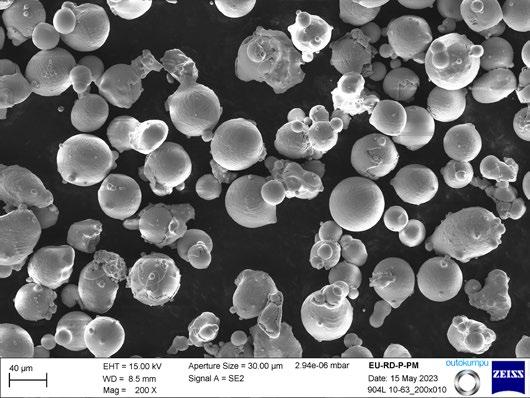
“...a number of demanding applications areas such as oil & gas are adopting AM technologies to produce critical components.
However, until now, the possibilities for material selection have been limited.”
The build
Mechanical test samples were built in vertical and horizontal directions using an Aconity MINI Laser Powder Bed Fusion (PBFLB) AM machine in two different builds after finding the most suitable parameters. The as-built samples are seen in Fig. 8a and Fig. 8b.
Mechanical characterisation
Samples were machined to size B4x20 tensile test specimens according to DIN50125 and tested according to ISO 6892-1 (Fig. 8c). The tensile test was performed at a constant strain rate of 0.000 5 S -1. Moreover, nine samples taken from cold rolled 904L material (0.84 mm thickness) were tested in 00°,45° and 90° (three samples each direction). Fig. 9 and Table 1 shows the obtained results.
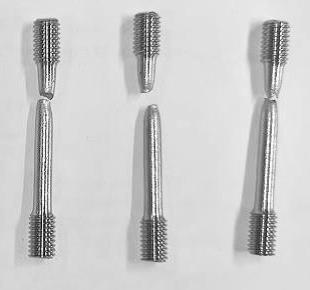

Results show 40-50% higher R p0.2 values for the additively manufactured samples and a remarkably higher tensile strength, while the elongation of AM samples is lower. However, and with reference to Fig. 8c again, the AM tested samples show necking on the fracture zone, an indicator of ductile fracture. There is also some anisotropy seen between AM samples. Horizontally built samples show higher yield and tensile strength in comparison with vertically-built samples.
Microstructure characterisation
Fig. 10 shows different microstructure images that were taken using LOM and SEM microscopy. Fig. 10a shows a typical microstructure overview of built material. Fig. 10b shows an SEM image from a melt pool. In this case, the dendrites are seen growing to the centre of the pool. Fig. 10c shows an image of
the orientation of the grains. Due to the build process, there is no preferential orientation of the grains in the microstructure.
Next steps to promote 904L for AM
To further promote the introduction of this highly-alloyed austenitic stainless steel for highly demanding applications, a
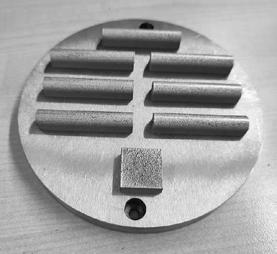
number of follow up developments are planned, involving:
• Fine tuning powder production at Krefeld to achieve the highest quality for PBF-LB technology
A second round of trials at RWTH Aachen University with the Aconity MINI system
• Investigation of corrosion properties with focus on pitting and crevice corrosion resistance according to ASTMG48 and general corrosion resistance
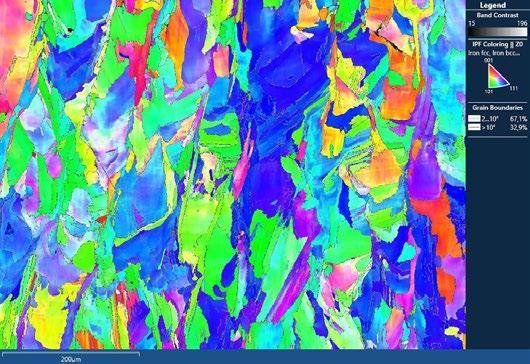
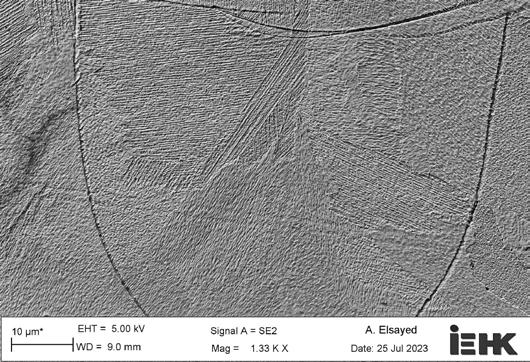
Once the development for PBF-LB of this grade is finished, Outokumpu‘s strategy will be to use this grade with other AM technologies, such as BJT, to widen the application potential of this alloy.
Creating a stainless steel powder ecosystem

With the new powder production facility at Krefeld, Outokumpu aims to build a stainless steel AM ecosystem that will open up new possibilities for manufacturers operating in the world of Additive Manufacturing and Powder Metallurgy. We anticipate that two main groups of customers will benefit most from joining Outokumpu in this venture:
• Companies that already know Outokumpu through its stainless steel products but have not used AM previously
• Customers that are already experienced in AM and now want to take it to the next level by using higher-alloyed stainless steel grades and/or benefit from its leadership in sustainability
Author
Andoni Sanchez-Valverde Erice, Sales/R&D Engineer Outokumpu Metal Powdermetalpowder@outokumpu.com www.outokumpu.com


WORLD PM2024 Congress & Exhibition International Powder Metallurgy
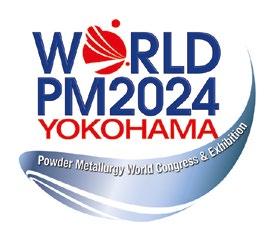


Shaping the future: Winners in the 2023 Powder Metallurgy Design Excellence Awards

The annual Powder Metallurgy Design Excellence Awards competition, organised by the Metal Powder Industries Federation (MPIF), is an opportunity for PM part producers to showcase the capabilities of the full range of metal powder-based technologies to a global audience. This year’s winners were announced at a special ceremony at the International Conference on Powder Metallurgy & Particulate Materials (PowderMet2023), held in Las Vegas from June 18-21. This report reviews the winners in the conventional PM category and the metal Additive Manufacturing category.
The 2023 PM Design Excellence Awards saw 10 Grand Prizes and 15 Awards of Distinction awarded to winners across three categories: conventional press and sinter PM; metal Additive Manufacturing (AM); and Metal Injection Moulding (MIM). The winners are outstanding examples of the diversity of PM, ranging from electric vehicles to medical applications. They were praised for being able to meet critical requirements while competing with other technologies. The award-winning components utilise PM’s flexibility to push forward new concepts and processes that demonstrate the diverse range of PM’s capabilities. In this report, we highlight the winning parts produced by metal Additive Manufacturing and ‘press and sinter’ Powder Metallurgy. A large number of award winning parts produced by Metal Injection Moulding are covered in the Autumn 2023 issue of PIM International , available to download from www.pim-international.com.
Grand Prize
AUTOMOTIVE:
APG Sintered Metals

A Grand Prize in the Automotive –Engine category for conventional Powder Metallurgy components was awarded to APG Sintered Metals, Ridgway, Pennsylvania, USA, a Division of Nichols Portland
Inc., for a 20° slanted oxygen sensor boss used on catalytic converters for V6 trucks (Fig. 1). This 409L stainless steel sensor boss is produced by compacting to near-net-shape, delubricating in a low-temperature belt furnace, and sintering in a high-temperature pusher furnace in a hydrogen atmosphere.
Sensor bosses are integral structural components of the increasingly complex automotive exhaust and emissions after-treatment systems. They are designed to be welded in place permanently, while allowing quick assembly line installation and long-term serviceability of a growing number of critical exhaust gas sensors. The failure of any one of these sensors or mounts can cause a noticeable drop in engine performance and can result in damage to expensive emissions control hardware.
Burgess-Norton Mfg. Co
A Grand Prize in the Automotive – Electric Vehicle category for conventional PM components was awarded to Burgess-Norton Mfg. Co., Geneva, Illinois, USA, and its customer, Means Industries, for a notch plate and pocket plate used in an electro-mechanical E-axle disconnect (Fig. 2).
The parts are made from FLNC4408 sinter-hardened steel to a density of 7.1 g/cm 3. Both parts rotate in the assembly and have balance requirements that are maintained through a combination of tooling geometry, die-fill compensation, and sectional densities to avoid the need for a balance correction operation.
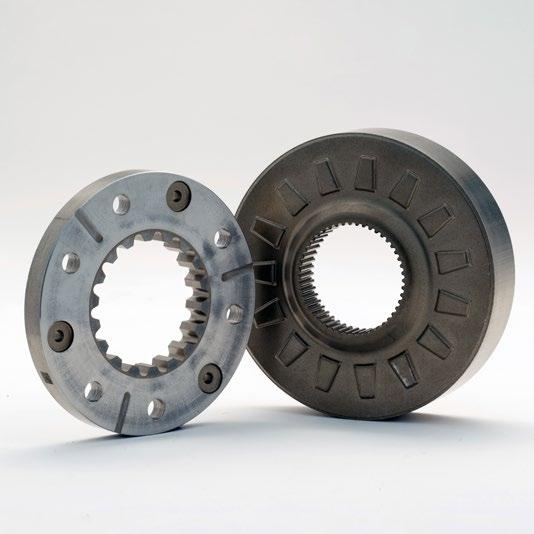
The main benefit of this electric actuated dynamic disconnect clutch system is increased vehicle efficiency; improving overall vehicle range by 10% because of the ability to disconnect the rear wheels from the electric motors. PM provides a 9% weight saving, which also improves battery life.
GKN Sinter Metals
A Grand Prize in the Automotive – Transmission category for conventional PM components was awarded to GKN Sinter Metals, Auburn Hills, Michigan, USA, and its customer Ford Motor Company, for a differential gear set locking ring used in a rear axle electronic locking differential (Fig. 3). This combination of parts (pinion gears, locking and non-locking side-gears, and lock
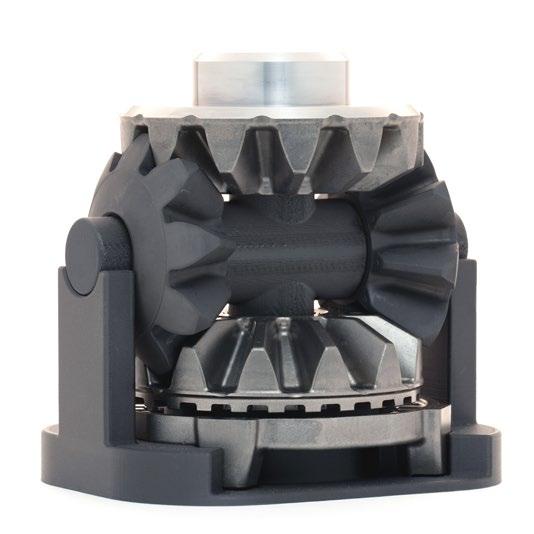
plate) are compacted, carburised, net-shape powder forged, quenchhardened and tempered, and machined to tight dimensional and surface finish requirements.
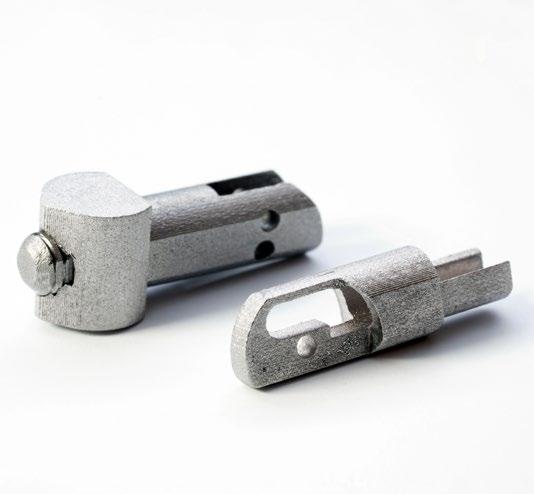
The total set weighs just over 5.4 kg. The parts passed full validation for all Ford F-250/350 truck application tests including full axle dyno, fatigue (locked and unlocked), impact, differential seizure, spline interface, and full vehicle durability. This is the fifth production tooled differential gear set to date.
INDUSTRIAL MOTORS/CONTROLS & HYDRAULICS:
Azoth
A Grand Prize in the Industrial Motors/Controls & Hydraulics category for metal AM components was awarded to Azoth, Ann Arbor, Michigan, USA, for a fluid matter exchanger (Fig. 4). While relatively simple in appearance on the outside, the part is extremely complex on the inside. The part is produced by Binder Jetting (BJT) using 316L stainless steel powder. The as-built part is about 20% larger to account for shrinkage during sintering. The customer performs flowability as well as pressurised leak testing of the parts. The hollowness, internal channels, internal filters, and other complex features of this fluid matter exchanger make it a part only viable through Additive Manufacturing.

MEDICAL/DENTAL 3DEO Inc.
In the Medical/Dental category for metal AM components, a Grand Prize was awarded to 3DEO Inc, Torrance, California, USA, and its customer, USB Medical, for a surgical implement articulation joint and pivot (Fig. 5). The assembly is part of a surgical implement for performing laparoscopic heart surgery. The instrument is used to lift the heart gently, granting the surgeon access to the back of the heart. The three-part assembly is built from 17-4 PH stainless steel using 3DEO’s layering process, in
which 100 µm layers of powder are deposited, uniformly bonded edge-to-edge, and machined on a per-layer basis until the parts are fully built. Demand volume does not warrant MIM tooling investment, and metal AM retains the customer’s ability to make future design changes.
Awards of Distinction
AUTOMOTIVE:
Metalpo Industria e Com Ltda and MAN Truck and Bus AG
In the Automotive – Engine category for conventional PM components, an Award of Distinction was given to Metalpo Industria e Com Ltda, São Paulo, Brazil, for a pressure flange made for its customer MAN Truck and Bus Ag (Fig. 6). It introduced a design variation made from FD-0405 diffusion-alloyed steel, increasing the breaking load while reducing the mass and processing steps. The new design and process change also reduced greenhouse gas emissions.
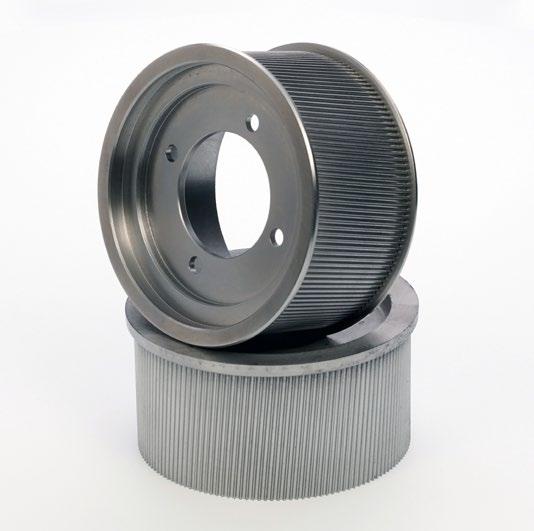
Capstan Atlantic and Nexteer Automotive
An Award of Distinction was given to Capstan Atlantic, Wrentham, Massachusetts, United States, an operating subsidiary of Capstan, Inc., and its customer Nexteer Automotive in the Automotive – Electric Vehicle category for conventional PM components for a driven pulley made from FC-0208 copper steel and used in the power steering of an electric autonomous vehicle (Fig. 7).
The part, which is a safetycritical component, is bolted to the shaft that controls the car’s steering. It is compacted with an integral top flange, and after drilling, a stamped flange is welded onto the bottom of the part. Controlling distortion, tapering of the long, thin wall section, and maintaining the helix angle of the pulley teeth was crucial. To ensure traceability, a 2D bar code is laser marked on the parts.
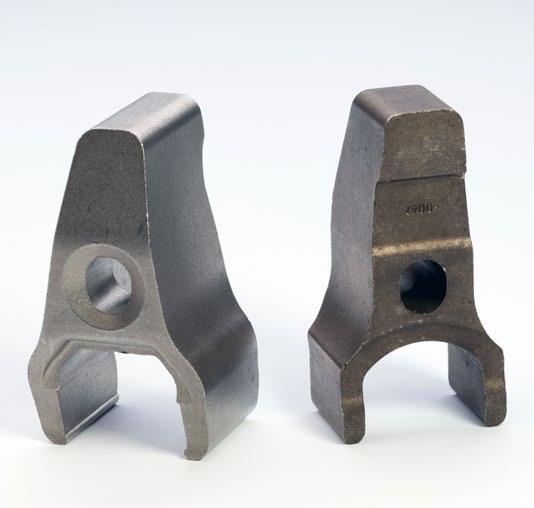
Burgess-Norton Mfg.
Burgess-Norton Mfg. Co. also received an Award of Distinction in the Automotive – Transmission category for conventional PM components for FL-4405HT prealloyed steel drive and driven sprockets used in a transfer case (Fig. 8). The sprockets are used in pickup trucks with a hybrid train that incorporates both battery propulsion and traditional internal combustion engine technology, specifically when the transfer case is engaged using a chain drive.
Tooling concepts were developed and refined to extend tool life, for proper size management of the sprocket teeth and the two sets of involute splines. PM sprockets work well in high-density applications where part strength and resistance to wear is critical, and the near-net-shape capabilities of PM reduce costly machining steps and material scrap.
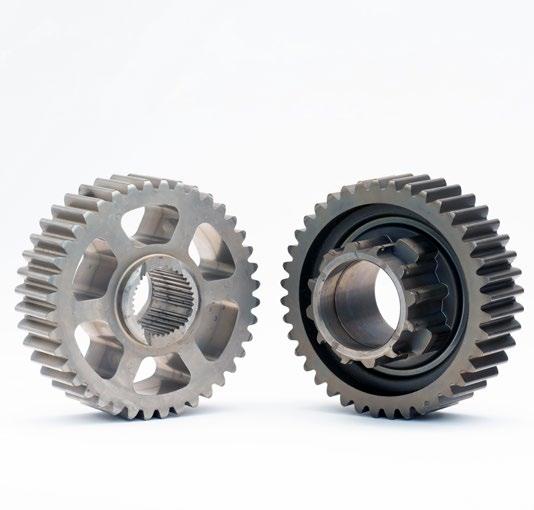
LAWN & GARDEN/OFF-HIGHWAY COVENTIONAL:
FMS Corporation and Polaris Inc. In the Lawn & Garden/Off-Highway conventional PM components category, FMS Corporation, Bloomington, Minnesota, USA, and its customer Polaris Inc were given an Award of Distinction for a clutch weight sub-assembly used in the primary clutch flyweight, a speedsensing component, of an ATV continuously variable transmission (Fig. 9).
In order to accommodate for the customer’s request that the component could be retrofitted into existing clutches, the design needed deep and complex face details to prevent interference with existing assembly geometry. The parts are made using a specially modified version of a chromium containing sinter-hardenable steel for high-performance applications.

HAND TOOLS/RECREATION:
APG Sintered Metals
APG Sintered Metals was also awarded an Award of Distinction in the Hand Tools/Recreation
category for conventional PM components, for its 32T belt drive transmission sprocket used on several motorcycle platforms (Fig. 10).
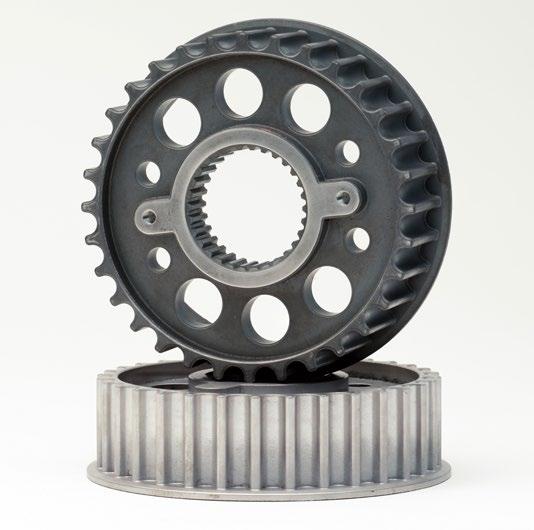
The sprocket is made using FC-0208 copper steel to a 6.80 g/ cm 3 minimum density, and is steam treated to increase surface hardness and seal off surface porosity to reduce wear and corrosion. The redesigned PM part featuring lightening holes reduced the mass by 18%.
HARDWARE/APPLIANCES:
3DEO Inc. and Narita Manufacturing
An Award of Distinction was also given to 3DEO Inc and customer
Narita Manufacturing in the Hardware/Appliances category for metal AM components for a fastener assembly for a bullet train (Fig. 11).
3DEO uses what it calls Intelligent Layering technology, a patented sinter-based metal AM process that combines the layering of a MIM-like feedstock with precision machining of parts in the ‘green’ state.
The fastener attaches the intercar baffles to retaining frames on bullet trains. The 17-4 PH stainless steel metal AM assembly replaced ten individual components and four rivets, eliminating riveting, welding, and grinding from the production process. The parts must be able to be rotated with a tool but be tamperresistant to passengers and resist unintended rotation due to train car motion and vibration.

INDUSTRIAL MOTORS/CONTROLS & HYDRAULICS:
Nichols Portland LLC
In the Industrial Motors/Controls & Hydraulics category for conventional PM components, an Award of Distinction was awarded to Nichols Portland LLC, Portand, Maine, USA, a Division of Nichols Portland Inc., for a gerotor assembly used in a diesel charge pump for a high-pressure diesel direct injection system applied in large construction and stationary power systems that need to operate in harsh environments for years (Fig. 12).
The part assembly consists of two single-level components possessing numerous critical tolerance features. The parts require exceptional material properties to minimise sliding and fretting wear in low-lubricity diesel fuel. The gerotor assembly also needs to provide a consistent delivery of diesel fuel across a range of operating conditions.

MEDICAL/DENTAL:
Metco Industries Inc.
Metco Industries Inc. received an Award of Distinction in the Medical/ Dental Category for Conventional PM components for a rail gear rack assembly used for the adjustment of hospital beds requiring higher weight limit capability (Fig. 13). The final assembly consists of two identical PM parts that are riveted to each end of a second PM part – the most complex part of the assembly. The copper-infiltrated (FX-1008-50) parts are zinc plated for product sterilisability.
www.mpif.org
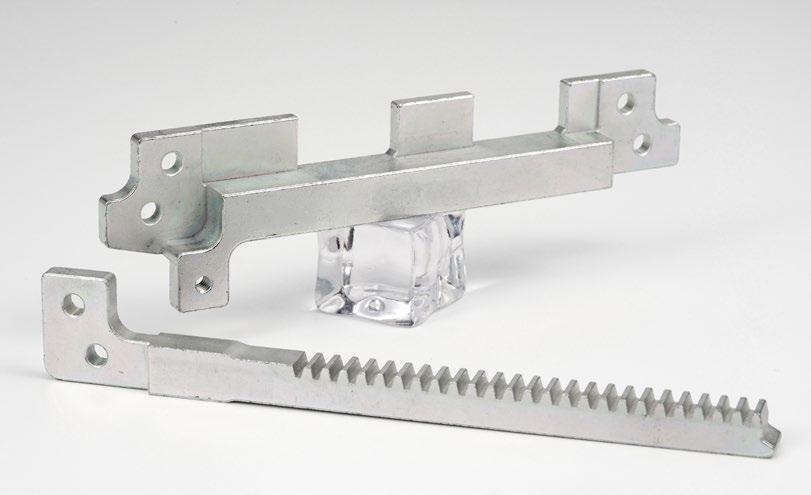
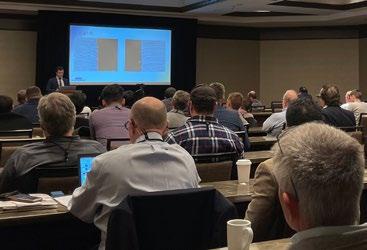


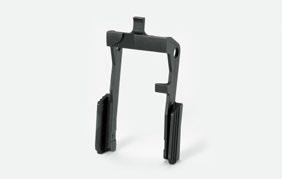
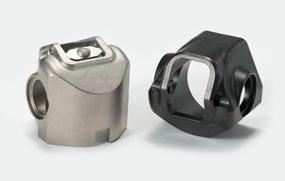

PowderMet2023 Las Vegas: Post-COVID and on the road to electrification, the PM community takes stock
The Metal Powder Industries Federation’s (MPIF) biggest annual gathering, the International Conference on Powder Metallurgy (PowderMet2023) and the Additive Manufacturing with Powder Metallurgy conference (AMPM2023), took place in Las Vegas from June 18-21. More than ever, the PM industry needed such meeting places to take stock of a rapidly-evolving industrial and political landscape that at once presents huge opportunities for diversification whilst witnessing major uncertainty in core historic markets. Bernard North reports for PM Review magazine.
Back in 2020, during the early phase of the COVID-19 pandemic, the Metal Powder Industries Federation (MPIF) was obliged to cancel its 2020 annual international conference. In 2021, the MPIF held a hybrid conference in Orlando, Florida, and about 500 delegates attended – about 400 of them in-person – and about thirty companies exhibited in the trade show. The recovery continued in 2022 with the Portland, Oregon, event, which drew about 570 attendees. The participation in the 2023 event, however, grew even further. This is a testament to both the continuing vitality of the PM industry as well as the hard work and dedication of the MPIF staff and conference volunteers who put together an excellent technical programme.
Customarily, the PowderMet (International Conference on Powder Metallurgy) and AMPM (Additive Manufacturing with Powder Metallurgy) conferences were held together with a single registration and shared trade show, general session, meals and
receptions, although their technical sessions were separated. The combined event was held in the luxurious Caesars Palace Las Vegas Hotel and Casino, one of several huge complexes lining the famous Las Vegas ‘strip’ (Fig. 1).
The exhibition hall once again proved to be a focal point for the event. Table 1 provides a breakdown (somewhat simplified, as some companies provide more than one product or service type) of the organisations exhibiting at the event.

Organisation and industry awards
During the plenary session, Jim Adams, Executive Director and CEO of MPIF, announced that attendance was at about 700 delegates from twenty-five countries. There were also around 75 exhibitors in the trade show. Over 160 presentations took place across 60 sessions and, in addition, there were 70 technical posters. Graduate students working in PM and related areas also gave over 60 ten-minute summaries of their work.
Adams went on to acknowledge the hard work of over 150 volunteers who worked with MPIF staff to organise the presentations into appropriate technical sessions and chair them. The technical programme of PowderMet2023 was chaired by Mike Stuckey of Norwood Medical and Greg Wallis of Dorst America, Inc., while that of AMPM2023 was chaired by Stefan Joens of Elnik Systems, LLC, and Mary Kate Johnston of Sandvik AM.
Several awards were presented to distinguished individuals during the plenary session. Chris Schade, of Hoeganaes Corp., received the APMI Fellow Award 2023, while Rick Ricchi, of General Motors Corp., received the PM Vanguard Award 2023 in recognition of his longstanding efforts to implement and standardise PM components in engines. This was only the third time this award has been presented.
Twelve industry veterans also received Distinguished Service to Powder Metallurgy Awards 2023, bringing the total to 289 over a 55-year time span.
At the Design Excellence Awards Luncheon, numerous awards for especially impressive PM parts were presented. A separate article in this issue of PM Review covers these awards in detail.
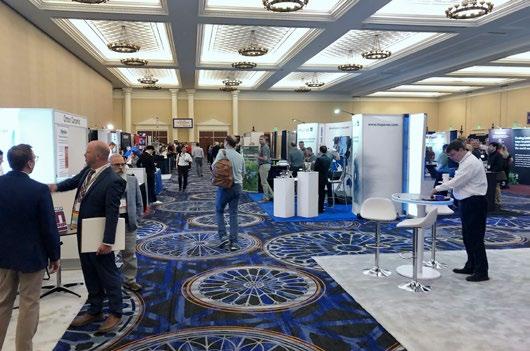
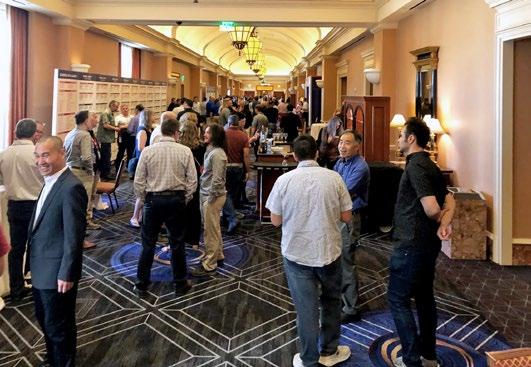
State of the industry and keynote presentations
The much-anticipated State of the Industry presentation was made by MPIF President Rodney Brennan, of Metals Industries Inc. This presentation is covered in full elsewhere in this issue but, in brief, he discussed the gradual decline in the industry’s main ferrous automotive components category. He also spoke on counterbalancing growth in many sectors and how the basic characteristics of PM lend the industry a step up in terms of sustainability.
This year’s well-received keynote presentation was by Sandy Gennaro, a motivational speaker, who has spent 55 years as a drummer in support bands for famous rock artists – an occupation where maybe 5% of musicians are still in business after a year. In his talk, Gennaro attributed his success and career longevity to basic behavioural traits and attitudinal beliefs that he suggested translate into all of our personal and business lives. Gennaro was an engaging speaker, who carried the audience well, with speaking interspersed with videos and sets on his drums. The highlight was his giving Jim Adams the freedom to exhibit his drumming skills, which Jim did with great enthusiasm!
General discussions
Talking to a number of suppliers, it was clear that the worst of the supply chain problems that had plagued all areas of manufacturing are largely behind us. These problems, however, still impact the automotive supplier base to some degree, which has noted suppressed business levels in high-volume ferrous applications in particular. For equipment builders, there are still some issues with long lead times on controls and electronics, but the situation has improved.


Regarding the issue of electrification of cars and light trucks, there is a range of views amongst the
“Talking to a number of suppliers, it was clear that the worst of the supply chain problems that had plagued all areas of manufacturing are largely behind us. These problems, however, still impact the automotive supplier base to some degree, which has noted suppressed business levels in high-volume ferrous applications in particular.”Fig. 4 Winning parts from the MPIF’s 2023 Design Excellence Awards. Top: Grand Prize winning parts; below: Awards of Distinction winners (Courtesy MPIF)
Standard video at @ 30 frames per second
members of the PM community, just as in the wider population. That said, common discussion themes were that the US government’s stated goal of 40-50% of vehicle production being battery electric (BEV), plug-in hybrid (PHEV), or fuel cell (FCEV) by 2030 will not be realised and that inadequate attention is being paid to the actual resources and needs of the buying (or leasing) public. Some delegates also referenced recent announcements – in particular those from Cummins, Toyota, and JCB – about hydrogen-fuelled internal combustion engines.
The author admits to having his own opinions on the subject and, taking taking into consideration all the inputs, still feels that the 2030 forecast given by Edwin Pope of IHS Markit at PowderMet2021 [1] is realistic for the North American market: 16% BEVs, 6% PHEVs – a total of 22% or half the federal government target – and 19% non-plug-in hybrids (FHEVs and MHEVs). In any case, what actually happens in the precise pace and direction of vehicle electrification in the years ahead is outside the control of the PM industry, meaning that it is critically important
to continue to improve the technologies and find new applications.
Some PM equipment manufacturers stated in discussions that, while overall business was good, they had observed a decline in new orders from mainstream ferrous PM parts manufacturers, reflecting concern about future business volumes and/or high interest rates increasing the cost of capital.
Technical session overview
There were over 160 presentations spread across 60 sessions, held in up to seven concurrent sessions, as well as 70 technical posters. Reflecting the fact that the event included the AMPM2023 conference, about two thirds of the contributions were in the AM arena, primarily Laser Beam Powder Bed Fusion (PBF-LB) and Binder Jetting (BJT), although there were a few which centred on Directed Energy Deposition (DED), Material Extrusion (MEX), and Electron Beam Powder Bed Fusion (PBF-EB). The remaining contributions covered modelling, property improvement, applications, powder atomisation, analytical techniques, pressing, sintering, and post-processing.
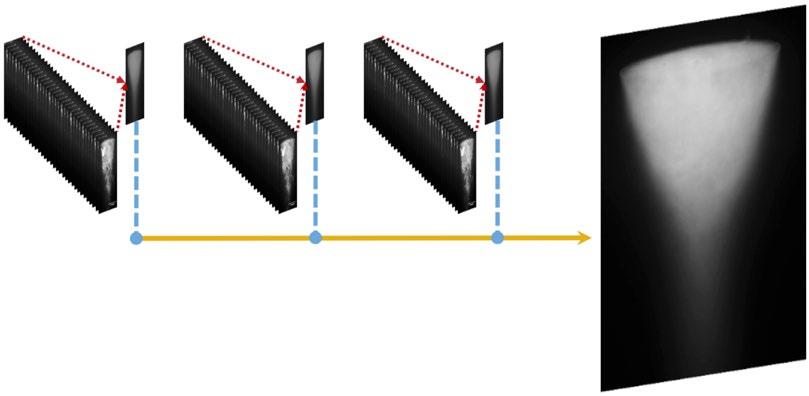
“Regarding the big issue of electrification of cars and light trucks, there is a range of views amongst the members of the PM community, just as there is in the wider population... common discussion themes were that the US government’s stated goal of 40-50% of vehicle production being BEV, PHEV, or FCEV by 2030 will not be realised.”
Future work: (from PowderMet 2022)
• Lower flow rates/higher pressures for process gas.
• New nozzle design to reduce back pressure.
There were very few MIM papers, perhaps in part as MPIF recently held its own conference on this topic in Costa Mesa, California, during February/March 2023. There is, however, a clear downward trend in the number of MIM presentations at international PM conferences as sinter-based AM grows. Of course, the maturity and stability of the MIM process also means that there is less need for ongoing research.
A broad range of metal types were covered by the various contributions, in rough declining order of frequency ferrous (non-stainless) alloys, aluminium, refractory metals, stainless steels, nickel-base superalloys, titanium, and copper. Any given individual cannot ‘do justice’ to all of the contributions in a review article such as this, but the author will attempt to give the reader a taste of the many interesting developments across different technologies presented in the sessions.
Refractory metals/cemented carbides
A long-standing area of research receiving renewed efforts in recent years is the reduction/elimination of Co in cemented carbides, driven, in part, by the increased demand for Co for vehicle batteries. Sean Fudger of the US Army Research Laboratory described work replacing Co with Fe/Ni/trace Zr (for ZrO 2 oxide dispersion strengthening) at 10 wt.% [2]. Working with Salvator Nigarura of Global Tungsten Powders, dense material was obtained with good mechanical properties and promising initial metal cutting results; more comprehensive testing is planned with Tony Schmitz of the University of Tennessee.
Sindi Ndinisa of Stellenbosch University, South Africa, presented interesting work on functional gradient materials made from four layers of WC-316L stainless steel, deposited by laser DED of pre-mixed powders with respectively 23, 48, 71, and 90 wt.% WC to produce dense, adherent layers with the thermal expansion mismatch ‘smoothed out’ [3].
G/M vs. Process Gas Pressure
Process Gas Pressure, MPa
Powder manufacturing
Arun Chattopadhyay of Uniformity Labs described a sol-gel process in ethanol to disperse ZrB 6 and LaB 6 on 17-4PH and 316L stainless steel powders for subsequent pressing and sintering at 1200°C in Ar [4]. The composites have potential applications due to their optical and electronic properties and as catalysts, including in fuel cells and for H 2 production.
Trevor Riedemann discussed what he modestly termed a ‘lunchtime project’ at Ames National Laboratory, where he used a 30 frames/second digital camera to create 8,000 images of the ‘inverted crown’ in a gas atomiser, then statistically analysed the images to produce the mean, maximum, minimum, median, and standard deviation images (Fig. 5) [5]. An incipient crack in the refrac -
tory nozzle was clearly visible in a ‘minimum’ view and the technique shows promise for real-time machine diagnostics and control.
Joseph Strauss of HPE gave a presentation on plasma wire atomisation of high-melting-point metals and the alternative methods of transferred vs. non-transferred arc [6]. Fig. 6 shows how nozzle design and higher gas pressures (reduced gas flow rates) are important variables to achieving high yields of fine particle size products, while avoiding extinguishing the plasma.
Joseph Schramm of Uniformity Labs, Inc, described how past work at Princeton University on 5:1 multimodal particle size mixtures produced very high tap densities while preserving good flow [7]. That work has been commercialised
“A long-standing area of research receiving renewed efforts in recent years is the reduction/elimination of Co in cemented carbides, driven, in part, by the increased demand for Co for vehicle batteries.”
blue and green are the properties individual intercritical and cooling sequences.
Jetting and PBF-LB of dual phase 450, 600, and 980 steels [13] (Courtesy Tom Murphy/MPIF)
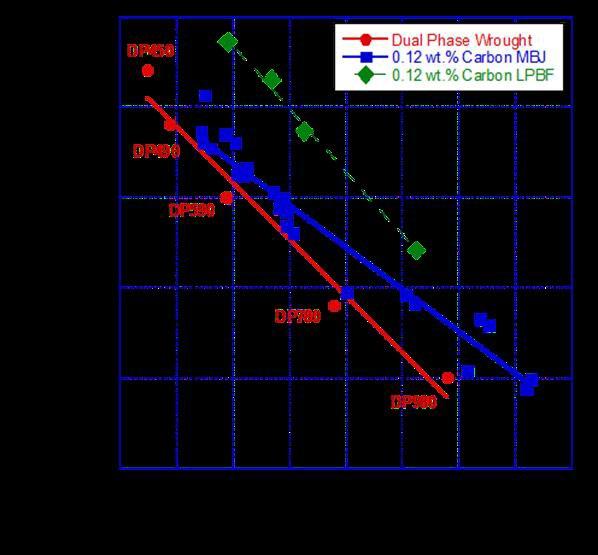
to produce simultaneous improvements in atomiser yield (90% vs. ~60%) and much higher green densities with both MIM and binder jetted parts, in turn producing less shrinkage (~12% linear) and distortion, better part green strength
Press and sinter PM Kylan McQuaig, of Hoeganaes Corp, and Mihai Faroga, of Stackpole International, each gave presentations on improved lubricants for ferrous parts; powder flow, pressing pressures, green
Bo Hu of North American Höganäs discussed the sintering of 316L , or mixed atmospheres at 1149°C and causes the formation of Cr 2N precipitates which, in turn, causes work-hardening during machining
The history of ‘gerotors’ (generated rotors) used in a wide variety of fluid pumps was presented by Glenn Mann of Nichols Portland [11]. Originally developed in the 1920s, the manufacturing route started to switch from machined and ground bar stock to PM in 1971 and is now essentially complete across a broad range of sizes. Only the thickness and outer diameter, and sometimes inner diameter dimensions, now require any machining. The PM materials used are Ni or Cu alloyed steels in the density range 6.6 to 7.2 g/cm 3





AM: various methods
Animesh Bose of Optimus Alloys, in a paper co-authored with Desktop Metal and Plastometrex (Cambridge, UK), described using a benchtop plastometer using a 1 mm diameter spherical identor in AM 17-4PH stainless steel and an AM Ni-base superalloy [12]. This was followed by


These can be plotted and correlate strongly with conventional tensile test data, but at a small fraction of the cost and lead time. The technique is able to quantify anisotropy.

The author noted many references to the Hot Isostatic Pressing (HIP) of AM parts to ‘squeeze out’ remanent porosity, and Cliff Orcutt, of American Isostatic Presses, Inc, confirmed that there was indeed a significant and growing trend. He further commented that the parts being HIPed were mostly PBF-LB parts (as opposed to those manufactured via Binder Jetting or other AM processes), but felt the reason was primarily that the former processes’ applications were more frequently ones requiring full density.
Tom Murphy of Hoeganaes presented work on PM dual-phase, low-alloy steels designed to match wrought DP 450, 600, and 980 steels, which – with correct heat treatment – have a combined ferrite/ bainite microstructure with a desirable tensile strength and ductility combination [13]. Binder Jetting (as well as MIM) use the finer ‘cut’ of gas atomised powder, while Laser Beam Powder Bed Fusion and DED use the coarser end of the distribution. Tensile samples were made by MIM and three different AM processes; plots of elongation vs.
UTS (ultimate tensile stress) (Fig. 7) were created as well as very detailed metallography (Fig. 8) using different etchants. In summary, a given heat treatment cycle will produce the desired microstructure and properties with MIM or binder jetted parts, but a different heat treatment is needed to produce a similar end product from PBF-LB or DED parts.
AM: sinter-based
Mahmoud Shirooyeh of 3DEO described the company’s ‘intelligent layering’ process, combining a Binder Jetting process with CNC green machining using tiny end mills to create complex parts with excellent surface finish and a high level of dimensional control [14]. Applied to Cu powder, the process produced
quite dense material after three hours sintering at 1075°C in H 2, and remanent porosity was removed by subsequent 950°C, 1000 bar HIPing in Ar.
Referring to a paper by colleague Mattia Forgiarini, Arun Areza of Azoth detailed his company’s work using the Binder Jetting process using 304, 316L and 17-4PH stainless, Cu, and 4140 steel to produce customised automotive parts for both in-plant jigs and fixtures and end use in vehicles for both structural and cosmetic parts (Fig. 9) [15].
Areza stressed the importance of standards (MPIF 35, ISO 9001, AS9100, IAT 16949) and a robust process control plan including Failure Mode and Effect Analyses (FMEA), an Automotive Industry
“The author noted many references to the Hot Isostatic Pressing (HIP) of AM parts to ‘squeeze out’ remanent porosity and Cliff Orcutt of American Isostatic Presses, Inc, confirmed that there was indeed a significant and growing trend.”Fig. 9 Left: General Motor’s 120 th anniversary edition shift knob emblem, manufactured as single edition of only 120 vehicles total. Right: General Motor’s special edition competition package vehicle, manufactured in limited edition. Both are produced using Binder Jetting by Azoth [15] (Courtesy Arun Areza/MPIF)
Metal Binder Jetting
Metal Material Jetting
Action Group (AIAG) Advanced Product Quality Checklist and familiar testing equipment to gain the confidence of automotive customers. As-sintered dimensional control is critical to reduce the need for finishing operations and keep costs down; +/- 1.5% of nominal dimensions is typical and +/- 0.6% is achieved in specific applications.
Mattia Forgiarini of Azoth compared 316L stainless steel by the Binder Jetting (using ~15 µm particles) process with a Material Jetting (MJT) machine using metallic nano-particles suspended
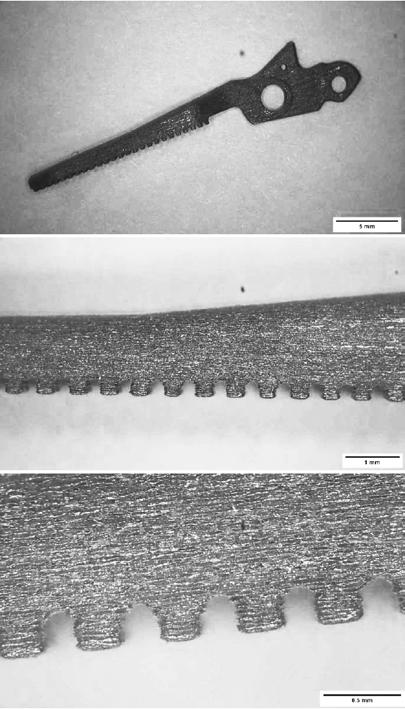

in a liquid dispersion, understood to be produced by XJet, Israel [16]. The latter process allows sintering at much lower temperatures (in a combined vacuum/H 2 cycle) and, while cost and throughput are less favourable, it can produce parts with much higher surface detail and higher yield strength. Forgiarini described the two processes as being complementary rather than competitive. Fig. 10 shows small, finely detailed parts made by Material Jetting.
Brian Adzima of Holo, Inc, discussed the photopolymerisation of
metallic particle suspensions to form low green density parts [17]. These parts were subsequently debound and sintered in H 2 to form dense (>98% theoretical) components with 0.05 mm features and dimensional tolerance in the range 0.025-0.075 mm, with 1-500 part volumes in Cu and 316L and 17-4PH stainless steel for hearing aids, dental, watch cases, clipper bodies, small gears, and jewellery being turned around in two weeks from receipt of CAD model.
Christian Fischer summarised Headmade Materials’ vision of using existing, relatively simple, high-
Overall Conclusion: ASTM Gr.4 Limit) exhibits viable mechanical properties!
Overall Conclusion:
Ti -1Fe (2x ASTM Gr.4 Limit) exhibits viable mechanical properties!

Optimization Sensitive
Excellent Properties Attainable
Optimization Sensitive
is vastly improved by higher despite increased porosity
Elongation is vastly improved by higher energy despite increased porosity
volume processes to make strong green parts amenable to materials handling automation. It also looks to make them insensitive to their position in an AM machine or sintering furnace as well as the specific machine type used [18]. The process blends metal powder with polymeric binders to form 50-70 µm granules, which are fed to a conventional polymer PBF-LB machine where green parts are built. No support structures are needed. Green parts are separated from ‘un-bonded’ granules using high pressure water and then debound (acetone solvent, then Ar/H 2 thermal) and sintered. At least 99% dense parts have been made in 17-4PH stainless steel, M2 tool steel, and Ti-6Al-4V, and the process is also being qualified for 316L stainless steel, H13 steel, W alloys, and Inconel 625.
AM: PBF-LB and PBF-EB
Austin Mann of Boeing discussed the US Department of Energy and Advanced Research Projects Agency – Energy (ARPA-E) – funded joint work with Allegheny Teledyne Industries (ATI), Metalysis (UK), Alloyed (UK) and University of Maryland, to develop very high temperature heat exchangers for high-speed aircraft applications [19]. The goal is for 50 kW units able to handle 1,000°C hot gas inlet temperatures, but initial work is done with 2 kW prototypes initially tested at lower temperatures. The work includes existing superalloys, but, to hit the ultimate targets, more advanced alloys from the project partners will be required.
Michael Brand of Los Alamos National Laboratory discussed work on PBF-LB of TZM (molybdenumtitanium-zirconium) for nuclear microreactor components [20]. As with similar efforts reported upon at the 2022 Plansee Seminar (for summary, see [21], the parts had porosity and cracks. Further development is required.

PhD candidate Dourna Jamshideasli, of the National Center of Additive Manufacturing at Auburn University, described the model -
Excellent Properties Attainable
As strong as L-PBF Ti-6Al-4V
As strong as L-PBF Ti -6Al-4V
As strong as L-PBF Ti -6Al-4V
(2x σYS of Gr.2 CP -Ti) with similar ductility
(2x σYS of Gr.2 CP -Ti) with similar ductility
ling of laser ablation, in Ar gas, of Cu and Ag, to make nanopowders in the 5-25 nm size range, followed by a laser beam-based AM process to make flexible electronic devices [22]. The very fine particle size and consequent high particle-toparticle contact (especially with a non-uniform size distribution) aided low-temperature sintering.
Jeff Huang of Osaka University, Japan, described work to expand Ti alloy use in AM, based on the thesis that the normal 0.5% Fe limit in Ti-6Al-4V and the Al and (expensive and strategically vulnerable) V alloying elements have come about historically based on classical metallurgical techniques and that cheaper (Huang indicated ~70% material cost reduction is possible) alloys could hit desired properties when processed by, in particular, PBF-LB AM [23].
He described work using 99:1 mixed Ti and Fe powders laser beam additively manufactured into
tensile samples using different power levels, scan speeds, and scan strategies. Good tensile properties were obtained over a wide range of process conditions and a desirable alpha/alpha’ structure was obtained with tensile properties exceeding ASTM standards for Ti-6Al-4V, as shown in Fig. 11.
Kerry Horvay presented Hoeganaes’ work on wear-resistant alloys made by PBF-LB [24]. Due to the relatively high cost of grinding very hard steels, AM’s net or nearnet shape capabilities should be especially beneficial. Laser Beam Powder Bed Fusion was used to fabricate density cubes, tensile, and Charpy V-notch specimens in five different ‘Ancorwear’ alloys, which were subsequently heat-treated. Porosity and cracks were measured microstructurally. Rockwell C hardness, yield and ultimate strength and elongation; ASTM G65 dry sand abrasion; and ASTM G99 pin-on-disc
Deformation Processed Metal-Metal Composite (DMMC) Conductors: Powder-to-Wire, Lab-Scale to Full-Scale
Dustin Hickman, Trevor Riedemann2, Iver E. Anderson1,2
1Iowa State University, Ames, IA, 50011 USA
2Ames Laboratory, U. S. Department of Energy, Ames, IA, 50011 USA
Overhead Conductor Technology
Conventional Design
powerlines and stability.
Overhead transmission cables are designed for AC, where less conductive, reinforcing strands in the core, electricity travels on the outer strands
Overhead transmission cables are designed for AC, where less conductive, reinforcing strands in the core, electricity travels on the outer strands
Unique Advantages of Al/Ca DMMC
Unique Advantages of Al/Ca DMMC
– Increased strength after ageing
–
– All strands are equally conductive, increasing ampacity
Increased strength after ageing – All strands are equally conductive, increasing ampacity – Agility for tailoring material properties, PM
– Agility for tailoring material properties, PM
distribution cable is set to 2030 reconductored overhead projected to be 100
Al/Ca DMMC Wire
Lab-Scale % Pass Powder Size (µm)
Al/Ca DMMC Val - Al - 007 Ca Powder
Al Strands Reinforcing Strands Al/Ca Strands
Approach
Synthesize Al/Ca wire utilizing scalable processing techniques by compacting to high relative green densities and extruding at elevated temperatures to fully consolidate the powder into a composite rod of metallic Al and Ca. Early research of filament

Synthesize Al/Ca wire utilizing scalable techniques by compacting to high relative and extruding at elevated temperatures the powder into a composite rod of metallic research of filament
wear testing were all also measured. Plots of different measures of hardness and toughness showed a good range of combinations were obtained.
spacing as a function of deformation true strain and the corresponding ultimate tensile strength was used to estimate the UTS for varying powder size distributions and compositions.
Additive Manufacturing: Directed Energy Deposition (DED)
PhD student Matthew Engquist from California State University, Los Angeles, discussed on-axis wire laser DED of 316L stainless steel [25]. Single passes were made to select best parameters, followed by multitrack depositions with different bead spacings followed by metallographic and microhardness analysis.
Other highlights
Full-Scale Al/Ca DMMC Synthesis
Cold wire drawing to final diameter with no intermediate annealing steps Synthesis 30 40 50 60 70 80 90 100 150
*Estimated strength for results based on available
DMMC Synthesis % Pass Powder Size (µm)
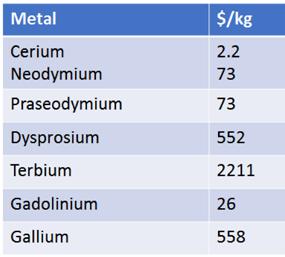

Ca Powder
Maximum Compaction Temperature
– Compaction temperature kept well below transformation temperature for smooth subsequent deformation
Ca green billets Billet Dia. (inches, mm) Pressure (MPa) Temp. (°C) Green Density (% theoretical) 1, 25.4 400 120 97.5 3, 76.2 148 145 94.3 12, 304.8 170 175 96.2
– No intermetallic transformation of 97.5% green density Al/6vol.%Ca billet even after aging 200°C, 10h
Powder Billets 12” 1” Green Powder Billet Fracture Surface 2. consolidation of Al and Ca billet extrusion of Al/6vol.%Ca green billets 16:1 extrusion ratio Billet Dia. (inches, mm) Green Density (% theoretical) 1, 25.4 97.5 3, 76.2 94.3 12, 304.8 96.2
Compressibility data was extrapolated using the Heckel model from CP Al powder compressibility
Gas atomized commercial purity Al - 6 vol. % Ca) and compact blended powder at 180 °C in vacuum Indirect Extrusion at elevated temperature 150 °C Direct extrusion at elevated temperature 150 °C Cold rod roll to 13 mm diameter
Full-Scale Al/Ca DMMC Synthesis
Dustin Hickman of Iowa State University discussed work extruding a mixture of high purity Al powder with a 11.5 vol.% Ca powder added to produce composite wire with an excellent combination of tensile strength and electrical conductivity (Fig. 12) with the potential to serve the necessary expansion of transmission capacity driven by distributed solar and wind power and vehicle electrification [26].
Neal Kraus of Hoeganaes presented on how the properties of magnetic permeability, strength, and electrical resistivity could be ‘traded off’ in Soft Magnetic Composites (SMCs) by varying the compaction pressure and temperature, as well as subsequent curing cycle for the polymeric binder that separates the metallic particles [27].
1. Gas atomized commercial purity Al
Billet Dia. (inches, mm) Wire Dia. (mm) Deformation True Strain 1, 25.4 1.0, 0.4, 0.2 6.5, 8.3, 9.7 3, 76.2 1.5, 1.0 6.4, 8.5 12, 304.8 3.0* 10.1* Wire Sizes from Different Billet Sizes *Estimated strength for results based on available data 1.
2. Gas atomized Ca powders (Al - 6 vol. % Ca)
2. Speed cracking was apparent on extrusion A and less for extrusion B
Fig. 13 Kalathur Narasimhan spoke about the relative distribution in nature, and different mines, of the various rare earth elements, with an emphasis on the low concentration of the heavier elements, in particular dysprosium which is an important alloying element to suppress high temperature degradation of magnetic properties [28] (charts and table courtesy K Hono, Magnetic Materials Unit & Elements Strategy Initiative Center for Magnetic Materials National Institute of Materials Science (NIMS) from the paper ‘Towards Dy-free high coercivity Nd-Fe-B permanent magnets’, presented at PowderMet2023 by Kalathur Narasimhan)
3. A graphite follow-block was used resulting in 3ft of extruded length without a butt
2.
3. Degass and compact blended powder at 180 °C in vacuum
4. Indirect Extrusion at elevated temperature 150 °C
5. Direct extrusion at elevated temperature 150 °C
6. Cold rod roll to 13 mm diameter
Kalathur ‘Sim’ Narasimhan, P2P Technologies, discussed the explosive growth of NdFeB magnets, especially driven by wind power (~650 g magnets/kW of generating capacity) and vehicle electrification [28]. He talked about the relative distribution in nature, and different mines, of the various rare earth elements, with an emphasis on the low concentration of the heavier elements, especially dysprosium, which is an important alloying element to suppress high tempera -
pressure 345 and 330 MPa
A and B, respectively
1.
ture degradation of magnetic properties (Fig. 13). Narasimhan discussed the opening or re-opening of mines in Mountain Pass, California, and Round Top, Texas, in the United States and Lynas, Australia, with associated materials processing facilities.
Attendees of conferences such as this will know that, often, some development comes ‘out of the blue’ and strikes one’s interest even if one cannot be sure what its exact applications will be. For this author, that moment was a reception discussion with Dominick Werner, a PhD student at Birmingham University, UK. In subsequent correspondence, Werner summarised his work as a reimagining of the process of designing, modelling and optimising industrial process equipment such as mills, mixers, extruders, etc.
“We are employing the power of AI through our cutting-edge workflow, which integrates the autonomous calibration of simulations using our bespoke software, Autonomous Characterisation and Calibration via Evolutionary Simulation (ACCES),” Werner explained. “Combined with our unique Positron Emission Particle Tracking capabilities, ACCES allows us to create incredibly accurate digital twins of various industrial systems. These digital twins can then be harnessed to optimise both process parameters and system geometries using our Highly Autonomous Rapid Prototyping of Particulate Processes (HARPPP) software. The result is significantly enhanced efficiency, reduced energy consumption and processing time, and ultimately, lowered operational costs.”
NSF/CPMT/MPIF Powder Industries Foundation Student Grants
The MPIF plays a signature role in encouraging university research in PM. In 2018, it initiated the practice of assisting graduate students with attending the annual conference
and giving them the opportunity to present their work to their peers in industry and academia. That continued in 2019, but, along with the conference, was cancelled in 2020. Travel continued to cause difficulties in 2021 and, to a certain extent, 2022. However, this year, over 60 students were present and gave ten-minute summaries of their work at three separate stations. The students were paired with industry mentors.
Closing comments
After nearly three full days of technical presentations and conversations with individuals, on trade show booths and during receptions and meals, there is so much information that it is a little difficult to condense overall impressions into just a few sentences, but, here goes:
• The PM industry’s largest market (automotive industry powertrain parts) is under threat due to technological and governmental forces beyond its control
• The pace and exact direction of this shift is uncertain, but a gradual decline in volume is probable
• It is very important for the PM industry to innovate and develop new markets
• A few very high-volume new applications – Fe powder for iron/air batteries, Fe powder for H 2 storage, and Al for electrical transmission lines – are on the horizon or in initial commercialisation
• At every stage of the manufacturing process – powder,
part shaping, densification, and finishing – metallurgical, equipment and process developments are occurring very actively (the presentations summarised in this review are only ~10% of the total given at the Las Vegas event) to reduce cost, improve consistency, elevate property levels, and increase net shape capability to allow PM to compete effectively with wrought or cast materials across an everwidening range of alloys and component shapes and sizes
• PM processes, and in particular AM, have a unique opportunity insofar as, when closely linked to product design, substantial reductions in materials usage and part mass are possible
• The PM industry is doing a good job of working with educational establishments to conduct research, while at the same time educating tomorrow’s industry leaders
It will be interesting to hear what further developments have occurred in the PM industry at PowderMet2024 and AMPM2024, to be held June 16-19, 2024, at the David L Lawrence Convention Center in Pittsburgh, Pennsylvania.
Author Bernard North North Technical Management, LLC Greater Pittsburgh area, Pennsylvania, USA bnorth524@msn.com“PM processes, and in particular AM, have a unique opportunity insofar as, when closely linked to product design, substantial reductions in materials usage and part mass are possible.”
References
[1] PowderMet2021: A cautious return to normality for North America’s PM industry, Bernard North, PM Review Autumn/Fall 2021
[2] Mechanical Properties of Cemented Tungsten Carbide with Nanocrystalline FeNiZr Binder, Sean Fudger et al ., as presented at the PowderMet2023 International Conference on Powder Metallurgy & Particulate Materials and AMPM2023 Additive Manufacturing with Powder Metallurgy Conference.
[3] Microstructural Study of a WC-316L Stainless Steel Functionally Graded Coating Produced by Laser Metal Deposition, Sindi Ndisina et al ., as presented at the PowderMet2023 International Conference on Powder Metallurgy & Particulate Materials and AMPM2023 Additive Manufacturing with Powder Metallurgy Conference.
[4] Low Temperature Synthesis of Nano-ZrB2 and LaB6 and Their Effects on Mechanical, Optical and Magnetic Properties of 17-4PH and 316L, Arun Chattopadhyay et al ., as presented at the PowderMet2023 International Conference on Powder Metallurgy & Particulate Materials and AMPM2023 Additive Manufacturing with Powder Metallurgy Conference.
[5] Dynamic Statistical Visualization of Gas Atomization, Trevor Riedemann et al ., as presented at the PowderMet2023 International Conference on Powder Metallurgy & Particulate Materials and AMPM2023 Additive Manufacturing with Powder Metallurgy Conference.
[6] The Use of a Gas Flow Bench to Optimize the Performance of a Close-Coupled Transferred Arc Plasma-Wire Atomization Nozzle, Joseph Strauss, et al ., as presented at the PowderMet2023 International Conference on Powder Metallurgy & Particulate Materials and
AMPM2023 Additive Manufacturing with Powder Metallurgy Conference.
[7] Metal Injection Molded Stainless Steels Exhibiting Exemplary Properties and Very Low Shrinkage Produced Using Homogeneous Multimodal Powder Mixtures, Joseph Schramm et al ., as presented at the PowderMet2023 International Conference on Powder Metallurgy & Particulate Materials and AMPM2023 Additive Manufacturing with Powder Metallurgy Conference.
[8] Production Experience with Advanced Lubricants for Improved Compaction Performance, Kylan McQuaig et al ., as presented at the PowderMet2023 International Conference on Powder Metallurgy & Particulate Materials and AMPM2023 Additive Manufacturing with Powder Metallurgy Conference.
[9] Formulation and Performance of Novel Lubricants for High-Density Powder Metallurgy Applications, Mihai Faroga et al ., as presented at the PowderMet2023 International Conference on Powder Metallurgy & Particulate Materials and AMPM2023
Additive Manufacturing with Powder Metallurgy Conference.
[10] Machining Responses of PM Stainless Steel Components Manufactured Under Different Sintering Conditions, Bo Hu et al ., as presented at the PowderMet2023 International Conference on Powder Metallurgy & Particulate Materials and AMPM2023
Additive Manufacturing with Powder Metallurgy Conference.
[11] History of the Gerotor Design and Manufacturing, Glenn Mann et al ., as presented at the PowderMet2023 International Conference on Powder Metallurgy & Particulate Materials and AMPM2023
Additive Manufacturing with Powder Metallurgy Conference.
[12] Stress-Strain Curves using a Profilometry-based Indentation Plastometry (PIP):Studies on Binder Jet (BJ) and Laser Powder Bed Fusion (PBF-L), Animesh Bose et al ., as presented at the PowderMet2023 International Conference on Powder
Metallurgy & Particulate Materials and AMPM2023 Additive Manufacturing with Powder Metallurgy Conference.
[13] Microstructure and Mechanical Properties of Free-Sintering Low Alloy Steel Produced by Three Additive Manufacturing Methods, Tom Murphy et al ., as presented at the PowderMet2023 International Conference on Powder Metallurgy & Particulate Materials and AMPM2023
Additive Manufacturing with Powder Metallurgy Conference.
[14] An Investigation on the Impact of Density on Electrical and Mechanical Properties of Pure Copper in Binder-Assisted, Sinter-Based Additive Manufacturing, Mahmood Shirooyeh et al ., as presented at the PowderMet2023 International Conference on Powder Metallurgy & Particulate Materials and AMPM2023
Additive Manufacturing with Powder Metallurgy Conference.
[15] Metal Binder Jetting of Automotive Components, Mattia Forgiarini et al ., as presented at the PowderMet2023 International Conference on Powder Metallurgy & Particulate Materials and AMPM2023
Additive Manufacturing with Powder Metallurgy Conference.
[16] Metal Binder Jetting and Metal Material Jetting as Complementary Technologies: A User Perspective, Mattia Forgiarini et al ., as presented at the PowderMet2023 International Conference on Powder Metallurgy & Particulate Materials and AMPM2023
Additive Manufacturing with Powder Metallurgy Conference.
[17] Green Body Photopolymerization and Sintering: Shining a Light on Multi-Step Additive Manufacturing of MIM-Quality Metal Parts, Brian Adzima et al ., as presented at the PowderMet2023 International Conference on Powder Metallurgy & Particulate Materials and AMPM2023
Additive Manufacturing with Powder Metallurgy Conference.
[18] Cold Metal Fusion—Reliable Serial Production in Metal AM, Christian Fischer et al ., as presented at
the PowderMet2023 International Conference on Powder Metallurgy & Particulate Materials and AMPM2023
Additive Manufacturing with Powder Metallurgy Conference.
[19] Development of Novel Alloys and AM/PM Manufacturing Methods for Fabrication of Extreme Environment Heat Exchangers, Austin Mann et al ., as presented at the PowderMet2023 International Conference on Powder Metallurgy & Particulate Materials and AMPM2023 Additive Manufacturing with Powder Metallurgy Conference.
[20] Fabrication of High Temperature Parts Composed of TitaniumZirconium-Molybdenum Alloy (Tzm) Using Powder Bed Fusion (Pbf), Michael Brand et al ., as presented at the PowderMet2023 International Conference on Powder Metallurgy & Particulate Materials and AMPM2023
Additive Manufacturing with Powder Metallurgy Conference.
[21] Advances in the AM of refractory metals at the 20 th Plansee Seminar, Bernard North, Metal Additive Manufacturing , Autumn 2022
[22] A Parametric Molecular Dynamics Study of Additive Nanomanufacturing: Effects of Particle Size, Misorientation Angle, Material Type, and Temperature on Sintering Mechanisms, Dourna Jamshideasli et al ., as presented at the PowderMet2023 International Conference on Powder Metallurgy & Particulate Materials and AMPM2023
Additive Manufacturing with Powder Metallurgy Conference.
[23] Cost Effective In-Situ Alloying of Ti-Fe by Laser Powder Bed Fusion, Jeff Huang et al ., as presented at the PowderMet2023 International Conference on Powder Metallurgy & Particulate Materials and AMPM2023
Additive Manufacturing with Powder Metallurgy Conference.
[24] Microstructure and Mechanical Properties of Wear-Resistant Alloys Produced by the Laser Powder Bed Fusion Process, Kerri Horvay et al ., as presented at the PowderMet2023 International Conference on Powder
Metallurgy & Particulate Materials and AMPM2023 Additive Manufacturing with Powder Metallurgy Conference.
[25] Process-Structure-Property Relationships of Stainless Steel 316L DED Specimens, Matthew Engquist, et al ., as presented at the PowderMet2023 International Conference on Powder Metallurgy & Particulate Materials and AMPM2023 Additive Manufacturing with Powder Metallurgy Conference.
[26] Al/Ca DMMC Conductors Powder to Wire, Lab-Scale to Full-Scale, Dustin Hickmann, et al ., as presented at the PowderMet2023 International Conference on Powder Metallurgy & Particulate Materials and AMPM2023 Additive Manufacturing with Powder Metallurgy Conference.
[27] Process Experience with High Permeability Soft Magnetic Composites, Neal Kraus et al ., as presented at the PowderMet2023 International Conference on Powder Metallurgy & Particulate Materials and AMPM2023 Additive Manufacturing with Powder Metallurgy Conference.
[28] NdFeB Magnets in Traction Motors, Kalathur Narasimhan et al ., as presented at the PowderMet2023 International Conference on Powder Metallurgy & Particulate Materials and AMPM2023 Additive Manufacturing with Powder Metallurgy Conference.


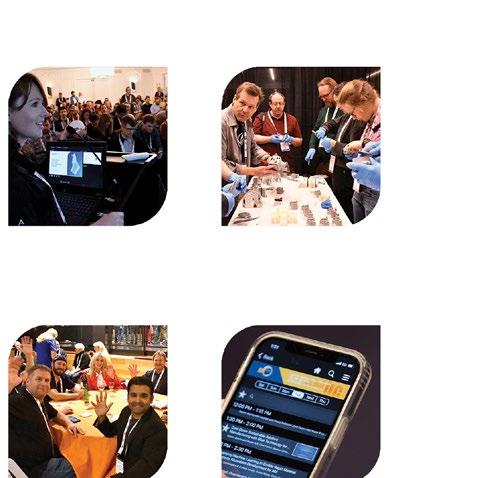


State of the PM Industry in North America: Data and insight from the Metal Powder Industries Federation
A highlight of the Metal Powder Industries Federation’s annual International Conference on Powder Metallurgy & Particulate Materials (PowderMet) is the ‘State of the PM Industry’ presentation, in which key statistical data is presented alongside analysis of the performance of PM technologies in major markets. This year’s speaker was Rodney Brennen, current president of the MPIF and Chief Operating Officer at Metco Industries Inc. Brennen’s presentation, published here in full, brings the current challenges facing PM into clear focus, as well as highlighting opportunities for growth.
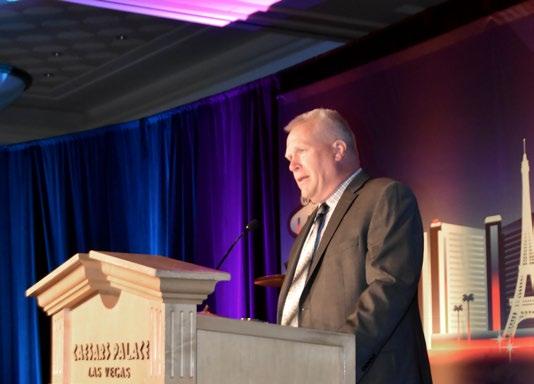
Powder Metallurgy is an advanced manufacturing metal‐forming process for producing high‐quality net‐shape components for a wide variety of applications. The PM process comprises four categories: pressed and sintered PM parts; Metal Injection Moulding (MIM); metal Additive Manufacturing (AM); and Hot Isostatic Pressing/Cold Isostatic Pressing (HIP/CIP).
PM’s high material utilisation promotes efficient use of raw materials, reduces energy consumption, and improves labour efficiency. These attributes have enabled PM to establish itself firmly in applications for the automotive, electrical, energy, aerospace, medical, defence, industrial, and consumer markets. To continue to grow, the PM industry must respond to the changing needs of existing and potential customers within these markets. Three major challenges that the PM industry faces are sustainability, the electrification of the automobile, and the acceptance of metal AM.
Sustainability factors are already influencing the PM industry’s customer procurement and invest-
ment decisions and these factors will become more substantial in the future. As part of the industry’s sustainability activities, it continues to take steps to ensure responsible sourcing of materials and compliance with conflict mineral legislation and other international trade agree -
ments as they evolve. PM technology is a resource‐efficient alternative to other metal‐forming technologies, providing endless opportunities for creating a more sustainable world. The industry is well positioned to support its customers’ Environmental, Social, and Govern -
NORTH AMERICAN METAL POWDER SHIPMENTS
ance (ESG) goals with domestic manufacturing that can reduce transportation’s impact on the environment, while utilising less material and energy compared with other manufacturing processes.
The automotive market is the largest consumer of PM parts. Government policies of increasing CAFE standards and reducing the dependence on fossil fuels, with a focus on green energy, has placed a heightened emphasis on the automotive industry to commit to the development of plug‐in hybrid (PHEV) and battery electric vehicles (BEV). While near term combined PHEV/BEV volumes are about 12% of the fleet, this shift has been felt across the PM industry in the reduction of internal combustion engine (ICE) development programmes.
Replacement of machined and cast parts, and the consolidation of parts into assemblies with metal AM components will affect the PM industry. While metal AM is capable of manufacturing unusual and complex component shapes that were previously difficult or even impossible to manufacture using other metal‐forming technologies, there are still significant challenges to overcome for metal AM to become competitive with other high‐volume metal‐forming technologies. Continued expansion of available metal AM materials is required for the acceptance in medical and flight critical applications. Higher throughput for automotive applications is needed for metal AM to reach its potential.
Metal powder shipments
The total estimated 2022 North American metal powder shipments decreased by 4.0% to 345,596 mt (381,032 st). Table 1 gives a detailed breakdown. Total iron powder shipments decreased by 4.5% to 293,243 mt (323,311 st). Estimated copper and copper base powder shipments decreased by 3.3% to 13,152 mt (14,500 st) and nickel powder decreased by 5.3% to 4,036 mt (4,450 st). Aluminium powder shipments increased by 1.4% and stainless steel shipments were the same as 2021.
Refractory powders had a mixed year in 2022 after robust shipments in 2021. Molybdenum shipments increased an estimated 23.4% to 695 mt (766 st). Tungsten powder shipments increased by an estimated 8.8% to 3,389 mt (3,736 st), and tungsten carbide powder shipments decreased by an estimated 8.8% to 4,870 mt (5,369 st).
PM and friction‐grade iron powder shipments were down 4.4% to 263,261 mt (290,255 st). Welding applications increased by 2.2% to 14,625 mt (16,125 st). Cutting, scarfing, and lancing applications increased by 1.1% to 831 mt (916 st). Miscellaneous uses decreased by 12.8% to 14,526 mt (16,015 st) (Table 2).
“Government policies of increasing CAFE standards and reducing the dependence on fossil fuels, with a focus on green energy, has placed a heightened emphasis on the automotive industry to commit to the development of plug‐in hybrid (PHEV) and battery electric vehicles (BEV)...”
MIM and AM powder producers continue to see increased demand for materials. The materials of choice are stainless steels and low‐alloy steels, but there is considerable developmental work being performed on aluminium, copper, titanium, tungsten, and an array of other metal powders and alloys. Total 2022 North American MIM and AM powder shipments increased by an estimated 5‐10% to 4,118,619‐4,404382 kg (9,080,000‐9,710,000 lb). Of this amount, an estimated 394,625 kg (870,000 lb) is dedicated to AM.
Conventional press and sinter PM parts production
As the automotive industry decreases its dependence on ICE drivetrains, sweeping changes present serious challenges and opportunities for press and sinter PM parts producers. The global shift to electric motors offers an opportunity for magnetic materials to come to the forefront over the next decade. For AC applications, there is increasing interest in Soft‐Magnetic Composite (SMC) materials with higher permeability, increased strength, and improved temperature resistance. Advanced motor designs are demonstrating the potential of axial‐flux motors (AFM) and transverse‐flux motors (TFM) utilising SMC parts for automotive and non‐automotive applications.
Many areas of PM can be considered a circular economy as they reduce material use; redesign materials, products, and services to
AMERICAN IRON POWDER SHIPMENTS
be less resource-intensive; and recapture ‘waste’ as a resource to manufacture new materials and products. New lean‐alloy materials are being developed by powder producers to meet current and future sustainability demands. One example is manufactured from 98% scrap with a low CO 2 footprint and fossil‐free electricity. The alloy does not contain copper, so it can be fully recycled at the end of its life. Additionally, continuous improvement of advanced premix lubricants, binders, and machining additives allows tailored customer support for all applications, ensuring a stable raw material supply chain for parts manufacturers.
Automation, reduced energy consumption, data monitoring, and efficiency continue to be the focus of equipment manufacturers for press and sinter parts production. Equipment manufacturers understand that the low‐hanging fruit is long gone for parts producers, so the development
of equipment to support value‐added, near‐net‐shape parts requiring high precision secondary operations has opened new opportunities.
There are mixed feelings from the press and sinter parts makers depending on the markets served. One view is that the new normal business level is steady. Non‐automotive projections range from high single‐digit to mid‐double‐digit growth. The current outlook for automotive applications is relevant to the make and model supplied, but most parts makers report the automotive market to be flat to mid‐single‐digit for the remainder of the year. However, there are reports of new applications launching for PHEV/ BEVs.
Electrification, supply chain localisation, and sustainability will remain key challenges for press and sinter parts producers for the near future, forcing automotive and industrial suppliers to adapt, evolve, and cultivate new opportunities.
“Equipment manufacturers understand that the low‐hanging fruit is long gone for parts producers, so the development of equipment to support value‐added, near‐net‐shape parts requiring high precision secondary operations has opened new opportunities.”
Metal Additive Manufacturing

Metal AM has the potential to change the production, time‐to‐market, and simplicity of components and assemblies. Continued growth depends on advancements in materials and material properties, processes, and manufacturing efficiencies. New materials developed to support the metal AM industry include high‐wear‐resistance alloys, water‐atomised iron, copper, tool steels, nickel‐based superalloys, cobalt‐based alloys, aluminium alloys, and titanium alloys for specialised applications.
Equipment manufacturers continue to answer the call. Research & development atomisers are being utilised for small production batches of powders. Furnace manufacturers are satisfying the needs of Binder Jetting (BJT) part producers. Metal AM part producers are taking advantage of Hot Isostatic Pressing to ensure the integrity of their parts. New software leverages advanced simulation to enable users to correct for distortion experienced by metal AM parts during
sintering due to gravity, friction, and shrinkage.
To expedite the acceptance of metal AM, the Association for Metal Additive Manufacturing (AMAM) recently issued two standard test methods for tension test specimens and anticipates the release of a new MPIF Std 35‐AM Materials Standards for Metal Additive Manufactured Parts that will standardise 316L and 17‐4 PH Binder Jetting stainless steels. After these materials are approved, work will commence on Laser Beam Powder Bed Fusion (PBF-LB) materials.
The overall outlook for metal AM is the same as for all advanced manufacturing processes –increased efficiency, reduced cost, and digitisation of the process are required for the technology to be accepted and mature. If metal AM lives up to its expectations, it could significantly affect the overall use of metal powders and positively influence market penetration. For many applications, metal AM will become increasingly competitive with all metal‐forming processes.
Metal Injection Moulding
The MIM market continues to be driven by individual sectors adopting the technology due to its superior net‐shape capability, reliability, and economic benefits. Many MIM companies see growth assisted by re‐shoring efforts, as end‐users shift from overseas suppliers to purchasing locally. Growth for all companies working in MIM depends on the success of part makers to gain increased market share against other metalworking technologies, and that is where R&D efforts are focused.
The MIM powder/feedstock suppliers outlook is positive for the near future. This positive view includes the stability of standard offerings like stainless steels, low‐alloy steels, and titanium alloys. There has been increased interest in superalloys that are coming into commercialisation. Efforts to tailor particle‐size distributions to increase part accuracy and develop powders/ feedstocks to manufacture larger parts continues to be a focus.
Demand for injection moulding equipment is stable as overall production demands are being met by existing equipment. MIM furnace demand continues to grow. Automation is expected to increase as skilled workers become scarcer.
The successful MIM2023 conference again reflected the robust MIM industry. Most MIM parts producers continue to experience double‐digit growth. The medical and firearms sectors continue to be the prime consumers of MIM components, but the demand for general industrial applications and automotive MIM components continues to increase annually.
Refractory metals
In 2022, the tungsten market continued robust growth in the semiconductor market, driving demand for high purity tungsten powder for new generation chips, and demand for simpler chips continues to outpace capacity. This industry will
remain strong for many years as the US is building Fourteen to twentyfour new semiconductor plants over the next three to seven years. While the US tries to replenish its depleting tungsten inventory, the defence items that use the metal have increased. The trend to source domestically has added to tungsten powder growth as companies try to minimise supply chains, risk, and dependence on China.
The demand for tungsten carbide for cutting tools and wear parts was moderately down compared with 2021. The market was negatively affected by a continued downturn in oil and gas exploration and coal production, weaker housing construction, and less ICE vehicles being produced. The growth of the EV will reduce the amount of cutting tools used in the production of vehicles.
The growth of EVs can be positive as $250‐300 billion investment in the construction of new electricity generation plants and hundreds of thousands of charging stations are expected over the next three to five years. Various tungsten alloys and tungsten carbide will be consumed in the construction and applications for the network and charging stations.
Oil and gas rig counts were up 28% at the end of 2022 compared to the year prior. At the end of 2022, the rig count was 863 compared with a twenty‐year average of 1,514. The past five‐year average was 801. Coal production was only moderately up 3% over 2021, making 2022 the third worst year in coal production since 1970.
North American molybdenum powder demand increased in 2022 by an estimated 23.4%. Molybdenum is used in PM applications for aerospace, automotive, medical, defence, industrial, and electronics. Demand remains strong and there are few substitutes available. Commencing in 2022, certain defence items that use molybdenum are being consumed by Ukraine at rates nearly impossible to sustain. This demand will continue, and efforts are underway to increase capacity and rebuild the US inventory.
The molybdenum industry experienced delays and shortages in raw material supply due to mine closures and reductions in output in Chile, China, and other regions, resulting in the highest molybdenum price in seventeen years. Molybdenum ore is often a by‐product of copper refining.
The outlook for Powder Metallurgy
Automotive
Over 70% of the iron powder shipped in North America is estimated to be used for parts in passenger vehicles. The US inventory‐to‐sales ratio dropped to its lowest point in February 2022, as Russia’s war on Ukraine resulted in gasoline price increases. During that same period, inflation also impacted new car prices, pricing many US consumers
out of the market, resulting in roughly 13.7 million vehicles sold, about 1.2 million less than 2021, for the lowest sales year since 2011. The current consensus is new‐vehicle sales will be 14.6 ‐15.1 million units in 2023. Each year, we estimate the amount of PM in a North American passenger vehicle. The large platform pick‐up trucks and SUV passenger vehicles consume an average 24.9 kg (55 lb) per vehicle, followed by the midsize platform crossover vehicles at 13.6 kg (30 lb) and the sedans at 9.1 kg (20 lb). Our best estimate for a PHEV is 6.8 kg (15 lb) and BEV, less the battery, is 2.3 kg (5 lb) of PM. Taking everything into consideration, the estimated average weight in a 2022 North American passenger vehicle was 15.9 kg (35 lb). The PM weight in passenger vehicles will likely decrease 2‐3% annually without new applications.
PHEVs and BEVs are being embraced at a rate higher than most people are willing to accept, with a 2.7% increase in 2022 over 2021. The number of BEV models nearly doubled from model year 2021 to 2022, going from twenty to thirty-eight, with the number of BEV models in 2022 surpassing the number of PHEV models for the first time since 2014.
Previously, PHEV and BEV manufacturers reduced time‐to‐market at any cost, but are now more cost-conscious, opening the door for PM as a solution. Later this year, the 2024 Mercedes‐Benz AMG will be powered by the first production axial‐flux motors, which can be compact and significantly more efficient than radial‐flux motors. This could be the opportunity the PM industry and SMC materials have been seeking, and the MPIF Standards Committee expects to issue its first SMC standards later this year.
Strategic and reshoring production of electromagnets and permanent magnets is a supply chain opportunity for the PM industry, including powder and component production. Development of rare‐earth‐free magnets would provide a competitive advantage over rare‐earth magnets.
About the Metal Powder Industries Federation
Metal Powder Industries Federation is the North American trade association formed by the powder metallurgy industry to advance the interests of the metal powder producing and consuming industries and provides a single point of reference for all MPIF member companies.
About APMI International
APMI International is a non‐profit professional society which promotes the advancement of powder metallurgy and particulate materials as a science. Its purpose is to
Aerospace
The aerospace industry must become more fuel-efficient to minimise fuel cost and respond to expected pressure to reduce greenhouse‐gas emissions. Structural optimisation will continue to search for light‐weighting opportunities that enhance structural performance, strength, and stiffness. PM Hot Isostatic Pressing (HIP) and metal AM technologies will expand opportunities in aerospace applications. The need for more efficient engines will continue to drive development of higher strength materials that can operate at higher temperatures. PM superalloys will continue to be used in extremely demanding applications.
Medical
The medical market encompasses a broad spectrum of sub‐markets or segments that include products ranging from cosmetic enhancements, dental, diagnostic equipment, hospital furniture and equipment, implants, medical mobility equipment such as wheelchairs, prostheses, pharmaceuticals, and surgical devices, to first aid and wound‐care products. As Metal Injection Moulding and metal AM continue to be identified as the solution, additional opportunities in medical and dental markets will develop.
Security and defence
Homeland security requirements will drive the development of innovative technologies to meet the detection, protection, mobility, lethality, and energy needs for defence. Advances in security screening, such as X‐ray scanning, will continue to make use of tungsten‐based collimators and shielding that are processed by PM. Refractory metals will continue to be used in kinetic‐energy weapons, hypersonic systems, and for maintaining proper weight distribution in missiles and aircraft. PM light‐weighting is a solution to improve fuel efficiency and enhance mobility. Components with unique combinations of properties may be produced by merging PM processes. Fabrication and repair of parts, both in manufacturing facilities and in the field, may be performed by metal AM technologies.
Other applications
disseminate and exchange information about PM and particulate materials through publications, conferences, and other activities of the society.
About the Center for Powder Metallurgy Technology
The Center for Powder Metallurgy Technology merges the academic and corporate powder metallurgy worlds together with a joint goal to promote PM industry progress. This progress depends on the business community and its drive for profit, and it also takes the educational community with its dedication to research and the pursuit of knowledge.
Applications such as telecommunications, computers, home appliances, lawn and garden, farm/ off‐road equipment, power and hand tools, recreation transportation, jewellery, sporting goods, and firearms, as well as other high‐tech industries, will need component solutions as they provide new products and services to consumers. Like the shift towards EVs, there will be new opportunities as the lawn and garden and agricultural manufacturers introduce batterypowered products for markets that have banned the use of fossil fuel powered devices and equipment.
These are just a few examples of creative uses and new opportunities for metal powders. We have a lot of advantages over other metal‐forming technologies. As an industry, we need to highlight our strengths and work together to advance the PM technology. We need to invest in R&D to create new applications and uses for metal powders and PM parts. We have a lot to look forward to as we advance PM technology.
www.mpif.org
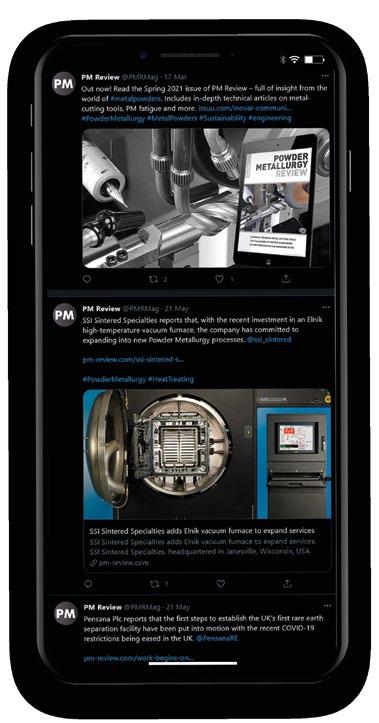




The leading trade show for additive manufacturing in France
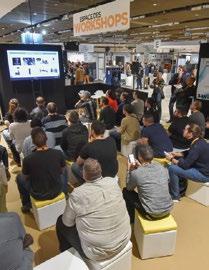
300
6 000
A 10 th edition dedicated to sustainability and circular economy.
3D PRINT, the leading event for additive manufacturing, will unveil the latest innovations and technologies for all materials through:

- Live demonstrations on the exhibitors’ booths,
- Cutting-edge conferences & technical workshops to meet the new challenges of the industry.
DASSAULT AVIATION

80
An event that gathers a lot of exhibitors to discover the latest solutions in additive manufacturing.”

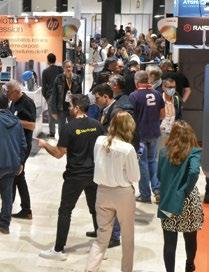
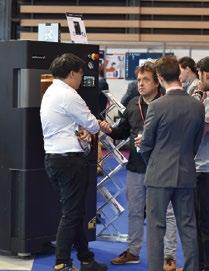
AUDI
It is a very valuable trade fair because it gives us the opportunity to discover a lot of innovations at every stage of the value chain.”
AIRBUS
3D PRINT allows us to see a large number of clients and meet new prospects”
3dprint-exhibition-paris.com

Powder Metallurgy parts
Press and sinter Powder Metallurgy has never been under more pressure to improve process energy efficiency whilst continuing to enhance the properties and performance of parts. Could the combining of a primary and a secondary process – sintering and oil quenching – open up new opportunities and reduce a component’s carbon footprint? Ravi P Malhotra, from Malhotra Engineers, Pune, India, shares a new ‘Sinter-Quench’ concept and considers both its technical challenges and commercial opportunities.
The conventional hardening of sintered ferrous PM parts, which involves oil quenching, washing, and tempering, is typically done in a separate process performed either in batch or continuous furnaces. The newly-coined term ‘Sinter-Quench’ is the short name for a combined process – ‘Sintering followed by Homogenising Carburising Oil Quenching’. By combining two important processes like the sintering of PM parts and their subsequent heat treatment in the same run in a common conveyor belt furnace, many advantages can be expected. However, such a combination furnace also presents challenges and requires certain precautions to be met.

One important consideration is that both processes need to operate continuously by using two furnaces in tandem and where process parameters need to be optimised. The combined Sinter-Quench process promises to conserve energy, as well as avoid the need to transport large volumes of PM components between different facilities for sintering and
then heat treatment. The conservation of furnace atmospheres will also occur because the endo-gas protective atmosphere used in the hardening process will move back into the delube/sintering section of the furnace along with the introduction of some additional nitrogen gas.

The combined atmosphere (endogas diluted with nitrogen) is then first used for lubricant removal from the green parts in the lubricant burn
off zone using a custom-designed hot air system. Therefore, both the hardening and delube/sintering atmospheres will be fully utilised with their combustible portions, including lubricant vapours, being emitted into the air as clean gases. The combined Sinter-Quench process is expected to contribute to a reduction in carbon footprint compared to using two separate delube/sintering and hardening processes.
Proposing a combined continuous ‘Sinter-Quench’ process for ferrous
“The combined ‘Sinter-Quench’ process promises to conserve energy, as well as avoid the need to transport large volumes of PM components between different facilities for sintering and then heat treatment. The conservation of furnace atmospheres will also occur...”
Why hasn’t this been done before?
Such a combined process may not have been considered previously due the discrepancy between belt speeds in sintering furnaces and hardening furnaces. This could be due to a lack of understanding of how to combine these two processes with a common conveyor system. Added to this, a quenching system using a conventional sealed quench continuous mesh belt furnace makes the belt movement on the return path to the front loading side more complicated.
An earlier sinter-hardening process that rapidly cools the sintered parts just after sintering, has been perfected in the past few decades. This process, however, requires the modification of alloys,
increasing the raw materials cost for some ferrous PM parts. However, the new combined Sinter-Quench process would be less costly than sinter-hardened, or sintered and separately oilquenched parts meeting similar customer property requirements.
The promise of enhanced metallurgical properties
One important area of study is the comparison between a sintered and cooled ferrous part which is later reheated for homogenising and carburising before being oil quenched, and that of a sintered part that is partially cooled from the sintering temperature to the homogenising temperature directly and
then carburised and oil quenched. For example, it needs to be established whether ferrous PM parts produced by the Sinter-Quench process will have enhanced metallurgical properties compared to parts subjected to two separate processes. The behaviour of the microstructures resulting from the additional cooling to room temperature and reheating from room temperature to hardening temperature stages must also be evaluated.
If we observe a batch sealed quench furnace, the initial preheating of the charge is done above the oil quenching tank using a partially-protected atmosphere coming from the heating chamber. The integrity of the protective atmosphere of a combined SinterQuench operation is of a higher quality than that of using two separate sintering and heat treatment processes where the subsequent operation may be in a batch sealed quench furnace or a continuous sealed quench furnace. Thus the parameters set by PM plants using the combined Sinter-Quench process would be less stringent and would certainly result in higher standards of PM parts .
While this may seem ambitious, if proven it could, in the near future, lead to a new family of heat treated ferrous PM parts produced at reasonable cost and with better properties and performance. In addition to the expected superior
“ In addition to the expected superior metallurgical results, this new process will also offer the benefits of improved process management, energy conservation, and utility savings. End users in the automotive sector can also expect better performance of critical PM engine or transmission parts...”
metallurgical results, this new process will also offer the benefits of improved process management, energy conservation, and utility savings. End users in the automotive sector can also expect better performance of critical PM engine or transmission parts when using the Sinter-Quench process.
Furnace operation
In the conventional hardening process, where cold sintered parts are rapidly preheated to 450°C in a sealed-quench furnace before being moved to the high temperature section at 850 - 890°C, stresses can cause surface cracks during oil quenching. In the new Sinter-Quench process, the transition between different process temperatures is very gradual, thereby avoiding stresses in the PM parts being heat treated. This would also potentially result in less surface defects as well as improved part toughness and wear resistance.
The design of the Sinter-Quench furnace takes into account the time required for different parts of the process to be matched with the length of the corresponding heating sections. In this way, proportionate amounts of time are given for lubricant removal, pre-sintering, sintering, intermediate cooling between sintering, and homogenising temperature whilst keeping the belt speed the same.
The protective gas for the hardening section of the furnace is endo-gas which travels in a metallic muffle from the rear most end of the furnace. The carbon potential of the endo-gas can be regulated to obtain the desired case depth on PM parts before they are oil quenched. The endo-gas atmosphere already has sufficient hydrogen content for it to be subsequently used as a good sintering atmosphere. Before the endo-gas enters the sintering section of the furnace it is mixed with nitrogen. This is useful for the control of dimensional changes required in the sintering process as
well as making the sintering furnace operation safe from any chances of back firing.
The lubricant vapours and combustible gases are burnt off in the beginning of the lubricant removal section giving extra energy for lubricant removal as well as providing the clean soot-free surface finish on PM parts that is needed for sintering and hardening. When through-hardening in the PM parts is required the endo-gas can be replaced by normal sintering
atmosphere, nitrogen and hydrogen introduced from the end of the hardening muffle along with LPG enrichment.
The intermediate cooling of PM parts prior to heat treatment will still be done by introducing nitrogen at the end of the sintering section. One can choose hardening furnace temperatures ranging from 850°C to 900°C depending on the PM alloys to be heat treated. This combined Sinter-Quench furnace can, therefore, become a single furnace to
“ In the conventional hardening process, where cold sintered parts are rapidly preheated to 450°C in a sealed-quench furnace before being moved to the high temperature section at 850 - 890°C, stresses can cause surface cracks during oil quenching. In the new Sinter-Quench process, the transition between different process temperatures is very gradual...”QUENCH CONVEYOR OIL TANK QUENCHING CHUTE Figure - Oil Quenching System and Elevator Conveyor. Fig. 2 Detail of the proposed Sinter-Quench furnace’s oil quenching system and elevator (Courtesy Ravi P Malhotra)
EXPECTED THERMAL PROFILE
meet many requirements of PM parts for different applications in the automotive industry.
The value of sinter-to-finish capability
It is important to consider that in normal sintering, and the subsequent hardening process, the sintered material is inspected prior to being sent to the next secondary operation. However, in this new combined Sinter-Quench process there is no scope for such inspection, and the
furnace design has to have all the prerequisites of a sinter-to-finish part capability. The current SinterQuench furnaces in operation using a hot air type of lubricant removal system along with a uniform heating system and process parameter optimisation, have already been proven to give good sinter-tofinished heat treated PM parts over a long period of time.
An electrically heated multizone lubricant removal section, which is capable of preheating air for burning off all of the lubricant while maintaining the PM parts’ carbon
content and other chemistry, has become a suitable choice. Additionally, the introduction of a flush of hot nitrogen at the end of the delubing section ensures that there is no residual lubricant remaining in the green parts. This process prevents any lubricant vapours from escaping towards the sintering section side which can result in surface decarburisation and other defects. The lubricant removal section also has the provision of adding hydrogen to nitrogen for flushing out lubricant vapours from the core of the PM green parts. In short, this system meets all of the requirements of a good lubricant removal system.
The sintering section of the furnace utilises an adequate number of heating zones for creating the desired thermal profile for oxide reduction and pre-sintering necking development for powder particles, and a zone where carbon can dissolve in the matrix of the alloy to be sintered. Sufficient control of power in each heating zone will ensure each part of the sintering temperature profile is completed in the respective location zones. This ensures good dimensional control of sintered parts. Similarly, the constant temperature zones will have enough capability to sinter the core of the parts and ensure
“ ...in normal sintering, and the subsequent hardening process, the sintered material is inspected prior to being sent to the next secondary operation. However, in this new combined Sinter-Quench process there is no scope for such inspection, and the furnace design has to have all the prerequisites of a sinter-to-finish part capability.”
that uniform microstructures will develop.
Once the sintering stage of the process is completed, the parts will be slowly cooled under a combination of nitrogen mixed with endo-gas in the intermediate portion connecting both segments of the sintering and hardening side of the furnace. Here, the core heat of the sintered parts is partially extracted to ensure that the uniformly heated parts are moving into the homogenising section of the hardening furnace supported with uniform heating of the muffle from both the top and bottom. The soaking time for homogenising would be adjusted by the choice of the number of zones in the hardening furnace, defined by process parameter settings.
Thermal profile and gas flow
The thermal profile of the entire furnace can be managed and controlled by the combination of the number of zones in the sintering as well as in the hardening furnace. The optimisation of process parameters in terms of temperature will become an important aspect of process control in all sections of the new combined Sinter-Quench furnace. The use of the already heated endo-gas from the hardening section selectively mixed with cold nitrogen will not only ensure intermediate cooling from the sintering temperature to homogenising temperature, but will also help maintain the dimensional integrity of the PM parts – a benefit compared to results from sinterhardening furnaces.
Whatever dimensional distortion that currently exists as a result of separate sintering and hardening cycles caused by cooling and reheating would be eliminated in the Sinter-Quench furnace setup. This will also become an important subject of research into alloy behaviour in this furnace system. In addition, more studies on the benefits of homogenising these cycles are likely to emerge, particularly with respect to cooling and reheating.
In the combined process, the core of the PM parts will be well heated before oil quenching, which may give better toughness properties to the PM parts.
Generally, the atmosphere gas flows in a sintering furnace are towards both open ends of the furnace, loading as well as unloading. This can be difficult to balance with a single gas entry point. The new Sinter-Quench furnace will have only rear-to-front atmosphere flow, which is easier to both control and utilise thanks to the increased dwell times that are made possible by having at least three vertical curtains, two of nitrogen and one of hot air. Lower atmosphere consumption would also increase gas temperature in such a furnace, resulting in improved product integrity and dimensional control of PM parts.
Considerations for the quench stage
The continuous oil quenching of PM parts falling into oil tanks through a chute spray of temperaturecontrolled oil will allow for closely controlled hardness in a narrow band on each quenched part. The hardness results have been found to surpass those of PM parts processed in batch sealed quenching furnaces. Gear teeth damage caused by sintered parts falling onto conveyor buckets and into the quench tank and extracting small PM parts
from the tank still requires some work. This is especially a subject of concern which requires future work in order to make large PM part hardening successful. Small nongear PM parts, however, do not have these issues. Whenever an oil tank is cleaned there are a good number of PM parts recovered. Over a period of a year this might amount to a tonne of small PM parts.
The controls required for the atmosphere of the hardening furnace are the same as those already used in conventional sealed quench furnaces, and the same applies to the oil cooling and filtration system. The conveyor belt material will be selected based on its tension and carbon pick up potential in order to ensure that it will have a reasonable life of six months or more. Changing the belt is not an easy task, especially when its return path has various obstacles, such as a water seal and return belt cooling muffle. Fire hazards within this system likely stem from return belt system failure. Therefore, alarms will need to be set up to avoid any air ingress to prevent quench tank and chute fires.
PM parts need to be directly loaded onto the furnace belt as loading trays and fixtures cannot go in this combined Sinter-Quench furnace. This is because such fixtures can cause belt jamming and quench tank conveyor bucket elevator jamming. The slow movement of the belt and improved utilisation of furnace atmospheres (due to repeated dwell times at
“Whatever dimensional distortion that currently exists as a result of separate sintering and hardening cycles caused by cooling and reheating would be eliminated in the Sinter-Quench furnace setup. ”
various locations during its travel from the rear to the front) in this Sinter-Quench furnace design should allow parts to be stacked or double loaded. This will certainly make the Sinter-Quench process a viable and productive feature on a PM plant’s shop floor. However, the drive system will have to be sufficiently robust in order to handle heavier loads with the resulting increase in belt friction compared to a normal sintering furnace.
Once established, the SinterQuench process can be extended by increasing the sintering temperature to above the normal limits. Instead of 1,120°C, we can design a sintering furnace for 1,250°C for enhanced alloy properties. However, belt selection will pose a major challenge in achieving this. Even in normal conditions there are few combinations of sintering and homogenising times. Minor alloy adjustments may be necessary in order to address this.
However, the Sinter-Quench process will once again put ferrous powder manufacturers in a new phase of material development to meet industry demands for lower cost PM ferrous alloys with enhanced properties. This new process may take far less time to establish itself than that of the sinter-hardening process which took many decades to perfect, and would be a significant development
in increasing the competitiveness of the global PM industry.
It is not just the reduced cost of ferrous PM materials or development costs that makes this new process attractive, but also the reduced costs achieved by combining the sintering and heat treatment processes. This will change the logistics of material movement to and from the PM plant to non-PM plants for secondary heat treatment operations, avoiding communication errors, and material loss outside PM plants. It can also impact the overall power consumption per unit weight of PM parts processing. The perfection of both sintering and hardening can also be seen in the near future with better control of both processes. Therefore, it will not be necessary to audit two separate locations. Additionally, stricter control of sintering and heat treatment will be integrated, resulting in more exact metallurgy of PM parts.
Conclusion
In conclusion, the new Sinter-Quench process will open up a number of new opportunities by simplifying and combining both a primary and secondary PM process into one. This development should have been made long before the sinter-hardening process was established. However, at that time mesh belt type hard -
ening furnaces may not have been perfected or commonly adopted by PM plants due to a heightened reliance on batch sealed quench furnaces. The Sinter-Quench process can now be perfected and utilised in a shorter development cycle time due to active participation of powder and sintering furnace manufacturers that also regularly build continuous hardening furnaces.
Pressure from end users of PM parts for cost reduction will encourage the PM industry to adopt this Sinter-Quench process earlier than expected. Cost savings will make PM a more attractive method of producing the desired PM parts through mass production. Savings in utilities, raw materials, and manpower costs coupled with error-free movement of semi processed PM parts will make this an compelling technology.
Contact and author
Ravi P Malhotra Malhotra Engineers Pune 411026 Indiaravipmalhotra@gmail.com
“It is not just the reduced cost of ferrous PM materials or development costs that makes this new process attractive, but also the reduced costs achieved by combining the sintering and heat treatment processes. This will change the logistics of material movement to and from the PM plant to non-PM plants...”
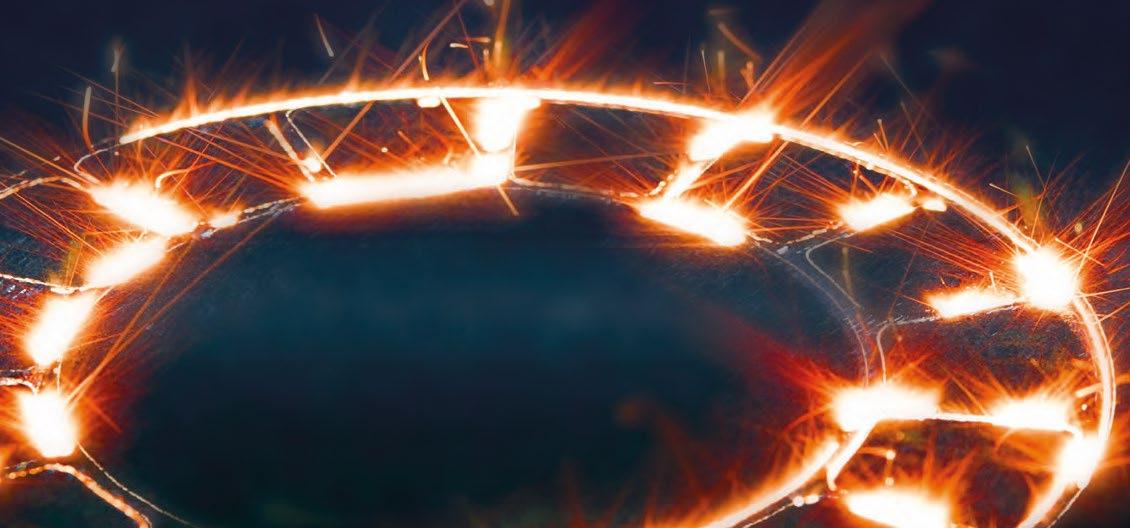
Accelerate
We Convene...
The most brilliant minds from industry and academia
We Coordinate...
Transformative technical and workforce data

We Catalyze...
High-value, high-impact collaborative projects
America Makes is the leading collaborative partner for additive manufacturing and 3D printing technology research, discovery, and innovation in the U.S. Structured as a public-private partnership, we innovate and accelerate AM/3DP to increase global manufacturing competitiveness.
Focused on additive manufacturing, America Makes is the first institute of the Manufacturing USA® network.
Learn more at www.AmericaMakes.us
Advertisers’ index & buyer’s guide
Advertise with us...
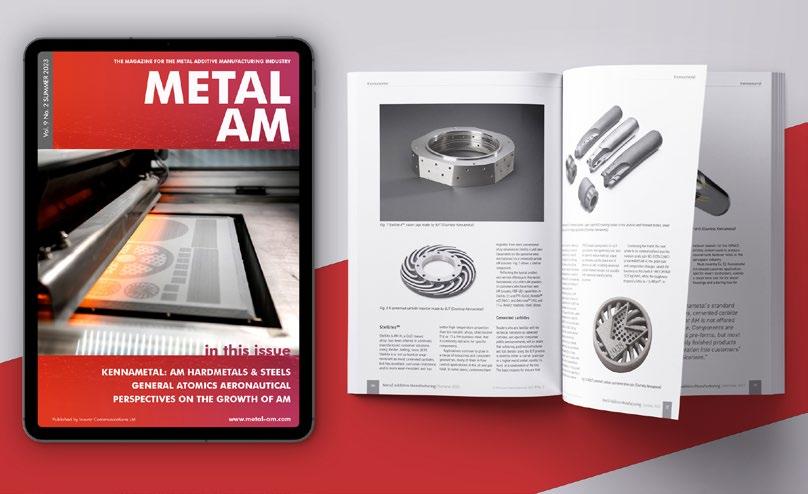
Industry events
Powder Metallurgy Review is dedicated to driving awareness and development of Powder Metallurgy and its related technologies. Key to this aim is our support of a range of international partner conferences. View our complete events listing on www.pm-review.com
2024 2023
Euro PM2023
October 1–4, 2023 Lisbon, Portugal www.europm2023.com
The Advanced Materials Show USA
October 3–4, 2023 Columbus, OH, USA www.advancedmaterialsshowusa.com
ASMET – Metal Additive Manufacturing Conference
October 17–19, 2023
Vienna, Austria www.mamc.at
Advanced Engineering
November 1–2, 2023
Birmingham, UK www.advancedengineeringuk.com
Formnext
November 7–10, 2023
Frankfurt, Germany www.formnext.com
MSIT Winter School – Seminar on Rare-Earth Materials & Magnet Technology
November 22–23, 2023
Stuttgart, Germany www.msiport.com/msit-school/msit-advancedschool/
European EV Lightweight Summit 2023
November 23–24, 2023
Frankfurt, Germany www.ecvinternational.com/ EuropeanEVLightweight/index.php
Partner with us...
MIM2024
February 26–28, 2024 Raleigh, NC, USA www.mim2024.org
PM China 2024
March 6–8, 2024 Shanghai, China en.pmexchina.com
AMUG 2024
March 10–14, 2024 Chicago, IL, ISA www.amug.com
RAPID + TCT 2024
April 23–25, 2024 Anaheim, CA, USA www.rapid3devent.com
Dritev
June 12–13, 2024 Baden-Baden, Germany www.vdiconference.com/dritev/
PowderMet2024/ AMPM2024
June 16–19, 2024 Pittsburgh, PA, USA www.powdermet2024.org/ www.ampm2024.org
PMTi 2024
September 4–6, 2024 Madrid, Spain www.pmti2024.com
World PM2024
October 13–17, 2024
Yokohama, Japan www.worldpm2024.com
If you would like to see your Powder Metallurgy related event listed in this magazine and on our websites, please contact Merryl Le Roux: merryl@inovar-communications.com

